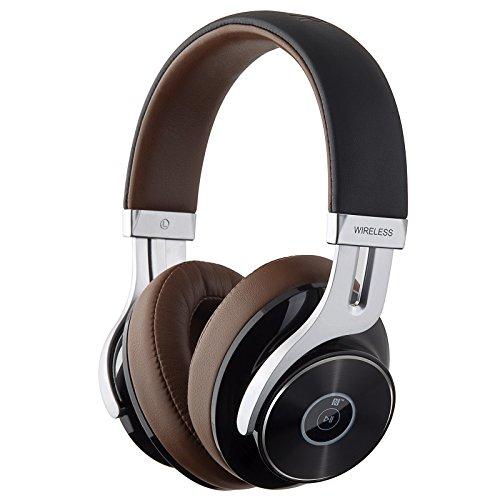You are using an out of date browser. It may not display this or other websites correctly.
You should upgrade or use an alternative browser.
You should upgrade or use an alternative browser.
Reviews by ClieOS
Filters
Show only:
Loading…
ClieOS
IEM Reviewer Extraordinaire
Pros: ToTL earbuds SQ
Excellent builds quality
Excellent builds quality
Cons: Expensive
Yincrow is no stranger to higher end earbuds. They first set the bar high with the original RW-1000 in 2019, then followed with a flagship challenger RW-2000 a year later. Now, they released another upgrade of the RW series, the RW-3000, aiming for the crown of the earbuds’ market.
RW-3000 pretty much retains mostly the same signature housing design element as RW series from previous years – based the same titanium alloy but with a fancier design and actually just a tiny bit smaller in size. All and all, it results in an lighter housing that is equally (if not more) comfortable in use. It still comes with more or less the same type of 4 cores braided silver wrapped single crystal copper wire like RW-2000 but in a different color combo and cryogenically treated. The true upgrade is however really in its heart – with a new dynamic driver with 4 layers fused high molecule diaphragm.
Spec
Driver: 15mm
Sensitivity: 113dB/mW
Impedance: 16 ohms
Frequency Response: 10Hz ~ 40kHz
Distortion: <1%
Channel Matching: <1dB
Rated Power 5mW
Max Power: 20mW

RW-3000 (left) vs RW-2000 (right)
The first thought that comes to my mind when trying to describe RW-3000 is the word ‘balanced’ – Yincrow has been tweaking / crafting its own sound signature since RW-1000 with its various reversions to try and find a compromise between technically strong vs musically pleasing. RW-2000 is where they find the middle ground, and RW-3000 is where they make it grand. You will find RW-3000 follows the same warmish sound signature from RW-2000, with a much bigger soundstage and better extension on both ends. The result is a sound that is well tuned and balanced, versatile on all genre and doesn’t bias toward any particular frequency. I won’t call it flawless per se, but certainly it doesn’t have any obvious weakness to speak of. It is what you will expect from a ToTL earbuds
Perhaps the only obvious issue - especially for those of who are familiar with the earbuds market and perhaps own the RW-2000, is that RW-3000 isn’t cheap - priced pretty close to the upper end of what you would expect from a ToTL earbuds these days. Given the level of performance and build quality, the price is still justifiable, thought certainly not quite as high in price/performance ratio as the previous RW models. The only thing I’ll ask is that instead of offering different version of termination (*3.5mm single-ended, 2.5mm Balanced and 4.4mm balanced), they could have just included an exchangeable plug with all the different tips, such as what FiiO had done on their EM5. That would have really perfected the whole package.
p/s: if you wonder why the tile said 'Holy Cow' - it is because Yincrow always adopts an bovine nickname in Chinese for the RW series. RW-1000 is 大牛 (= big cattle), RW-2000 is 野牛 (= bison) and RW-3000 is 天牛 (= heavenly cow). So holy cow?
RW-3000 pretty much retains mostly the same signature housing design element as RW series from previous years – based the same titanium alloy but with a fancier design and actually just a tiny bit smaller in size. All and all, it results in an lighter housing that is equally (if not more) comfortable in use. It still comes with more or less the same type of 4 cores braided silver wrapped single crystal copper wire like RW-2000 but in a different color combo and cryogenically treated. The true upgrade is however really in its heart – with a new dynamic driver with 4 layers fused high molecule diaphragm.
Spec
Driver: 15mm
Sensitivity: 113dB/mW
Impedance: 16 ohms
Frequency Response: 10Hz ~ 40kHz
Distortion: <1%
Channel Matching: <1dB
Rated Power 5mW
Max Power: 20mW

RW-3000 (left) vs RW-2000 (right)
The first thought that comes to my mind when trying to describe RW-3000 is the word ‘balanced’ – Yincrow has been tweaking / crafting its own sound signature since RW-1000 with its various reversions to try and find a compromise between technically strong vs musically pleasing. RW-2000 is where they find the middle ground, and RW-3000 is where they make it grand. You will find RW-3000 follows the same warmish sound signature from RW-2000, with a much bigger soundstage and better extension on both ends. The result is a sound that is well tuned and balanced, versatile on all genre and doesn’t bias toward any particular frequency. I won’t call it flawless per se, but certainly it doesn’t have any obvious weakness to speak of. It is what you will expect from a ToTL earbuds
Perhaps the only obvious issue - especially for those of who are familiar with the earbuds market and perhaps own the RW-2000, is that RW-3000 isn’t cheap - priced pretty close to the upper end of what you would expect from a ToTL earbuds these days. Given the level of performance and build quality, the price is still justifiable, thought certainly not quite as high in price/performance ratio as the previous RW models. The only thing I’ll ask is that instead of offering different version of termination (*3.5mm single-ended, 2.5mm Balanced and 4.4mm balanced), they could have just included an exchangeable plug with all the different tips, such as what FiiO had done on their EM5. That would have really perfected the whole package.
p/s: if you wonder why the tile said 'Holy Cow' - it is because Yincrow always adopts an bovine nickname in Chinese for the RW series. RW-1000 is 大牛 (= big cattle), RW-2000 is 野牛 (= bison) and RW-3000 is 天牛 (= heavenly cow). So holy cow?

Last edited:
View previous replies…
ClieOS
@Spie1904 The driver's diameter is roughly the same as a typical MX500 style earbuds, but the back chamber of the housing is smaller.
J
jognny4fingers
I am a bit of a bass head (just a little). I am quite familiar with the Yincrow X6. I'm quite fond of the X6's bass quantity and impact. Does the RW-3000 share the same characteristics as far as bass is concerned? Which do you think punches better in the low end?
sofastreamer
i own and absolutely love the Fiio EM5 and wonder how they compare. had anyone the chance to listen to both side by side?
ClieOS
IEM Reviewer Extraordinaire
Pros: Excellent all-rounder
Cons: Not cheap

DQSM is by no mean a prolific brand when it comes to releasing new product. Instead, it like to take its time and get things right. Its previous flagship, the Turandot, released back in 2019, is still in many ways a front runner in the current earbuds market with its unique euphonic and musical presentation. This time around however, DQSM has decided to tune its next flagship earbud, the PD21, with a different signature - one that focuses more on technicality.
Intended to be wore over the ear, PD21 comes in two flavors: 2 strands and 4 strands twisted cable (and also option of single-ended 3.5mm or balanced 4.4mm plug). While the 2 strands version is already impressive on its own, I do recommend the 4 strands version first if your budget allows, as it really ‘correct’ some of the minor shortcoming of the 2 strands version. In fact, PD21 was first originally released only as 2 strands but it was the early customer’s feedback that pushed DQSM to release the 4 strands version. So what’s the difference? Well, there is a very very minor harshness / brightness in the upper vocal of the 2 strands version that is smoothed out in the 4 strands version, making it almost as flawless as it can be. Do however note that PD21 comes with MMCX socket so you can experiment with different third-party cable if that’s your fancy, though personally I think the cable on the 4 strands version is already superb in every way and doesn’t really need replacing.
As said, while PD21 is the new flagship, it is not a direct upgrade of Turandot as far as sound signature goes. PD21 spots a more balanced and neutral sound that is technically better than Turandot in many ways - crisp and analytical on the treble and well extended on bass, with a big soundstage no less. There is almost no obvious flaw or shortcoming in the presentation to speak of. Perhaps the only thing PD21 isn’t quite as good as Turandot is that it doesn’t quite have the kind of euphonic quality in its mid-range that Turandot is great for. I’ll say instead of which is better in an absolute sense, they are more like compliment of each other with different style of tuning. Turandot really shines with vocal, where PD21 is versatile on all genre of music.
All and all, another excellent ToTL earbud from DSQM.
Last edited:
C
Chessnaudio
How does it compare to the Moondrop chaconne/ liebesleid?
ClieOS
Better, though not by a lot since technically I'll consider them to be all in the top tier category. Singature wise, PD21 will be somewhere in between the two, perhaps closer to Liebesleid.
M
meryjanek37
Sorry for bothering you. I checked your twitter account and you owns both "Dqsm PD21" and "Rose Martini". Can you give me a little bit of experience, compare the two earbuds?
ClieOS
IEM Reviewer Extraordinaire
Pros: Great SQ, custom earbuds shell, good build quality
Cons: High impedance requires a powerful source to shine
While probably best known for their budget offering as the Monk series of earbuds, VE has always maintain a strong lineup of flagship earbuds as well, from the original Zen, Zen 2.0 to the current Sun DICE – it is the latter that we will be looking here.

Build Quality
For almost $300, Sun Dice is definitely in the more expensive tier of the earbuds market (though far from being the most expensive, which can double what Sun DICE costs. There are even two other earbuds models in VE lineup that are more expensive than Sun DICE, which are the custom ordered Sun Copper and ZEN SU). As far as overall build quality goes, it is good and solid though perhaps not quite as eye catching and well finished as flagships from other brands. With Sun DICE, VE has moved away from using the more generic MX500 shell in the Zen series to adopting a new design. While it is always commendable for any earbuds maker to use their own earbuds design, it is noted that the honk shaped housing does protrude a bit more - coupled with 4 wires braided cable, the Sun DICE might not be quite as secured in the ears when compared to a normal MX500 shell. Of course, it also depends on the shape of your ears as well. I can actually get a decently good and secured fit with Sun DICE as long as I stays mostly stationary (*light movement is also okay, but definitely not for sport). Noticing the potential fitting issue, VE also includes some ear clips that will fit on the housing and provide a much more secured fit, though I don’t really need them myself. On a second thought, perhaps those ‘shark fin’ adapter could improve fit as well.
Sound Quality
VE didn’t release any real spec on the Sun DICE. A quick multimeter measurement shows that its resistance is around 180 Ohm, and likely the impedance won’t be too far off either. As a result, Sun DICE is not particularly easy to drive – while you can get it to be decently loud with most decent source, it will truly shine when driven with a fairly powerful amp – in my case, it is the iFi Audio Micro iDSD in normal mode (which can pump out almost 1900mW into a 16 Ohm load) that does the trick. A lesser source tends to make Sun DICE less edgy and dynamic. Also, I listened to the Sun DICE without any foam – VE does supply a good selection of foam with their earbuds, but they also usually tune their earbud to be used without foam and so that’s how I’ll listen.
So how does a properly driven Sun DICE sound like? Well, if you have heard the VE Zen 2.0 (or the ZOE) before, then the Sun DICE should be fairly familiar – as it carries the same smooth, warm, rich, relaxed yet engaging house sound that VE has on all its upper tier models – though Sun Dice is more like Zen 2.0 turned up to eleven. It has a much harder hitting low end, almost twice as wide a soundstage and ever slightly better extended / airier treble. Overall, it retains the classic VE house sound but manages to improve on all aspect, making it a grander sounding Zen 2.0 that is most versatile to different music genre than ever (though to be honest, I like my Classical with a little more upper edge).
p/s: Someone asked me about how the Sun DICE compared to VE original Zen (Zen 1.0) as the latter has a more engaging / energetic presentation which they prefer over the smoother sounding Zen 2.0. In comparison, Zen 2.0 is only a small step up from Zen 1.0 technically while Sun DICE is a more significant upgrade from Zen 2.0. The improvement (*better extended / airier treble, big soundstage and huge bass kick) that makes Sun DICE a more versatile sound also gives it a character that is more or less better balanced between the presentation of Zen 1.0 and 2.0. In another word, it has the best blend of the two. So regardless of whether you are looking for upgrade over Zen 1.0 or 2.0, Sun DICE should give you well-covered.

Sum up
Going from Zen 2.0 to Sun DICE is almost doubling the price, so does it double the performance? That will be hard to say as it is not easy to truly quantify audio performance with a number. But the improvement from Zen 2.0 to Sun DICE is not subtle by any mean, allowing VE to still compete with all the newer flagship earbuds from other brands. Anyone who enjoy the Zen 2.0 or VE house sound in general will definitely love the Sun DICE – of course, the prerequisite is that you do need a good source to drive it well. Something like a pig-tail style USB DAC that meant for smartphone will not make the cut. Give it a desktop level source and you will be rewarded.

Build Quality
For almost $300, Sun Dice is definitely in the more expensive tier of the earbuds market (though far from being the most expensive, which can double what Sun DICE costs. There are even two other earbuds models in VE lineup that are more expensive than Sun DICE, which are the custom ordered Sun Copper and ZEN SU). As far as overall build quality goes, it is good and solid though perhaps not quite as eye catching and well finished as flagships from other brands. With Sun DICE, VE has moved away from using the more generic MX500 shell in the Zen series to adopting a new design. While it is always commendable for any earbuds maker to use their own earbuds design, it is noted that the honk shaped housing does protrude a bit more - coupled with 4 wires braided cable, the Sun DICE might not be quite as secured in the ears when compared to a normal MX500 shell. Of course, it also depends on the shape of your ears as well. I can actually get a decently good and secured fit with Sun DICE as long as I stays mostly stationary (*light movement is also okay, but definitely not for sport). Noticing the potential fitting issue, VE also includes some ear clips that will fit on the housing and provide a much more secured fit, though I don’t really need them myself. On a second thought, perhaps those ‘shark fin’ adapter could improve fit as well.
Sound Quality
VE didn’t release any real spec on the Sun DICE. A quick multimeter measurement shows that its resistance is around 180 Ohm, and likely the impedance won’t be too far off either. As a result, Sun DICE is not particularly easy to drive – while you can get it to be decently loud with most decent source, it will truly shine when driven with a fairly powerful amp – in my case, it is the iFi Audio Micro iDSD in normal mode (which can pump out almost 1900mW into a 16 Ohm load) that does the trick. A lesser source tends to make Sun DICE less edgy and dynamic. Also, I listened to the Sun DICE without any foam – VE does supply a good selection of foam with their earbuds, but they also usually tune their earbud to be used without foam and so that’s how I’ll listen.
So how does a properly driven Sun DICE sound like? Well, if you have heard the VE Zen 2.0 (or the ZOE) before, then the Sun DICE should be fairly familiar – as it carries the same smooth, warm, rich, relaxed yet engaging house sound that VE has on all its upper tier models – though Sun Dice is more like Zen 2.0 turned up to eleven. It has a much harder hitting low end, almost twice as wide a soundstage and ever slightly better extended / airier treble. Overall, it retains the classic VE house sound but manages to improve on all aspect, making it a grander sounding Zen 2.0 that is most versatile to different music genre than ever (though to be honest, I like my Classical with a little more upper edge).
p/s: Someone asked me about how the Sun DICE compared to VE original Zen (Zen 1.0) as the latter has a more engaging / energetic presentation which they prefer over the smoother sounding Zen 2.0. In comparison, Zen 2.0 is only a small step up from Zen 1.0 technically while Sun DICE is a more significant upgrade from Zen 2.0. The improvement (*better extended / airier treble, big soundstage and huge bass kick) that makes Sun DICE a more versatile sound also gives it a character that is more or less better balanced between the presentation of Zen 1.0 and 2.0. In another word, it has the best blend of the two. So regardless of whether you are looking for upgrade over Zen 1.0 or 2.0, Sun DICE should give you well-covered.

Sum up
Going from Zen 2.0 to Sun DICE is almost doubling the price, so does it double the performance? That will be hard to say as it is not easy to truly quantify audio performance with a number. But the improvement from Zen 2.0 to Sun DICE is not subtle by any mean, allowing VE to still compete with all the newer flagship earbuds from other brands. Anyone who enjoy the Zen 2.0 or VE house sound in general will definitely love the Sun DICE – of course, the prerequisite is that you do need a good source to drive it well. Something like a pig-tail style USB DAC that meant for smartphone will not make the cut. Give it a desktop level source and you will be rewarded.
Last edited:
ClieOS
IEM Reviewer Extraordinaire
Pros: Solid performance for the price, improved 2nd generation TWS. Can use regular eartips.
Cons: No aptX support.
The name Massdrop is a well-known and has been fairly well-received by us HFer - while the company doesn't exclusively deal with audio gears, it has however brought us quite a few of really excellent audio products as well as collaborations from various audio companies - from well known huge international brands to lesser known small businesses that might otherwise hard or expensive to find for many whom don't live on certain part of the world. The community driven company has however just changed and simplified its name to 'Drop', and the NuForce MOVE true wireless (*TWS = True Wireless Stereo) IEM will be the first product that come with the new branding.
A big thanks to Drop for sending me a pre-production MOVE for an honest review - it is currently still in pre-order phase (during writing) and you can get more detail here: https://drop.com/buy/drop-nuforce-move-wireless-in-ear-monitors
SPEC
Driver: Knowles balanced armature
Bluetooth: BT5.0 with HSP v1.2, HFP v1.7, A2DP v1.3, AVRCP v1.6
Codecs: SBC, AAC
Wireless range: Up to 33 ft (10 m)
Frequency response: 20 Hz–20 kHz
Impedance: 22 ohms
Sensitivity: 105 dB +/- 3 dB at 1 kHz
Microphone sensitivity: -38 dB +/- 3 dB
IEM waterproof rating: IPX5
Charging: USB-C
Battery life: 24 hrs total (6 hrs + 3 full charges—18 hours—from charging case)
Weight of IEMs: 0.4 oz (10 g)
Weight of charging case: 1.9 oz (53 g)
As far as the overall design and spec goes, there is really nothing that stands out particularly with the MOVE - which is kind of a good thing as far as TWS IEM is concerned. I have a pair of Purdio AirOn by Odoyo from the early days of TWS back in 2017 - the shape of the earpieces really leaves a lot to be desire and certainly the early version of TWS isn't performing nearly as good as I hope it can be - these issues are of course not unique to the AirOn but also fairly common among early TWS IEM. Many of these early TWS IEM were trying to make their shell as small as possible, and thus ending up having odd angle and shape on the nozzle, not to mention many of them use super small, for TWS only eartips. The combination of them both make my AirOn rather uncomfortable in any extended period of use and I can't change the eartips to something better as common eartips will not fit into the tight fitting charging case. Keeping the AirOn and its early version of TWS all sync up can also be challenging, especially if you are not in the most ideal of environment (*minimum interference from other wireless communication, such as WiFi and other BT devices). Music is generally fine but watching video is mostly out of the question due to really bad latency. Of course the current 2nd generation of TWS, such as the one in MOVE, has mostly conquered these issues. First, the shape of the MOVE makes more ergonomical sense as it resembles what a normal IEM will look like. Secondly, the nozzle as well as the charging case can take a normal eartips - in fact, I am using SpinFit on mine and it fits into the case just fine while adding extra comfort in use. The included eartips are fine to use by the way, but extra option is never a bad thing when it comes to fit on an IEM. Lastly, like many of the the new generation of TWS, the two side of the MOVE can sync up fast enough that watching YouTube is actually no longer a nightmarish experience. However, do note that under really heavy wireless interference, the MOVE will still have syncing issue. I was in a hospital's side hall the other days waiting for a check up and I was having sync issue with MOVE - It was a small waiting area with a lot of computers and medical equipment, and probably over a dozen smartphones mostly trying to stream video and music. So, if you are planning to use a Bluetooth headset in similarly noisy (*wireless wise) environment, TWS might not be the best choice. Otherwise, I generally have no issue with using MOVE around the house and in the city, for music, video as well as taking calls.
Last by not least, the face plate of both earpiece on the MOVE are each a single button, and can be use for some basic remote control - for example, pressing the right side for 2 seconds is volume up, the left side for 2s is volume down. You can also play / pause / forward / backward / take call / on / off / voice assistant / paring using various combination of press and holding time. I won't bother you with detail but I do want to make note that the earpieces will automatically turn off when put back into the charging case. Likewise, they will turn themselves on when they are taken out - therefore there isn't any real need to manually turn the MOVE off by pressing the bottom. You can just put them back into the case when you are done and take them out when you need them. One extra note, putting the earpieces with flat battery into the charging case for 15 minutes should give them enough juice for more than an hours. The battery in the earpieces is rated for 6hrs use, which I have not fully tested as I rarely use an IEM for that long continuously, and every time I put the earpieces back into the case they just top themselves up. As such I barely able to drain them more than 70% before I went home and able to charge them all up with an USB adapter again.
Sound Quality
The overall sound signature of the MOVE is on the slightly warm and smooth side of things (*FR curve is available on the product link above). I'll personally say it is comparable to most entry level wired IEM under $100 - not a giant killer per se but I don't detect any noticeable shortcoming either. It is overall an enjoyable sound that ever so slightly on the fun side, going well for most genre of music but perhaps not analytical or specious enough for instrumental or classical. The single BA driver from Knowles was surprisingly full sounding, which reminds me more of a dynamic driver rather than a balanced armature. In fact, I thought it was a dynamic driver for the first few day of use as I didn't read the online product page carefully at first when I received the MOVE and the pre-production unit didn't come with any document. In any case, I reckon a full sounding BA is not a bad thing at all.
With the MOVE, we are stuck between SBC and AAC as the two main BT codec. Of course, if you are using an Apple products, these are the only two codec you can use anyway. For Android smartphone with Oreo (8.0) and up, AAC codec will be used, otherwise it is SBC. I would have love to see aptX being supported as well, but whether or not it will be beneficial to SQ is less clear cut. Studies and measurement have shown that, while aptX is definitely better at high bandwidth situation (*single device, minimum wireless interference), it can be outperformed by SBC in low bandwidth situation (such as noisy or a TWS situation) as the higher compression and transmission rate on aptX might end up creating more artifact than SBC. Of course, there is also the issue of cost on implementing aptX as it might require better chipset, bigger battery and licensing from Qualcomm. For those who are on Android, you can tweak your BT setting slightly if you enable the developer setting. For me, my smartphone uses AAC codec with MOVE most of the time and I didn't really notice any particularly ill effect when streaming music and video since AAC is kind of a mid-point between SBC and aptX. At the end, TWS is a product of convenience at its heart - if you really demand the best of SQ, then higher end BT adapter like the FiiO BTR3 or EarStudio ES100 are probably more suitable than a TWS setup. Perhaps with future BT chipset release we might finally have a TWS setup that can address all the remaining issues of the current generation.
Summery
As an early TWS adopter with the Purdio AirOn, I actually never really warmed up to it due to its shortcomings, many of which are common among TWS of its time. The 2nd generation TWS like the MOVE on the other hand has finally delivered most of what TWS has promised - with balance between decent SQ and actual usability. There are tons of cheap TWS IEM coming out of China these days as well as a handful of more expensive options from the usual big brands. The MOVE is nicely slotted between them as a solid choice with a likable sound and a practical design. With its current pre-order price, it actually comes out cheaper than how much I have paid for my Purdio AirOn some 2 years ago, so what's there not to recommend? It should definitely be in your shortlist if you are looking into a TWS setup for everyday use.
ClieOS
IEM Reviewer Extraordinaire
Pros: Good SQ for the price, excellent build quality.
Cons: Missing some essential remote control feature.
If you ever did any kind of research when shopping for a PC’s loudspeaker in recent years, then you will know Edifier is one of the biggest name around. Though they did purchase the world famous electrostatic headphone maker Stax back in 2011 and seems to have finally decided to gear up for the (then and now) blooming headphone market, their headphone offering remains mostly as a side business to their core loudspeaker business even till these days. To be frank, having reviewed the fairly good but not exactly remarkable H850 some 3 years ago, I wasn’t really expecting a lot when I was given the chance to review their new wireless Bluetooth headset model, the W855BT, thinking it might be just another less-than-serious effort. Oh my, how wrong was I.


Spec
Bluetooth v4.1
NFC supported
Wireless Range: about 10m
Supported Profiles: HFP, HSP, A2DP, AVRCP
Codec: SBC, APTX
Frequency Response: 20Hz ~ 20kHz
Transducer: 40mm Dynamic
Impedance: 32ohm
Sensitivity: 98dB
MSRP: USD$150
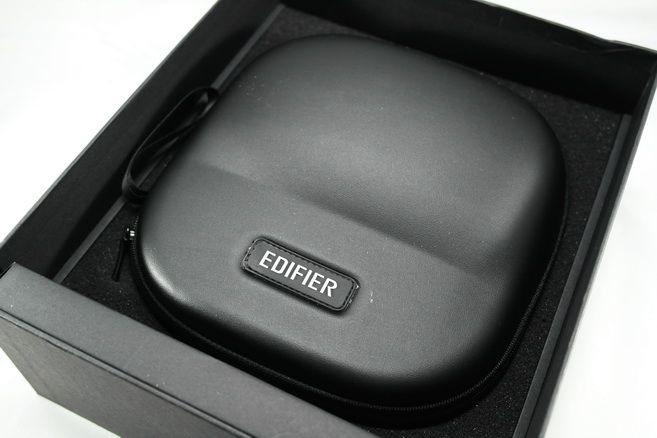

Packaging, Accessories and Build Quality
W855BT comes in a classic if not rather typical of a paper box. There is really nothing to be said about the box itself except that I noticed a slight oddness - the picture of the headphone is showing its back instead of its front. I know a lot of people simply won’t bother reading manual and even marking of any kind - so there is a good chance someone will just wear the headphone backward (where left side is on the right and vice versa) and might not get as good a fit on the ears as it can be, which could very well degrade the SQ. Of course, this is really not that big a deal and I could very well just overthinking it.
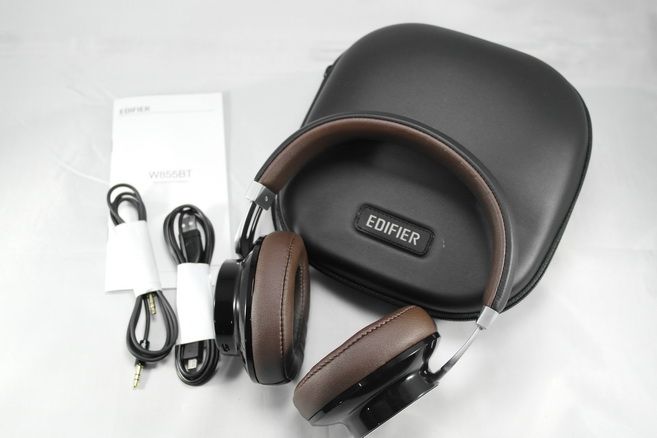

Accessories include a hard case, a USB cable for recharging and a 3.5mm-to-3.5mm stereo mini-jack cable, which allows you to continue to use W855BT as a regular wired headphone in case when the battery is drained. However, it will only works as a pure headphone instead of a headset when used in wired mode as the cable itself doesn’t support a mic, though you can easily find an aftermarket that has a mic built-in. Lastly, I do hope Edifier had have included a soft pouch as well. The hard case is really nice, but it is also a bit bulky to put into tight space like a back pack and when you want quick access / storage.
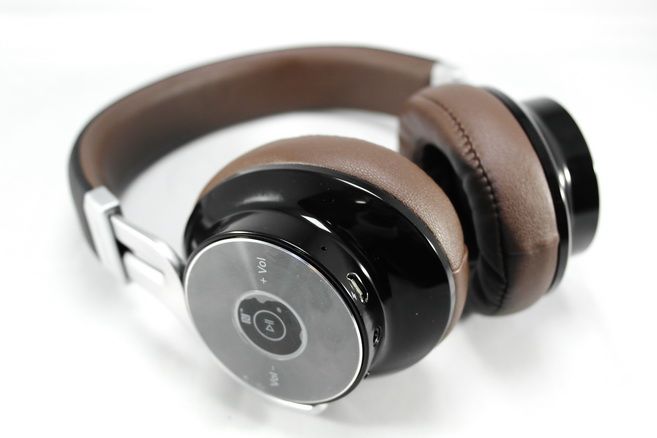
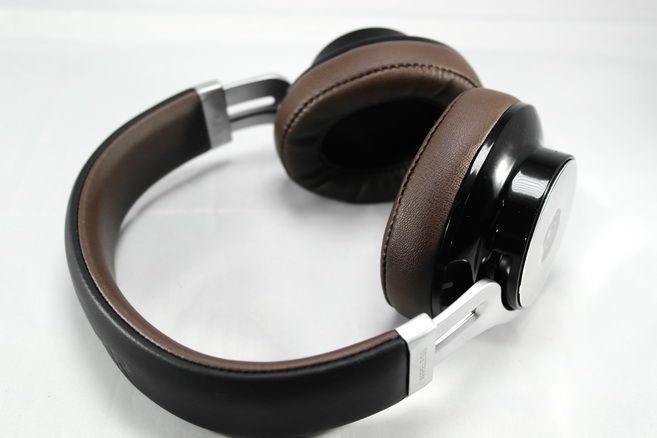


Build quality is where W855BT surprises me the most. Consider that the Edifier wired headphone flagship, the H850, has a rather bland design – the W855BT in contrast looks absolutely positively luxurious - the faux leather doesn’t look nor feel cheap in any way, the plastic ear cup has a decent glossy piano finish and the silver arm on the headband are all very well polished aluminium works instead of plastic. While the ear cups don’t have a collapsible / foldable design, it does offer enough swing on the arms to sit comfortable on my head. However, W855BT is certainly not perfect either – one minor complaint I have is the remote control that built into the right side ear cup – It has NFC for quick connection to a source (smartphone for most cases), there is a central button for play/pause and volume up/down on both side of the central button (*volume control only applies to the headset and is independent of the source, which can be a good or bad thing depends on your habit. I will suggest you max out on your source volume and use W855BT’s volume control instead). However, where is the next/previous buttons? There is more than enough space on top/bottom of the central button to implement them and they should be quite easy to do as well (as it is almost universally supported by almost every Bluetooth chipset out in the market). It just doesn’t seems logical to skip such basic a function. Also, the volume buttons are rather shallow and don’t feel very clicky. Sometime I can’t tell whether they are pressed or not when there is no music playing. But these isn’t that big a deal since you can tell the volume has changed while music is playing. All and all, despite these minor issues, the W855BT still looks and feels akin to what companies like Sony would have easily sold for double or even triple the price tag, and that’s saying a lot for the W855BT.
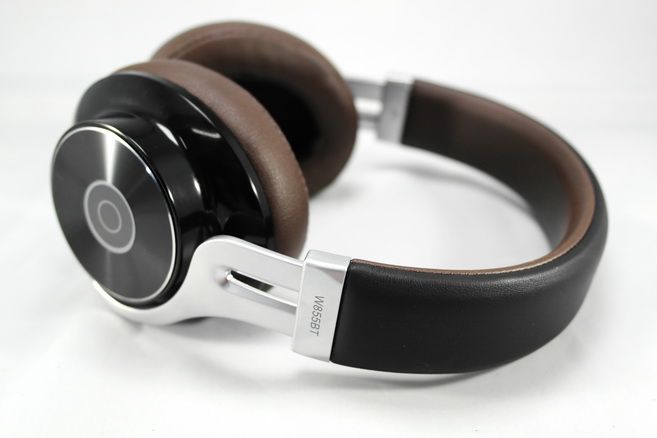

Sound Quality
Of course, it doesn’t matter how a headphone looks if it doesn’t perform. Bluetooth has always had a less-than-stellar reputation since its early days of existence. The preconception is bad enough that many headphone user simply dismiss Bluetooth as a whole without giving it a fair trial. However, the overall SQ that a well implemented modern day Bluetooth headset can offer these days has far exceeded those of the yesteryears, and I dare to say even the most serious of headphone user will sure to be impressed by some of the best offering on market todays. Now going back to the topic of W855BT - it comes packed with aptX codec that will give better transient and transparency than the basic SBC (SubBand Codec) used on normal Bluetooth audio. However, it does require that the source is aptX compatible as well. If you don’t know what aptX is – it is basically a near lossless codec used to communicate between the headset and its source that is superior sounding to SBC. As aptX is currently owned by Qualcomm, the most popular smartphone processor supplier around, it is also getting widely adopted in the market. Many audiophiles digital audio player (DAP) manufacturers have also began to support aptX on their newer line of DAP in recent years. So if you ever wanting to buy a Bluetooth headset, be sure to consider one with aptX support first.
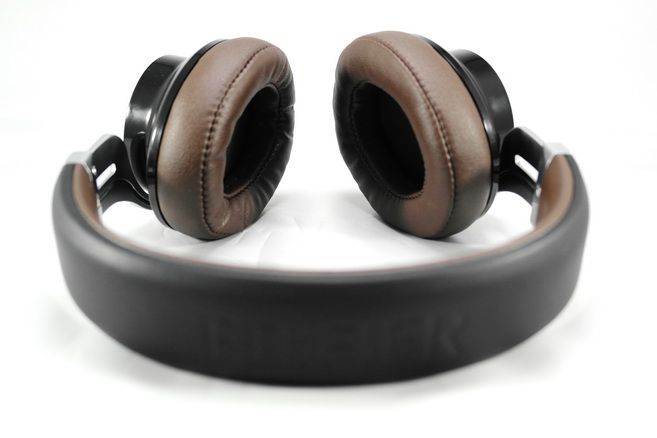

So how does W855BT actually sound in Bluetooth mode? The first thing to note is that, despite having a close numbering scheme to its wired elder siblings, the H850, the two are quite different in presentation. H850 is a neutral, if not sterile sounding headphone that perhaps best suited for monitoring purpose; the W855BT on the other hand is more vivid and dynamic. But don’t get me wrong and think W855BT might be very coloured sounding – I will still consider that its overall frequency response and balance to be close to neutral, but it is not sterile for sure. Bass is just about neutral in quantity and with very good impact and depth. Definitely not something for bass head but otherwise you shouldn’t be disappointed. Mid is close to being neutral in quantity as well, but with a small hint of sweetness so vocal doesn’t sound dry in anyway. Treble has good extension with decent sparkle and micro detail. Lower treble / upper vocal does however have a little more highlight – not enough to be called sibilance, but more of a slight brightness. Soundstage isn’t the widest ever, but still above average for a closed design.
While quite good sounding on its own right, does W855BT stand up to other similar Bluetooth headset on its price range? Having been a lifelong fan of wireless audio, I also have Sony MDR-XB950BT (MSRP USD$199) and Pendulumic Tach T1 (MSRP USD$249) in my collection, where both do support aptX and should offer some quick contrast. In comparison, MDR-XB950BT is definitely more on the smoother and warmer side of the presentation, which shouldn’t be surprising since XB stands for Sony’s ‘eXtra Bass’ series of headphone that is aimed for bass head. With one press on its ‘bass boost’ button, the MDR-XB950BT can pump out an incredible amount of bass. However a fair warning is that it is really not for any listener that has any sense of accuracy in mind. It is a pure bass, pure head shaking fun kind of headset. Tach T1 on the other hand has more a mild V-shaped sound that offer a balance between being fun sounding and still having some sense of accuracy. It also has a small size for being an on-ears design rather than an over-the-ears like the other two, but the smaller ear cups do somewhat restrict the soundstage – still very good for a closed on-ear headset, but definitely not up to the same level of the other two. Besides that, the only real downside with Tach T1’s sound is that, due to its more V-shaped presentation, it can get a bit edgy on the lower treble on higher volume. Keep it on lower volume however, it will behave nicely. Out of the three, my preference goes to W855BT for overall sonic performance and balance. Tach T1 is a close second while MDR-XB950BT will only serves better with bass head. The only aspect that I think both MDR-XB950BT and Tach T1 are better than W855BT is that both have full set of remote control function built into the headphone.
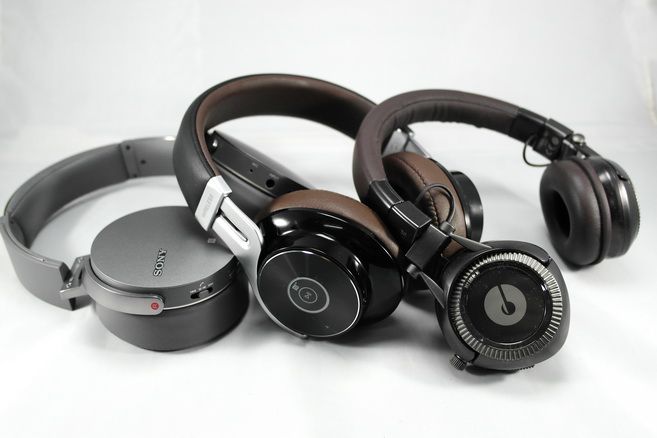

From left: Sony MDR-XB950BT, Edifier W855BT and Pendulumic Tach T1






























Last but not least, how does W855BT sound in wired mode? With FiiO X5III (which has aptX support) as source, I listened to W855BT both with Bluetooth and with the included 3.5mm cable. General wisdom usually will say that a direct connection is always going to be better than a wireless connection. But in the case of W855BT, I am not sure I’ll agree. In wired mode, W855BT seems to lose a decent amount of its mid-range body and thus a big amount of its musicality. Between the two, I am definitely finding that the Bluetooth mode is more pleasing to the ears. Regardless, having an extra option to use W855BT in wired mode is never a bad thing.
In Sum


Rumour and speculations have been circling around Edifier’s headphone business for years, and finally now the company really has something to show for. While the W855BT isn’t exactly high end by any mean, it did show that Edifier has put in some serious effort this time around. If they can continue the good works, who to say they won’t be a force to be reckoned with in a couple of years? For now, if you are planning to spend US$150 for a wireless headset, W855BT is certainly a strong contender.
A thanks to Edifier Malaysia for the review sample.
sledgeharvy
I just stumbled on to this model on Amazon, pretty cool how you just happened to review it. Very good detailed review by the way. Thank you for sharing your thoughts.
edifier
Hello,
Thanks for the review. The next/previous track option is there. The manual may not be clear but if you hold the volume up/down buttons for a couple seconds it will skip the track.
Keep up the good work,
Thomas
Thanks for the review. The next/previous track option is there. The manual may not be clear but if you hold the volume up/down buttons for a couple seconds it will skip the track.
Keep up the good work,
Thomas
D
dnagreg
Alguém pode me ajudar?
Falando apenas na qualidade do som, principalmente na região intermediária em vocais masculinos encorpados e calorosos (comum em cantores de rock, por exemplo), de qual vou gostar mais? Edifier w855bt ou fiil t1 pro? Sei que são produtos diferentes, mas adoraria saber. Obrigado.
Falando apenas na qualidade do som, principalmente na região intermediária em vocais masculinos encorpados e calorosos (comum em cantores de rock, por exemplo), de qual vou gostar mais? Edifier w855bt ou fiil t1 pro? Sei que são produtos diferentes, mas adoraria saber. Obrigado.
ClieOS
IEM Reviewer Extraordinaire
Pros: Good build quality overall with excellent sound quality to match
Cons: Not much.
The first time I saw the Oriveti Primacy in person was a few months ago on a busy street in Singapore, wore by a stranger, not far away from E1 Audio, a small audiophile headphone store. As a self-proclaimed IEM addict, I tend to recognize just about every IEM I saw in ‘the wild’ – but that time I didn’t, which sort of bother me (*and of course I found out what it is in E1 Audio right then). Not long after that, Oriveti Primacy seems to be everywhere – on the street, on Amazon.com, and on quite a few review site gaining a lot of traction. That kind of sum up my impression on Oriveti as a company: like a ghost one day, and then suddenly the new internet viral sensation the next day - and that is with just one IEM model. Truth being told, I still don’t know much about the company after all these time, but I do have the Primacy with me now and I can finally understand the popularity – it is an IEM that is meant to impress from the first listening.
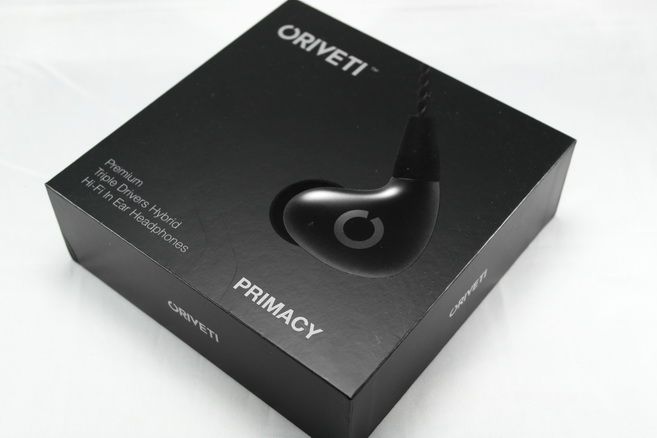
Spec
Driver: Exclusive Dual Armature Driver + 8.6mm Dynamic Driver
Impedance: 11 Ohm
Frequency Response: 20 - 20000Hz
Sensitivity: 107+-3dB/mW, 1000Hz
Distortion: Less than 1%
Plug: Gold-plated 3.5mm Stereo Plug
Cable: 1.2 m

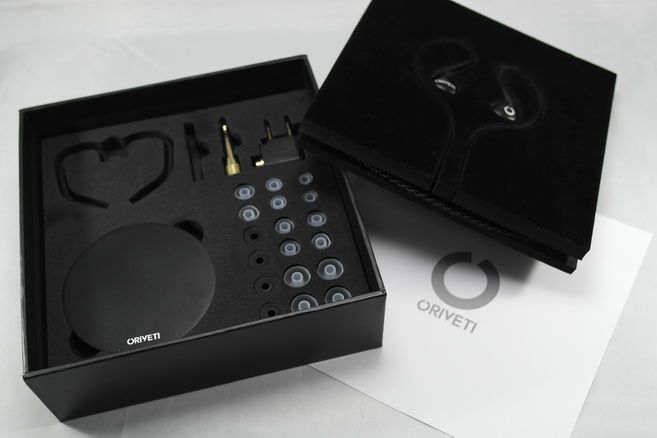
Packaging, Accessories and Build Quality
The packaging is classy but not fancy – heavy stocked black paper box with simple design. Inside sits the Primacy on a velvety pad, with all the accessories underneath the pad. For accessories, you will find a pair of ear guide, an earwax cleaning stick, 6.4mm-to-3.5mm adapter, airplane adapter, 8 pairs of silicone eartips (2 pair per size with 4 different sizes), 2 pair of foam tip as well as a good looking cylindrical aluminum case. All the accessories are pretty good in quality. If I were to suggest a change, I think I’ll make the aluminum case a screw top and right now it is keep tight purely on the vacuum created when the top and bottom half open up, which means it isn’t exactly a very tight fit. But it probably is more of a home storage as it is a bit too heavy to carry around. You might want to invest in a fabric or pleather hard case instead for out and about.
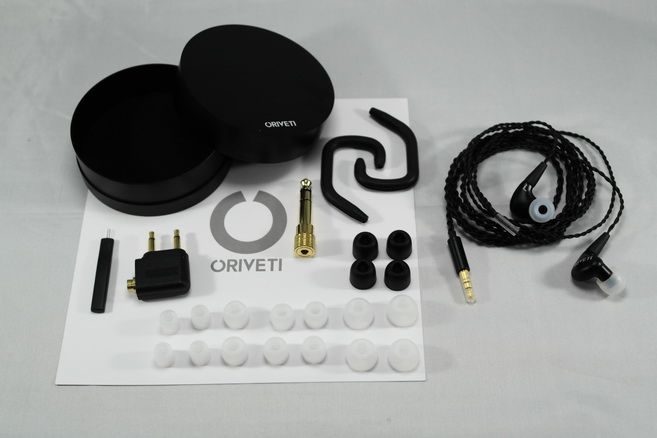
Build quality is quite excellent. The earpiece itself is entirely made out of aluminum and looks to be finished very well. The cable employ MMCX connector, which isn’t my favorite, but it is still pretty decent overall. It is braided and quite soft with no microphonics to speak of. Of course, you can always swap out the cable if you want. In fact, Oriveti does sell an upgrade cable themselves. One thing to note is that the nozzle on Primacy also houses the dual BA driver inside, so it is a little on the wider side. It shouldn’t be a problem for most except those who have very small ear canal. Beyond that, the actual size of the whole ear piece is actually very small for a triple driver hybrid and looks rather stealthy when use.
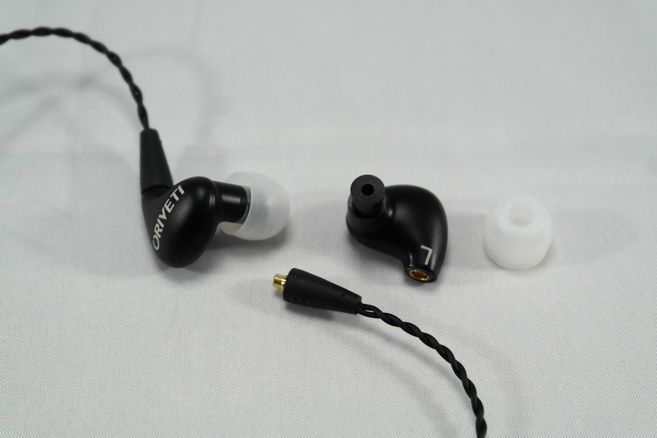
Sound Quality
Primacy’s sound signature is kind of hard to sum up – it has sort of a warm + sweet sound with good treble presence, and I would have called it more of a V-shaped sound if there is a little less mid. But kudos to Oriveti, Primacy’s sound signature strikes a really good balance from bass to treble that it has somehow gotten the best of both worlds – with a mix of richness and texture of a warm + sweet sound signature, plus a good bass / treble extension and excellent soundstage of a V-shaped sound, resulting in a fun and energetic sound. Bass reaches down very deep, more than enough in quantity to satisfy even bass head though the decay is slightly short from actual bass perfection. Mid is well textured and decently sweet but it isn’t upfront. Vocal is placed just far enough to give good spacial orientation but not too far to sound dull. Treble is well extended and quite crisp. Not detail as a true analytical sounding IEM but it complements the mid and bass quite well. Soundstage is well above average, though not the widest around.
Overall the Primacy is fairly well composed. The fun and energetic sound goes well with just about every kind of mainstream music, but it isn’t extreme enough that you can’t listen to classical or indie without feeling funny. The strength in Primacy is in its versatility, and you can’t always say the same to many of the $300 IEM out there.
See basic measurement here.
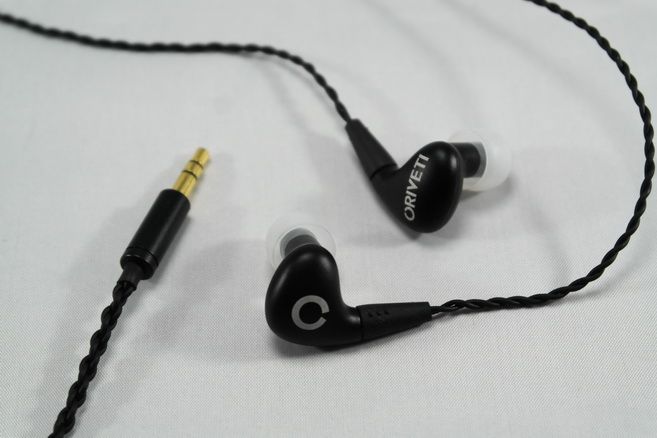
Sum-up
These days you can get dual or even triple driver hybrid for very cheap price. Besides many small Chinese brands, even Xiaomi and its design’s arm 1More have pumped out one after another sub-$100 hybrid IEM that almost seems to make it look easy. But the truth is, as good as those cheap hybrid are, their sound quality really doesn’t go beyond the scope of their price range, as even sub-$100 single dynamic driver IEM are still relatively good sounding these days. Adding one or two driver of the same or different kind doesn’t automatically make an IEM good sounding - it is still good tuning and solid engineering that determines the sound quality. That perhaps is why Primacy is worth three times the price over the 1More triple driver hybrid. Making something cheap doesn’t always equal to making something better. In this case, you will be glad you didn’t pick up 1More just to save some money over Primacy. It is well worth it.
A thanks to Oriveti for the sample.

Spec
Driver: Exclusive Dual Armature Driver + 8.6mm Dynamic Driver
Impedance: 11 Ohm
Frequency Response: 20 - 20000Hz
Sensitivity: 107+-3dB/mW, 1000Hz
Distortion: Less than 1%
Plug: Gold-plated 3.5mm Stereo Plug
Cable: 1.2 m


Packaging, Accessories and Build Quality
The packaging is classy but not fancy – heavy stocked black paper box with simple design. Inside sits the Primacy on a velvety pad, with all the accessories underneath the pad. For accessories, you will find a pair of ear guide, an earwax cleaning stick, 6.4mm-to-3.5mm adapter, airplane adapter, 8 pairs of silicone eartips (2 pair per size with 4 different sizes), 2 pair of foam tip as well as a good looking cylindrical aluminum case. All the accessories are pretty good in quality. If I were to suggest a change, I think I’ll make the aluminum case a screw top and right now it is keep tight purely on the vacuum created when the top and bottom half open up, which means it isn’t exactly a very tight fit. But it probably is more of a home storage as it is a bit too heavy to carry around. You might want to invest in a fabric or pleather hard case instead for out and about.

Build quality is quite excellent. The earpiece itself is entirely made out of aluminum and looks to be finished very well. The cable employ MMCX connector, which isn’t my favorite, but it is still pretty decent overall. It is braided and quite soft with no microphonics to speak of. Of course, you can always swap out the cable if you want. In fact, Oriveti does sell an upgrade cable themselves. One thing to note is that the nozzle on Primacy also houses the dual BA driver inside, so it is a little on the wider side. It shouldn’t be a problem for most except those who have very small ear canal. Beyond that, the actual size of the whole ear piece is actually very small for a triple driver hybrid and looks rather stealthy when use.

Sound Quality
Primacy’s sound signature is kind of hard to sum up – it has sort of a warm + sweet sound with good treble presence, and I would have called it more of a V-shaped sound if there is a little less mid. But kudos to Oriveti, Primacy’s sound signature strikes a really good balance from bass to treble that it has somehow gotten the best of both worlds – with a mix of richness and texture of a warm + sweet sound signature, plus a good bass / treble extension and excellent soundstage of a V-shaped sound, resulting in a fun and energetic sound. Bass reaches down very deep, more than enough in quantity to satisfy even bass head though the decay is slightly short from actual bass perfection. Mid is well textured and decently sweet but it isn’t upfront. Vocal is placed just far enough to give good spacial orientation but not too far to sound dull. Treble is well extended and quite crisp. Not detail as a true analytical sounding IEM but it complements the mid and bass quite well. Soundstage is well above average, though not the widest around.
Overall the Primacy is fairly well composed. The fun and energetic sound goes well with just about every kind of mainstream music, but it isn’t extreme enough that you can’t listen to classical or indie without feeling funny. The strength in Primacy is in its versatility, and you can’t always say the same to many of the $300 IEM out there.
See basic measurement here.

Sum-up
These days you can get dual or even triple driver hybrid for very cheap price. Besides many small Chinese brands, even Xiaomi and its design’s arm 1More have pumped out one after another sub-$100 hybrid IEM that almost seems to make it look easy. But the truth is, as good as those cheap hybrid are, their sound quality really doesn’t go beyond the scope of their price range, as even sub-$100 single dynamic driver IEM are still relatively good sounding these days. Adding one or two driver of the same or different kind doesn’t automatically make an IEM good sounding - it is still good tuning and solid engineering that determines the sound quality. That perhaps is why Primacy is worth three times the price over the 1More triple driver hybrid. Making something cheap doesn’t always equal to making something better. In this case, you will be glad you didn’t pick up 1More just to save some money over Primacy. It is well worth it.
A thanks to Oriveti for the sample.
ClieOS
IEM Reviewer Extraordinaire
Pros: Excellent SQ, Good EQ.Implementation, Tons of Power.
Cons: Included 15V iPower adapter received interference from main on rare occassion.
It has been 3 years since my original review of iFi Audio’s original micro iUSB Power, iDAC and iCAN. Fantastic when they are first released and, in my opinion, still quite relevant after all these time (*with the testimony that they still form part of my PC audio chain), the competition has however certainly stiffen up a bit. In respond to the fast pace of the current digital audio gears market, iFi Audio has decided to update the original models with newer parts, better tech, still excellent sound quality and always a big bang for the buck. The nano iUSB3.0, micro iDAC2 and iCAN SE are priced $199, $349 and $390.
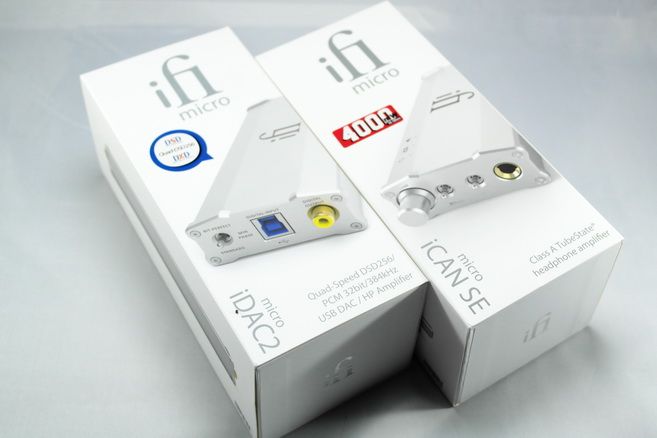
(nano iUSB3.0 package not show)
Spec
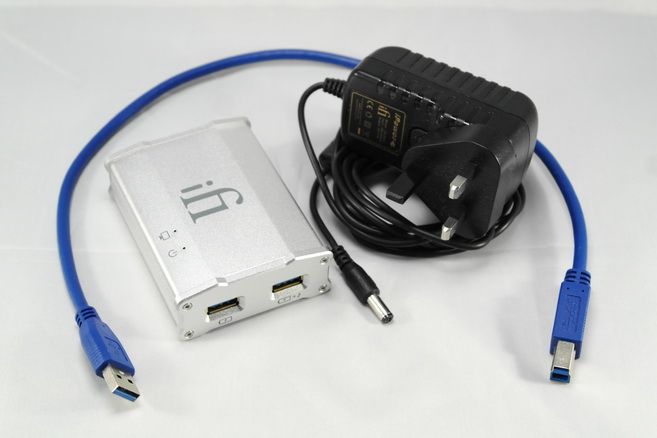
(Accessories not fully show)
Nano iUSB3.0
Output Voltage: 5V±0.5%
Output Current: 2.1A
Noise floor: 0.5uV (0.0000005V)
USB 3.0: Ultra-speed 5.0Gbps
Input Voltage: AC 100 – 240V, 50/60Hz (iFi iPower included)
Power consumption: Less than 15W (includes powered USB device)
Dimensions: 87(l) x 68(w) x 28(h) mm
Weight: 141g (0.31 lbs)
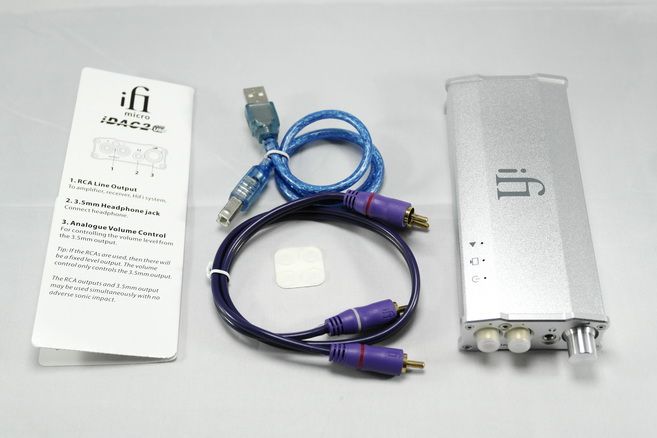
Micro iDAC2
Input: USB3.0 (USB2.0 compatible)
Output:
SPDIF RCA (only PCM up to 192KHz)
Audio RCA
3.5mm Headphone
Formats:
44.1/48/88.2/96/176.4/192/384KHz PCM
2.8/3.1/5.6/6.2/11.2/12.4MHz DSD
353/384KHz DXD
DAC: Bit-Perfect DSD & DXD DAC by Burr Brown (1-DAC Chip; 2-Channel; 4 Signals)
Filters:
-PCM: Bit-Perfect/Minimum Phase/Standard, Digital filters selectable
-DSD: Extreme/Extended/Standard, Analogue filters selectable
-DXD: Bit-Perfect Processing, Fixed Analogue filter
Line Section:
Output: 2.1V (+/-0.05V) fixed
Zout: Under 39 Ohm
SNR: Over 114dB (A) @ 0dBFS
THD+N:
Under 0.0025% @ 0dBFS (100k Load)
Under 0.025% @ 0dBFS (600R Load)
Headphone Section:
Output:
Over 350mW (2.40V) into 16R (<10% THD+N)
Over 34mW (3.20V) into 300R (< 0.1% THD+N)
Zout: Under 2 Ohm
THD+N: Under 0.0025% (1V into 16 Ohm, 0dBFS)
SNR: Over 114dBA (3.2V into 16 Ohm, 0dBFS)
Power consumption: Less than 1.5W
Dimensions: 158(l) x 68(w) x 28(h) mm
Weight: 265g (0.58 lbs)

Micro iCAN SE
EQ: Two levels selectable 3D Holographic Sound and XBass
Gain: 0dB, 12dB and 24dB user-selectable. Full discrete, Class A
Buffer Stage: TPA6120A2
SNR: Over 123dB (A)
THD: Under 0.003% (400mV/150R)
Frequency Response: 0.5Hz to 500KHz (-3dB)
Output Impedance: Under 1 ohm
Output Power: Over 4000mW (16Ω)
Output Voltage: Over 10V (over 600Ω)
Input Voltage: AC 100 – 240V, 50/60Hz
Power Consumption: Under 5W idle, 12W max.
Dimensions: 158(l) x 68(w) x 28(h) mm
Weight: 216g (0.48 lbs)
Accessories and Build Quality
Design, accessories and build quality wise, the new offerings are pretty much top notch and on par with their older sibling. I have said in the past that I am not that biggest fans for iFi long and narrow Micro casing, but that has become part of iFi identity. With micro iDAC2, you will get some rubber feet, a short USB cable and RCA cable. Micro iCAN SE, there are the power adapter, short RCA cable, 6.4mm-to-3.5mm stereo adapter, a flat head screw driver for adjusting gain, 3.5mm interconnecting cable and rubber feet. With nano iUSB3.0, there are USB3.0 cable, rubber feet and power adapter. One thing to note is that the power adapter of all of current iFi has been upgraded to the iPower adapter, which offer even cleaner power than the original ULN adapter. To nit-pick, I am not too fond of the new customized 3M rubber feet that is lower than the original 3M feet, making it harder to stack the iDAC3 and iCAN SE on top of each other as the metal casing are touching each other. At the end, I end up getting some taller original 3M rubber feet so I can stack them up for a cleaner looking. Of course, whether this will bother you or not totally depends on how you like to arrange your iFi gears.
Gain and Hiss
Line-out on iDAC2 is the fairly standard 1.98Vrms, headphone-out gain is just over 5dB, or about 3.6Vrms at max. Gain on iCAN SE is however selectable at either 0dB, 12dB or 24dB. Assuming iDAC2 as source, most headphone and IEM will be more than enough with 0dB gain. Hard-to-drive full sized might benefit from the 12dB gain, where 24dB gain with just over 11Vrms output is probably reserved for really low sensitive headphones.
Hiss is very well behaved on the IDAC2. With the hiss-prone Shure SE530, I didn’t notice any hiss until around 2~3 o’clock on the volume knob – which is of course impossible to actually listen on such a high volume during music playback. I think it is safe to say there is little to no chance you will notice any hiss with sensitive IEM on normal use.
Hiss on iCAN SE is mostly positive. I say ‘mostly’ because as far as hiss goes, it is on par with the original iCAN where low level hiss is only noticeable with volume knob going pass 12 o’clock. But I also noticed the 15V iPower seems to be more sensitive to voltage irregularity and ground loop from the main, which could give a very faint switching noise in rare occasions. If I switched to using the 9V iPower to power the iCAN SE, the faint switching noise will go away. Not really sure if that’s due to the particular 15V iPower adapter I have as I don’t have another 15V iPower adapter to compare it to, plus I can’t replicate the situation easily. Will probably have to wait till I get another 15V iPower to double check though I think it is more likely a freak incident.
Sound Quality
As usual, we start with the look at some basic measurement. As far as RMAA goes, both iDAC2 and iCAN SE pass with flying color with flat frequency response end-to-end, and great looking numbers on crosstalk, SNR and IMD. Then again, these result are to be expected, given the original IDAC and iCAN already measure quite well. Output impedance on iDAC2 headphone-out is measured and calculated to about 1.9ohm, in line with the listed spec, and it has plenty of output power to my dummy load. iCAN SE fairs even better with just 0.9ohm output impedance and higher output power. All and all, the technical side of both iDAC2 and iCAN SE seem very solid.
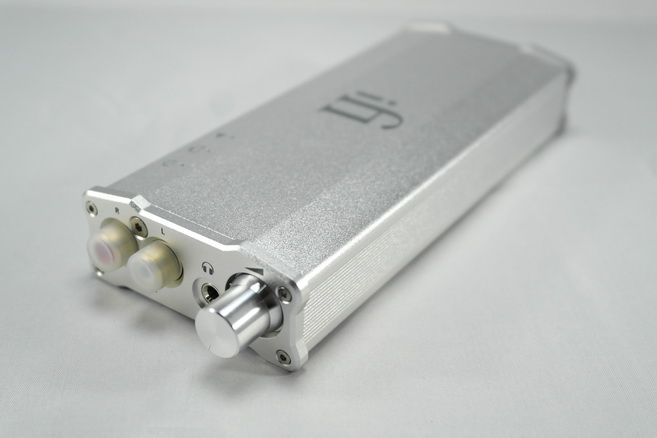
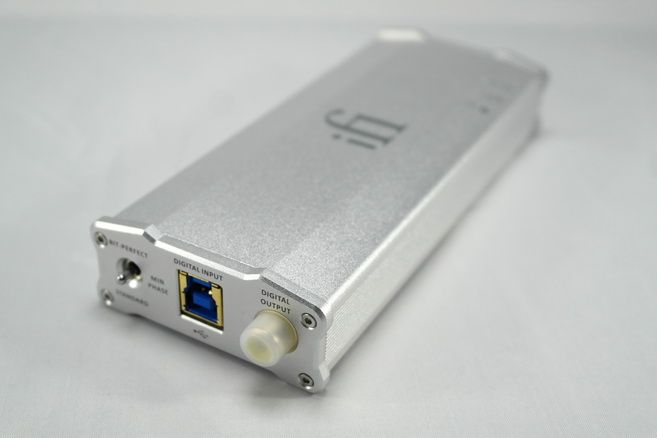
Let begin with iDAC2. Besides sharing the same name with the original iDAC, there is really nothing really similar between the two. Where the original iDAC is meant to be a step beyond entry level USB DAC, the iDAC2 simply takes it to the next level. Instead of the entry level ESS chip, the iDAC2 uses the same DAC chip as better sounding iDSD series. I think it is fair to say iDAC2 is really more of a desktop version the iDSD series, where performance is in between the nano iDSD and Micro iDSD. On the DAC section, it shares many of the same features as nano iDSD like native DSD playback and filter selection (see my micro iDSD review for more detail on these features). On the analog section, it is a noticeable improvement over nano iDSD but not as robust as the flagship micro iDSD. One of the minor complaint I have with nano iDSD is that its headphone amp section is kind of the weakest link. But that is not the case on iDAC2. The bigger size and no need of portability means a better implemented analog section after than DAC stage, which no longer give me the feeling that there is a noticeable weak spot in the chain. While it is still not the best sounding amp section you will find on a DAC/amp, it is at least not a let-down in anyway and should drive most headphone quite well. I would think the word ‘content’ is what coming to my mind when using iDAC2 as a standalone unit – that I can be quite happy to use it as it is and there isn’t the need to ‘fix’ it in some way to make it better. Where with the original iDAC, I am more incline to use it with the iCAN because I know on the back of my head that I want just a bit more.
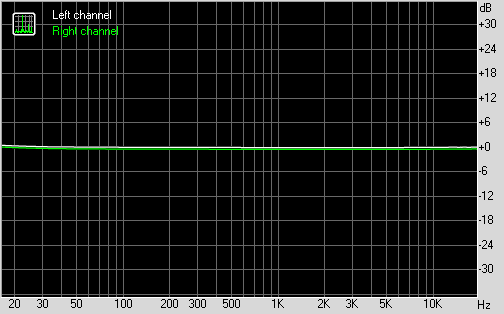
micro iDAC's FR curve
So how is the subjective difference between iDAC2 and iDAC? Gone is the clean, slightly sterile sound of the ESS chip and in is the more musical presentation of the Burr Brown DAC that I am quite fond of. Same can be said on the headphone amp section as well. While it is still reference flat on FR curve, the overall tonal is richer and more musical than the colder sounding iDAC’s headphone-out. The dual-mono like implementation of two MAX97220 headphone driver gives plenty of power and control. The lower in overall gain makes it a bit more IEM friendly than the iDAC. It doesn’t have the output to handle really hard-to-drive headphone but that is what iCAN SE is for. All and all, the iDAC2 is a solid upgrade over the original model. I’ll dare to even say it is almost a quantum leap in design.
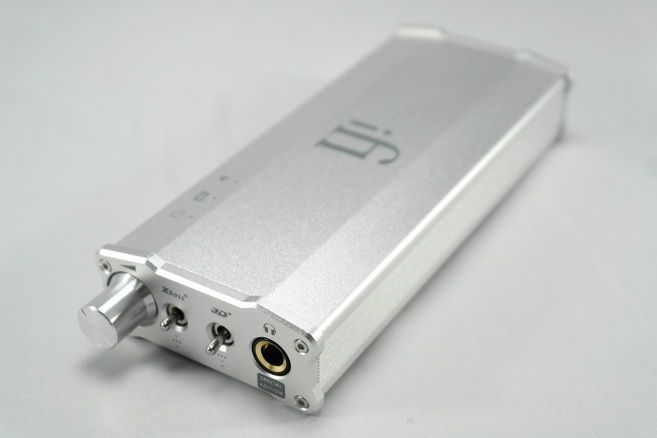
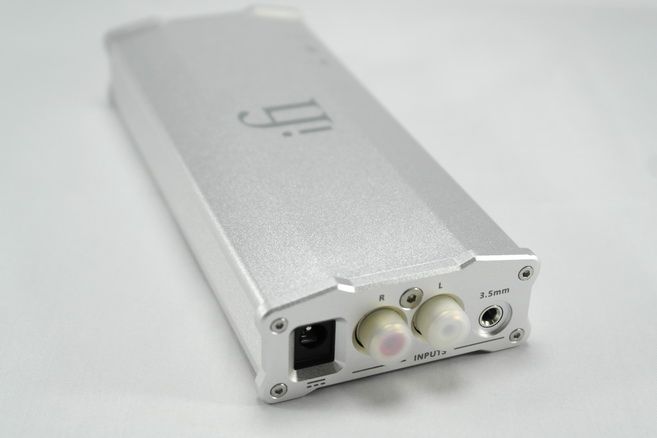
Different from the radical change between iDAC and iDAC2, there are more similarities between iCAN SE and iCAN. Their basic topology shares the same DNA with TubeState Class A discrete gain stage followed by TPA6120A2 headphone buffer stage. Of course, the excellent 3D Holographic Sound (3DHS) and XBass are there as well. The main difference is that the iCAN SE, with a higher voltage supply from the 15V iPower adapter, can pump out 10 times the power (4W vs. 0.4W) over the same 16ohm load when compared to the original iCAN as well as having a higher maximum gain for the most demanding of headphone.

micro iCAN SE's FR curve
So does the iCAN SE sounds the same as the already great iCAN? Well, yes and no. It is easy to tell that iCAN SE inheres the same underlying tonality and transparent presentation from iCAN, but there are a few subtle improvement. First, the overall image is about 10% larger on the iCAN SE, which isn’t much but enough to paint out a larger sonic picture and result in a slight improvement over positioning. Secondly, the extra power really helps to tighten up the presentation with crispier top notes and harder hitting low notes, which gives better definition. These improvements are not night and day by any mean, but enough to be noticeable in a volume matched comparison. I guess it is rather befitting that iFi has managed to make the iCAN SE even more ‘special’ than the original iCAN.
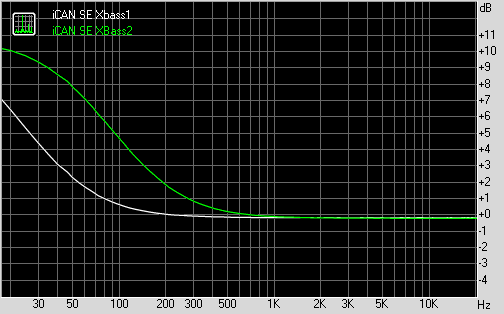
micro iCAN SE's XBass
Lastly, the implementation on iCAN SE’s 3DHS and XBass seem to be identical to that of the original iCAN. 3DHS can’t be easily measured using my equipment but I did measure the XBass EQ and they are indeed the same as the original iCAN. 3DHS, on my ears, also sounds extremely similar (if not identical) too. Like they said - if it didn’t break, don’t fix it. I am glad to see iFi has kept the excellent 3DHS and XBass intact.
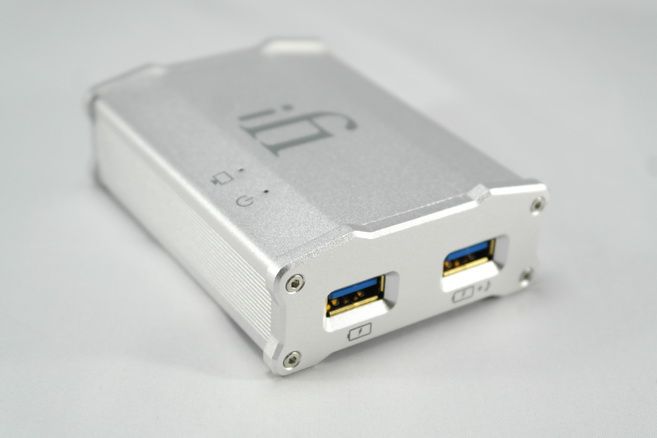
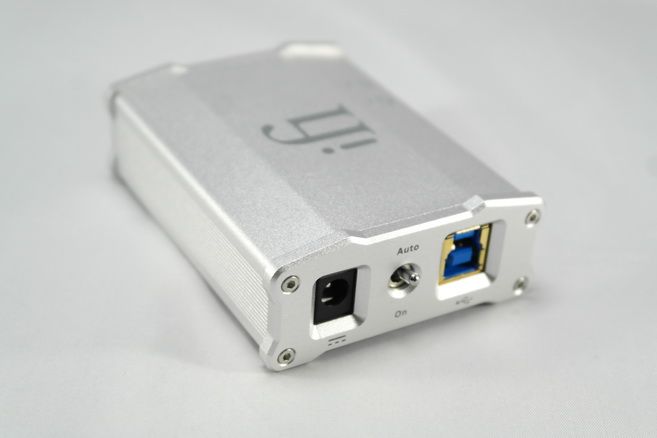
I have said on my original iUSB Power’s review that I didn’t actually get it for the use with the original iDAC, though the end result does show improvement for the pairing. Compare to the iUSB Power for only cleaning up the USB power line, the new nano iUSB3.0 is also a fully suited up USB3.0 hub that not only clean up power line, but also clean up the USB data signal as well as supporting BC1.2 profile. It is pretty much as audiophile as USB hub can ever be. Of course, whether you will detect an improvement with or without nano iUSB3.0 depends on how good or bad your PC’s USB connection is. If it doesn’t have much problem to begin with, then you might not notice much improvement. If it does have problem, then the nano iUSB3.0 will prove to be a good fix. My main use of the nano iUSB3.0 is to connect my micro iDSD to the PC so the iDSD can get a clean BC1.2 power supply line and won’t drain its internal battery over time - and It does a fine job there. Like the original iUSB Power, the nano iUSB3.0 is at best a minor optimization to your rig after you have improved on other aspects. It will worth it if you already own a mid to higher end USB DAC, but probably not the best idea to pair it with a cheap USB DAC and expect it to do miracle.
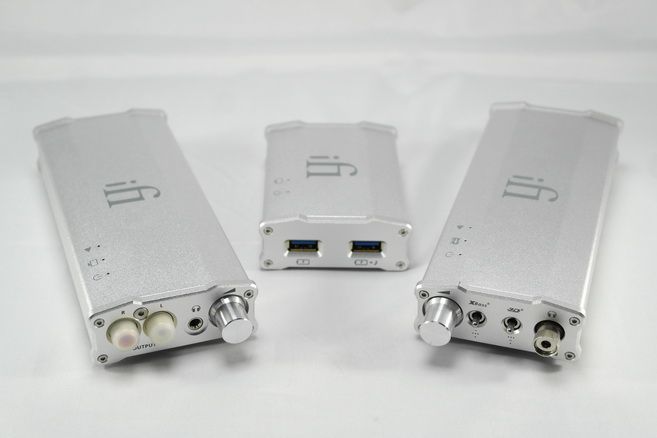
From left: micro iDAC2, nano iUSB3.0, and micro iCAN SE
Summery
Since my review for iDAC, iCAN and iUSB Power some 3 years ago, the market for desktop audiophiles gear has blossomed and then somewhat shifted more toward smartphone oriented OTG products. It is rather a delight to see iFi Audio has continued to refine its nano and micro products line-up and push the envelope of offering audio gear with exceptionally good price-performance ratio, not just a mad dash to keep releasing the latest and greatest purely to meet the bottom line.
A thanks to iFi Audio for the iDAC2 and iCAN SE sample.

(nano iUSB3.0 package not show)
Spec

(Accessories not fully show)
Nano iUSB3.0
Output Voltage: 5V±0.5%
Output Current: 2.1A
Noise floor: 0.5uV (0.0000005V)
USB 3.0: Ultra-speed 5.0Gbps
Input Voltage: AC 100 – 240V, 50/60Hz (iFi iPower included)
Power consumption: Less than 15W (includes powered USB device)
Dimensions: 87(l) x 68(w) x 28(h) mm
Weight: 141g (0.31 lbs)

Micro iDAC2
Input: USB3.0 (USB2.0 compatible)
Output:
SPDIF RCA (only PCM up to 192KHz)
Audio RCA
3.5mm Headphone
Formats:
44.1/48/88.2/96/176.4/192/384KHz PCM
2.8/3.1/5.6/6.2/11.2/12.4MHz DSD
353/384KHz DXD
DAC: Bit-Perfect DSD & DXD DAC by Burr Brown (1-DAC Chip; 2-Channel; 4 Signals)
Filters:
-PCM: Bit-Perfect/Minimum Phase/Standard, Digital filters selectable
-DSD: Extreme/Extended/Standard, Analogue filters selectable
-DXD: Bit-Perfect Processing, Fixed Analogue filter
Line Section:
Output: 2.1V (+/-0.05V) fixed
Zout: Under 39 Ohm
SNR: Over 114dB (A) @ 0dBFS
THD+N:
Under 0.0025% @ 0dBFS (100k Load)
Under 0.025% @ 0dBFS (600R Load)
Headphone Section:
Output:
Over 350mW (2.40V) into 16R (<10% THD+N)
Over 34mW (3.20V) into 300R (< 0.1% THD+N)
Zout: Under 2 Ohm
THD+N: Under 0.0025% (1V into 16 Ohm, 0dBFS)
SNR: Over 114dBA (3.2V into 16 Ohm, 0dBFS)
Power consumption: Less than 1.5W
Dimensions: 158(l) x 68(w) x 28(h) mm
Weight: 265g (0.58 lbs)

Micro iCAN SE
EQ: Two levels selectable 3D Holographic Sound and XBass
Gain: 0dB, 12dB and 24dB user-selectable. Full discrete, Class A
Buffer Stage: TPA6120A2
SNR: Over 123dB (A)
THD: Under 0.003% (400mV/150R)
Frequency Response: 0.5Hz to 500KHz (-3dB)
Output Impedance: Under 1 ohm
Output Power: Over 4000mW (16Ω)
Output Voltage: Over 10V (over 600Ω)
Input Voltage: AC 100 – 240V, 50/60Hz
Power Consumption: Under 5W idle, 12W max.
Dimensions: 158(l) x 68(w) x 28(h) mm
Weight: 216g (0.48 lbs)
Accessories and Build Quality
Design, accessories and build quality wise, the new offerings are pretty much top notch and on par with their older sibling. I have said in the past that I am not that biggest fans for iFi long and narrow Micro casing, but that has become part of iFi identity. With micro iDAC2, you will get some rubber feet, a short USB cable and RCA cable. Micro iCAN SE, there are the power adapter, short RCA cable, 6.4mm-to-3.5mm stereo adapter, a flat head screw driver for adjusting gain, 3.5mm interconnecting cable and rubber feet. With nano iUSB3.0, there are USB3.0 cable, rubber feet and power adapter. One thing to note is that the power adapter of all of current iFi has been upgraded to the iPower adapter, which offer even cleaner power than the original ULN adapter. To nit-pick, I am not too fond of the new customized 3M rubber feet that is lower than the original 3M feet, making it harder to stack the iDAC3 and iCAN SE on top of each other as the metal casing are touching each other. At the end, I end up getting some taller original 3M rubber feet so I can stack them up for a cleaner looking. Of course, whether this will bother you or not totally depends on how you like to arrange your iFi gears.
Gain and Hiss
Line-out on iDAC2 is the fairly standard 1.98Vrms, headphone-out gain is just over 5dB, or about 3.6Vrms at max. Gain on iCAN SE is however selectable at either 0dB, 12dB or 24dB. Assuming iDAC2 as source, most headphone and IEM will be more than enough with 0dB gain. Hard-to-drive full sized might benefit from the 12dB gain, where 24dB gain with just over 11Vrms output is probably reserved for really low sensitive headphones.
Hiss is very well behaved on the IDAC2. With the hiss-prone Shure SE530, I didn’t notice any hiss until around 2~3 o’clock on the volume knob – which is of course impossible to actually listen on such a high volume during music playback. I think it is safe to say there is little to no chance you will notice any hiss with sensitive IEM on normal use.
Hiss on iCAN SE is mostly positive. I say ‘mostly’ because as far as hiss goes, it is on par with the original iCAN where low level hiss is only noticeable with volume knob going pass 12 o’clock. But I also noticed the 15V iPower seems to be more sensitive to voltage irregularity and ground loop from the main, which could give a very faint switching noise in rare occasions. If I switched to using the 9V iPower to power the iCAN SE, the faint switching noise will go away. Not really sure if that’s due to the particular 15V iPower adapter I have as I don’t have another 15V iPower adapter to compare it to, plus I can’t replicate the situation easily. Will probably have to wait till I get another 15V iPower to double check though I think it is more likely a freak incident.
Sound Quality
As usual, we start with the look at some basic measurement. As far as RMAA goes, both iDAC2 and iCAN SE pass with flying color with flat frequency response end-to-end, and great looking numbers on crosstalk, SNR and IMD. Then again, these result are to be expected, given the original IDAC and iCAN already measure quite well. Output impedance on iDAC2 headphone-out is measured and calculated to about 1.9ohm, in line with the listed spec, and it has plenty of output power to my dummy load. iCAN SE fairs even better with just 0.9ohm output impedance and higher output power. All and all, the technical side of both iDAC2 and iCAN SE seem very solid.


Let begin with iDAC2. Besides sharing the same name with the original iDAC, there is really nothing really similar between the two. Where the original iDAC is meant to be a step beyond entry level USB DAC, the iDAC2 simply takes it to the next level. Instead of the entry level ESS chip, the iDAC2 uses the same DAC chip as better sounding iDSD series. I think it is fair to say iDAC2 is really more of a desktop version the iDSD series, where performance is in between the nano iDSD and Micro iDSD. On the DAC section, it shares many of the same features as nano iDSD like native DSD playback and filter selection (see my micro iDSD review for more detail on these features). On the analog section, it is a noticeable improvement over nano iDSD but not as robust as the flagship micro iDSD. One of the minor complaint I have with nano iDSD is that its headphone amp section is kind of the weakest link. But that is not the case on iDAC2. The bigger size and no need of portability means a better implemented analog section after than DAC stage, which no longer give me the feeling that there is a noticeable weak spot in the chain. While it is still not the best sounding amp section you will find on a DAC/amp, it is at least not a let-down in anyway and should drive most headphone quite well. I would think the word ‘content’ is what coming to my mind when using iDAC2 as a standalone unit – that I can be quite happy to use it as it is and there isn’t the need to ‘fix’ it in some way to make it better. Where with the original iDAC, I am more incline to use it with the iCAN because I know on the back of my head that I want just a bit more.

micro iDAC's FR curve
So how is the subjective difference between iDAC2 and iDAC? Gone is the clean, slightly sterile sound of the ESS chip and in is the more musical presentation of the Burr Brown DAC that I am quite fond of. Same can be said on the headphone amp section as well. While it is still reference flat on FR curve, the overall tonal is richer and more musical than the colder sounding iDAC’s headphone-out. The dual-mono like implementation of two MAX97220 headphone driver gives plenty of power and control. The lower in overall gain makes it a bit more IEM friendly than the iDAC. It doesn’t have the output to handle really hard-to-drive headphone but that is what iCAN SE is for. All and all, the iDAC2 is a solid upgrade over the original model. I’ll dare to even say it is almost a quantum leap in design.


Different from the radical change between iDAC and iDAC2, there are more similarities between iCAN SE and iCAN. Their basic topology shares the same DNA with TubeState Class A discrete gain stage followed by TPA6120A2 headphone buffer stage. Of course, the excellent 3D Holographic Sound (3DHS) and XBass are there as well. The main difference is that the iCAN SE, with a higher voltage supply from the 15V iPower adapter, can pump out 10 times the power (4W vs. 0.4W) over the same 16ohm load when compared to the original iCAN as well as having a higher maximum gain for the most demanding of headphone.

micro iCAN SE's FR curve
So does the iCAN SE sounds the same as the already great iCAN? Well, yes and no. It is easy to tell that iCAN SE inheres the same underlying tonality and transparent presentation from iCAN, but there are a few subtle improvement. First, the overall image is about 10% larger on the iCAN SE, which isn’t much but enough to paint out a larger sonic picture and result in a slight improvement over positioning. Secondly, the extra power really helps to tighten up the presentation with crispier top notes and harder hitting low notes, which gives better definition. These improvements are not night and day by any mean, but enough to be noticeable in a volume matched comparison. I guess it is rather befitting that iFi has managed to make the iCAN SE even more ‘special’ than the original iCAN.

micro iCAN SE's XBass
Lastly, the implementation on iCAN SE’s 3DHS and XBass seem to be identical to that of the original iCAN. 3DHS can’t be easily measured using my equipment but I did measure the XBass EQ and they are indeed the same as the original iCAN. 3DHS, on my ears, also sounds extremely similar (if not identical) too. Like they said - if it didn’t break, don’t fix it. I am glad to see iFi has kept the excellent 3DHS and XBass intact.


I have said on my original iUSB Power’s review that I didn’t actually get it for the use with the original iDAC, though the end result does show improvement for the pairing. Compare to the iUSB Power for only cleaning up the USB power line, the new nano iUSB3.0 is also a fully suited up USB3.0 hub that not only clean up power line, but also clean up the USB data signal as well as supporting BC1.2 profile. It is pretty much as audiophile as USB hub can ever be. Of course, whether you will detect an improvement with or without nano iUSB3.0 depends on how good or bad your PC’s USB connection is. If it doesn’t have much problem to begin with, then you might not notice much improvement. If it does have problem, then the nano iUSB3.0 will prove to be a good fix. My main use of the nano iUSB3.0 is to connect my micro iDSD to the PC so the iDSD can get a clean BC1.2 power supply line and won’t drain its internal battery over time - and It does a fine job there. Like the original iUSB Power, the nano iUSB3.0 is at best a minor optimization to your rig after you have improved on other aspects. It will worth it if you already own a mid to higher end USB DAC, but probably not the best idea to pair it with a cheap USB DAC and expect it to do miracle.

From left: micro iDAC2, nano iUSB3.0, and micro iCAN SE
Summery
Since my review for iDAC, iCAN and iUSB Power some 3 years ago, the market for desktop audiophiles gear has blossomed and then somewhat shifted more toward smartphone oriented OTG products. It is rather a delight to see iFi Audio has continued to refine its nano and micro products line-up and push the envelope of offering audio gear with exceptionally good price-performance ratio, not just a mad dash to keep releasing the latest and greatest purely to meet the bottom line.
A thanks to iFi Audio for the iDAC2 and iCAN SE sample.
walfredo
Many thanks, @ClieOS
ClieOS
IEM Reviewer Extraordinaire
Pros: Native DSD decoding, transparent sound with slight richness, adequate headphone-out, Selectable filter.
Cons: RCA should be better placed on the back.
It has been 3 years since my original review of iFi Audio’s original micro iUSB Power, iDAC and iCAN. Fantastic when they are first released and, in my opinion, still quite relevant after all these time (*with the testimony that they still form part of my PC audio chain), the competition has however certainly stiffen up a bit. In respond to the fast pace of the current digital audio gears market, iFi Audio has decided to update the original models with newer parts, better tech, still excellent sound quality and always a big bang for the buck. The nano iUSB3.0, micro iDAC2 and iCAN SE are priced $199, $349 and $390.

(nano iUSB3.0 package not show)
Spec

(Accessories not fully show)
Nano iUSB3.0
Output Voltage: 5V±0.5%
Output Current: 2.1A
Noise floor: 0.5uV (0.0000005V)
USB 3.0: Ultra-speed 5.0Gbps
Input Voltage: AC 100 – 240V, 50/60Hz (iFi iPower included)
Power consumption: Less than 15W (includes powered USB device)
Dimensions: 87(l) x 68(w) x 28(h) mm
Weight: 141g (0.31 lbs)

Micro iDAC2
Input: USB3.0 (USB2.0 compatible)
Output:
SPDIF RCA (only PCM up to 192KHz)
Audio RCA
3.5mm Headphone
Formats:
44.1/48/88.2/96/176.4/192/384KHz PCM
2.8/3.1/5.6/6.2/11.2/12.4MHz DSD
353/384KHz DXD
DAC: Bit-Perfect DSD & DXD DAC by Burr Brown (1-DAC Chip; 2-Channel; 4 Signals)
Filters:
-PCM: Bit-Perfect/Minimum Phase/Standard, Digital filters selectable
-DSD: Extreme/Extended/Standard, Analogue filters selectable
-DXD: Bit-Perfect Processing, Fixed Analogue filter
Line Section:
Output: 2.1V (+/-0.05V) fixed
Zout: Under 39 Ohm
SNR: Over 114dB (A) @ 0dBFS
THD+N:
Under 0.0025% @ 0dBFS (100k Load)
Under 0.025% @ 0dBFS (600R Load)
Headphone Section:
Output:
Over 350mW (2.40V) into 16R (<10% THD+N)
Over 34mW (3.20V) into 300R (< 0.1% THD+N)
Zout: Under 2 Ohm
THD+N: Under 0.0025% (1V into 16 Ohm, 0dBFS)
SNR: Over 114dBA (3.2V into 16 Ohm, 0dBFS)
Power consumption: Less than 1.5W
Dimensions: 158(l) x 68(w) x 28(h) mm
Weight: 265g (0.58 lbs)

Micro iCAN SE
EQ: Two levels selectable 3D Holographic Sound and XBass
Gain: 0dB, 12dB and 24dB user-selectable. Full discrete, Class A
Buffer Stage: TPA6120A2
SNR: Over 123dB (A)
THD: Under 0.003% (400mV/150R)
Frequency Response: 0.5Hz to 500KHz (-3dB)
Output Impedance: Under 1 ohm
Output Power: Over 4000mW (16Ω)
Output Voltage: Over 10V (over 600Ω)
Input Voltage: AC 100 – 240V, 50/60Hz
Power Consumption: Under 5W idle, 12W max.
Dimensions: 158(l) x 68(w) x 28(h) mm
Weight: 216g (0.48 lbs)
Accessories and Build Quality
Design, accessories and build quality wise, the new offerings are pretty much top notch and on par with their older sibling. I have said in the past that I am not that biggest fans for iFi long and narrow Micro casing, but that has become part of iFi identity. With micro iDAC2, you will get some rubber feet, a short USB cable and RCA cable. Micro iCAN SE, there are the power adapter, short RCA cable, 6.4mm-to-3.5mm stereo adapter, a flat head screw driver for adjusting gain, 3.5mm interconnecting cable and rubber feet. With nano iUSB3.0, there are USB3.0 cable, rubber feet and power adapter. One thing to note is that the power adapter of all of current iFi has been upgraded to the iPower adapter, which offer even cleaner power than the original ULN adapter. To nit-pick, I am not too fond of the new customized 3M rubber feet that is lower than the original 3M feet, making it harder to stack the iDAC3 and iCAN SE on top of each other as the metal casing are touching each other. At the end, I end up getting some taller original 3M rubber feet so I can stack them up for a cleaner looking. Of course, whether this will bother you or not totally depends on how you like to arrange your iFi gears.
Gain and Hiss
Line-out on iDAC2 is the fairly standard 1.98Vrms, headphone-out gain is just over 5dB, or about 3.6Vrms at max. Gain on iCAN SE is however selectable at either 0dB, 12dB or 24dB. Assuming iDAC2 as source, most headphone and IEM will be more than enough with 0dB gain. Hard-to-drive full sized might benefit from the 12dB gain, where 24dB gain with just over 11Vrms output is probably reserved for really low sensitive headphones.
Hiss is very well behaved on the IDAC2. With the hiss-prone Shure SE530, I didn’t notice any hiss until around 2~3 o’clock on the volume knob – which is of course impossible to actually listen on such a high volume during music playback. I think it is safe to say there is little to no chance you will notice any hiss with sensitive IEM on normal use.
Hiss on iCAN SE is mostly positive. I say ‘mostly’ because as far as hiss goes, it is on par with the original iCAN where low level hiss is only noticeable with volume knob going pass 12 o’clock. But I also noticed the 15V iPower seems to be more sensitive to voltage irregularity and ground loop from the main, which could give a very faint switching noise in rare occasions. If I switched to using the 9V iPower to power the iCAN SE, the faint switching noise will go away. Not really sure if that’s due to the particular 15V iPower adapter I have as I don’t have another 15V iPower adapter to compare it to, plus I can’t replicate the situation easily. Will probably have to wait till I get another 15V iPower to double check though I think it is more likely a freak incident.
Sound Quality
As usual, we start with the look at some basic measurement. As far as RMAA goes, both iDAC2 and iCAN SE pass with flying color with flat frequency response end-to-end, and great looking numbers on crosstalk, SNR and IMD. Then again, these result are to be expected, given the original IDAC and iCAN already measure quite well. Output impedance on iDAC2 headphone-out is measured and calculated to about 1.9ohm, in line with the listed spec, and it has plenty of output power to my dummy load. iCAN SE fairs even better with just 0.9ohm output impedance and higher output power. All and all, the technical side of both iDAC2 and iCAN SE seem very solid.


Let begin with iDAC2. Besides sharing the same name with the original iDAC, there is really nothing really similar between the two. Where the original iDAC is meant to be a step beyond entry level USB DAC, the iDAC2 simply takes it to the next level. Instead of the entry level ESS chip, the iDAC2 uses the same DAC chip as better sounding iDSD series. I think it is fair to say iDAC2 is really more of a desktop version the iDSD series, where performance is in between the nano iDSD and Micro iDSD. On the DAC section, it shares many of the same features as nano iDSD like native DSD playback and filter selection (see my micro iDSD review for more detail on these features). On the analog section, it is a noticeable improvement over nano iDSD but not as robust as the flagship micro iDSD. One of the minor complaint I have with nano iDSD is that its headphone amp section is kind of the weakest link. But that is not the case on iDAC2. The bigger size and no need of portability means a better implemented analog section after than DAC stage, which no longer give me the feeling that there is a noticeable weak spot in the chain. While it is still not the best sounding amp section you will find on a DAC/amp, it is at least not a let-down in anyway and should drive most headphone quite well. I would think the word ‘content’ is what coming to my mind when using iDAC2 as a standalone unit – that I can be quite happy to use it as it is and there isn’t the need to ‘fix’ it in some way to make it better. Where with the original iDAC, I am more incline to use it with the iCAN because I know on the back of my head that I want just a bit more.

micro iDAC's FR curve
So how is the subjective difference between iDAC2 and iDAC? Gone is the clean, slightly sterile sound of the ESS chip and in is the more musical presentation of the Burr Brown DAC that I am quite fond of. Same can be said on the headphone amp section as well. While it is still reference flat on FR curve, the overall tonal is richer and more musical than the colder sounding iDAC’s headphone-out. The dual-mono like implementation of two MAX97220 headphone driver gives plenty of power and control. The lower in overall gain makes it a bit more IEM friendly than the iDAC. It doesn’t have the output to handle really hard-to-drive headphone but that is what iCAN SE is for. All and all, the iDAC2 is a solid upgrade over the original model. I’ll dare to even say it is almost a quantum leap in design.


Different from the radical change between iDAC and iDAC2, there are more similarities between iCAN SE and iCAN. Their basic topology shares the same DNA with TubeState Class A discrete gain stage followed by TPA6120A2 headphone buffer stage. Of course, the excellent 3D Holographic Sound (3DHS) and XBass are there as well. The main difference is that the iCAN SE, with a higher voltage supply from the 15V iPower adapter, can pump out 10 times the power (4W vs. 0.4W) over the same 16ohm load when compared to the original iCAN as well as having a higher maximum gain for the most demanding of headphone.

micro iCAN SE's FR curve
So does the iCAN SE sounds the same as the already great iCAN? Well, yes and no. It is easy to tell that iCAN SE inheres the same underlying tonality and transparent presentation from iCAN, but there are a few subtle improvement. First, the overall image is about 10% larger on the iCAN SE, which isn’t much but enough to paint out a larger sonic picture and result in a slight improvement over positioning. Secondly, the extra power really helps to tighten up the presentation with crispier top notes and harder hitting low notes, which gives better definition. These improvements are not night and day by any mean, but enough to be noticeable in a volume matched comparison. I guess it is rather befitting that iFi has managed to make the iCAN SE even more ‘special’ than the original iCAN.

micro iCAN SE's XBass
Lastly, the implementation on iCAN SE’s 3DHS and XBass seem to be identical to that of the original iCAN. 3DHS can’t be easily measured using my equipment but I did measure the XBass EQ and they are indeed the same as the original iCAN. 3DHS, on my ears, also sounds extremely similar (if not identical) too. Like they said - if it didn’t break, don’t fix it. I am glad to see iFi has kept the excellent 3DHS and XBass intact.


I have said on my original iUSB Power’s review that I didn’t actually get it for the use with the original iDAC, though the end result does show improvement for the pairing. Compare to the iUSB Power for only cleaning up the USB power line, the new nano iUSB3.0 is also a fully suited up USB3.0 hub that not only clean up power line, but also clean up the USB data signal as well as supporting BC1.2 profile. It is pretty much as audiophile as USB hub can ever be. Of course, whether you will detect an improvement with or without nano iUSB3.0 depends on how good or bad your PC’s USB connection is. If it doesn’t have much problem to begin with, then you might not notice much improvement. If it does have problem, then the nano iUSB3.0 will prove to be a good fix. My main use of the nano iUSB3.0 is to connect my micro iDSD to the PC so the iDSD can get a clean BC1.2 power supply line and won’t drain its internal battery over time - and It does a fine job there. Like the original iUSB Power, the nano iUSB3.0 is at best a minor optimization to your rig after you have improved on other aspects. It will worth it if you already own a mid to higher end USB DAC, but probably not the best idea to pair it with a cheap USB DAC and expect it to do miracle.

From left: micro iDAC2, nano iUSB3.0, and micro iCAN SE
Summery
Since my review for iDAC, iCAN and iUSB Power some 3 years ago, the market for desktop audiophiles gear has blossomed and then somewhat shifted more toward smartphone oriented OTG products. It is rather a delight to see iFi Audio has continued to refine its nano and micro products line-up and push the envelope of offering audio gear with exceptionally good price-performance ratio, not just a mad dash to keep releasing the latest and greatest purely to meet the bottom line.
A thanks to iFi Audio for the iDAC2 and iCAN SE sample.

(nano iUSB3.0 package not show)
Spec

(Accessories not fully show)
Nano iUSB3.0
Output Voltage: 5V±0.5%
Output Current: 2.1A
Noise floor: 0.5uV (0.0000005V)
USB 3.0: Ultra-speed 5.0Gbps
Input Voltage: AC 100 – 240V, 50/60Hz (iFi iPower included)
Power consumption: Less than 15W (includes powered USB device)
Dimensions: 87(l) x 68(w) x 28(h) mm
Weight: 141g (0.31 lbs)

Micro iDAC2
Input: USB3.0 (USB2.0 compatible)
Output:
SPDIF RCA (only PCM up to 192KHz)
Audio RCA
3.5mm Headphone
Formats:
44.1/48/88.2/96/176.4/192/384KHz PCM
2.8/3.1/5.6/6.2/11.2/12.4MHz DSD
353/384KHz DXD
DAC: Bit-Perfect DSD & DXD DAC by Burr Brown (1-DAC Chip; 2-Channel; 4 Signals)
Filters:
-PCM: Bit-Perfect/Minimum Phase/Standard, Digital filters selectable
-DSD: Extreme/Extended/Standard, Analogue filters selectable
-DXD: Bit-Perfect Processing, Fixed Analogue filter
Line Section:
Output: 2.1V (+/-0.05V) fixed
Zout: Under 39 Ohm
SNR: Over 114dB (A) @ 0dBFS
THD+N:
Under 0.0025% @ 0dBFS (100k Load)
Under 0.025% @ 0dBFS (600R Load)
Headphone Section:
Output:
Over 350mW (2.40V) into 16R (<10% THD+N)
Over 34mW (3.20V) into 300R (< 0.1% THD+N)
Zout: Under 2 Ohm
THD+N: Under 0.0025% (1V into 16 Ohm, 0dBFS)
SNR: Over 114dBA (3.2V into 16 Ohm, 0dBFS)
Power consumption: Less than 1.5W
Dimensions: 158(l) x 68(w) x 28(h) mm
Weight: 265g (0.58 lbs)

Micro iCAN SE
EQ: Two levels selectable 3D Holographic Sound and XBass
Gain: 0dB, 12dB and 24dB user-selectable. Full discrete, Class A
Buffer Stage: TPA6120A2
SNR: Over 123dB (A)
THD: Under 0.003% (400mV/150R)
Frequency Response: 0.5Hz to 500KHz (-3dB)
Output Impedance: Under 1 ohm
Output Power: Over 4000mW (16Ω)
Output Voltage: Over 10V (over 600Ω)
Input Voltage: AC 100 – 240V, 50/60Hz
Power Consumption: Under 5W idle, 12W max.
Dimensions: 158(l) x 68(w) x 28(h) mm
Weight: 216g (0.48 lbs)
Accessories and Build Quality
Design, accessories and build quality wise, the new offerings are pretty much top notch and on par with their older sibling. I have said in the past that I am not that biggest fans for iFi long and narrow Micro casing, but that has become part of iFi identity. With micro iDAC2, you will get some rubber feet, a short USB cable and RCA cable. Micro iCAN SE, there are the power adapter, short RCA cable, 6.4mm-to-3.5mm stereo adapter, a flat head screw driver for adjusting gain, 3.5mm interconnecting cable and rubber feet. With nano iUSB3.0, there are USB3.0 cable, rubber feet and power adapter. One thing to note is that the power adapter of all of current iFi has been upgraded to the iPower adapter, which offer even cleaner power than the original ULN adapter. To nit-pick, I am not too fond of the new customized 3M rubber feet that is lower than the original 3M feet, making it harder to stack the iDAC3 and iCAN SE on top of each other as the metal casing are touching each other. At the end, I end up getting some taller original 3M rubber feet so I can stack them up for a cleaner looking. Of course, whether this will bother you or not totally depends on how you like to arrange your iFi gears.
Gain and Hiss
Line-out on iDAC2 is the fairly standard 1.98Vrms, headphone-out gain is just over 5dB, or about 3.6Vrms at max. Gain on iCAN SE is however selectable at either 0dB, 12dB or 24dB. Assuming iDAC2 as source, most headphone and IEM will be more than enough with 0dB gain. Hard-to-drive full sized might benefit from the 12dB gain, where 24dB gain with just over 11Vrms output is probably reserved for really low sensitive headphones.
Hiss is very well behaved on the IDAC2. With the hiss-prone Shure SE530, I didn’t notice any hiss until around 2~3 o’clock on the volume knob – which is of course impossible to actually listen on such a high volume during music playback. I think it is safe to say there is little to no chance you will notice any hiss with sensitive IEM on normal use.
Hiss on iCAN SE is mostly positive. I say ‘mostly’ because as far as hiss goes, it is on par with the original iCAN where low level hiss is only noticeable with volume knob going pass 12 o’clock. But I also noticed the 15V iPower seems to be more sensitive to voltage irregularity and ground loop from the main, which could give a very faint switching noise in rare occasions. If I switched to using the 9V iPower to power the iCAN SE, the faint switching noise will go away. Not really sure if that’s due to the particular 15V iPower adapter I have as I don’t have another 15V iPower adapter to compare it to, plus I can’t replicate the situation easily. Will probably have to wait till I get another 15V iPower to double check though I think it is more likely a freak incident.
Sound Quality
As usual, we start with the look at some basic measurement. As far as RMAA goes, both iDAC2 and iCAN SE pass with flying color with flat frequency response end-to-end, and great looking numbers on crosstalk, SNR and IMD. Then again, these result are to be expected, given the original IDAC and iCAN already measure quite well. Output impedance on iDAC2 headphone-out is measured and calculated to about 1.9ohm, in line with the listed spec, and it has plenty of output power to my dummy load. iCAN SE fairs even better with just 0.9ohm output impedance and higher output power. All and all, the technical side of both iDAC2 and iCAN SE seem very solid.


Let begin with iDAC2. Besides sharing the same name with the original iDAC, there is really nothing really similar between the two. Where the original iDAC is meant to be a step beyond entry level USB DAC, the iDAC2 simply takes it to the next level. Instead of the entry level ESS chip, the iDAC2 uses the same DAC chip as better sounding iDSD series. I think it is fair to say iDAC2 is really more of a desktop version the iDSD series, where performance is in between the nano iDSD and Micro iDSD. On the DAC section, it shares many of the same features as nano iDSD like native DSD playback and filter selection (see my micro iDSD review for more detail on these features). On the analog section, it is a noticeable improvement over nano iDSD but not as robust as the flagship micro iDSD. One of the minor complaint I have with nano iDSD is that its headphone amp section is kind of the weakest link. But that is not the case on iDAC2. The bigger size and no need of portability means a better implemented analog section after than DAC stage, which no longer give me the feeling that there is a noticeable weak spot in the chain. While it is still not the best sounding amp section you will find on a DAC/amp, it is at least not a let-down in anyway and should drive most headphone quite well. I would think the word ‘content’ is what coming to my mind when using iDAC2 as a standalone unit – that I can be quite happy to use it as it is and there isn’t the need to ‘fix’ it in some way to make it better. Where with the original iDAC, I am more incline to use it with the iCAN because I know on the back of my head that I want just a bit more.

micro iDAC's FR curve
So how is the subjective difference between iDAC2 and iDAC? Gone is the clean, slightly sterile sound of the ESS chip and in is the more musical presentation of the Burr Brown DAC that I am quite fond of. Same can be said on the headphone amp section as well. While it is still reference flat on FR curve, the overall tonal is richer and more musical than the colder sounding iDAC’s headphone-out. The dual-mono like implementation of two MAX97220 headphone driver gives plenty of power and control. The lower in overall gain makes it a bit more IEM friendly than the iDAC. It doesn’t have the output to handle really hard-to-drive headphone but that is what iCAN SE is for. All and all, the iDAC2 is a solid upgrade over the original model. I’ll dare to even say it is almost a quantum leap in design.


Different from the radical change between iDAC and iDAC2, there are more similarities between iCAN SE and iCAN. Their basic topology shares the same DNA with TubeState Class A discrete gain stage followed by TPA6120A2 headphone buffer stage. Of course, the excellent 3D Holographic Sound (3DHS) and XBass are there as well. The main difference is that the iCAN SE, with a higher voltage supply from the 15V iPower adapter, can pump out 10 times the power (4W vs. 0.4W) over the same 16ohm load when compared to the original iCAN as well as having a higher maximum gain for the most demanding of headphone.

micro iCAN SE's FR curve
So does the iCAN SE sounds the same as the already great iCAN? Well, yes and no. It is easy to tell that iCAN SE inheres the same underlying tonality and transparent presentation from iCAN, but there are a few subtle improvement. First, the overall image is about 10% larger on the iCAN SE, which isn’t much but enough to paint out a larger sonic picture and result in a slight improvement over positioning. Secondly, the extra power really helps to tighten up the presentation with crispier top notes and harder hitting low notes, which gives better definition. These improvements are not night and day by any mean, but enough to be noticeable in a volume matched comparison. I guess it is rather befitting that iFi has managed to make the iCAN SE even more ‘special’ than the original iCAN.

micro iCAN SE's XBass
Lastly, the implementation on iCAN SE’s 3DHS and XBass seem to be identical to that of the original iCAN. 3DHS can’t be easily measured using my equipment but I did measure the XBass EQ and they are indeed the same as the original iCAN. 3DHS, on my ears, also sounds extremely similar (if not identical) too. Like they said - if it didn’t break, don’t fix it. I am glad to see iFi has kept the excellent 3DHS and XBass intact.


I have said on my original iUSB Power’s review that I didn’t actually get it for the use with the original iDAC, though the end result does show improvement for the pairing. Compare to the iUSB Power for only cleaning up the USB power line, the new nano iUSB3.0 is also a fully suited up USB3.0 hub that not only clean up power line, but also clean up the USB data signal as well as supporting BC1.2 profile. It is pretty much as audiophile as USB hub can ever be. Of course, whether you will detect an improvement with or without nano iUSB3.0 depends on how good or bad your PC’s USB connection is. If it doesn’t have much problem to begin with, then you might not notice much improvement. If it does have problem, then the nano iUSB3.0 will prove to be a good fix. My main use of the nano iUSB3.0 is to connect my micro iDSD to the PC so the iDSD can get a clean BC1.2 power supply line and won’t drain its internal battery over time - and It does a fine job there. Like the original iUSB Power, the nano iUSB3.0 is at best a minor optimization to your rig after you have improved on other aspects. It will worth it if you already own a mid to higher end USB DAC, but probably not the best idea to pair it with a cheap USB DAC and expect it to do miracle.

From left: micro iDAC2, nano iUSB3.0, and micro iCAN SE
Summery
Since my review for iDAC, iCAN and iUSB Power some 3 years ago, the market for desktop audiophiles gear has blossomed and then somewhat shifted more toward smartphone oriented OTG products. It is rather a delight to see iFi Audio has continued to refine its nano and micro products line-up and push the envelope of offering audio gear with exceptionally good price-performance ratio, not just a mad dash to keep releasing the latest and greatest purely to meet the bottom line.
A thanks to iFi Audio for the iDAC2 and iCAN SE sample.
ClieOS
IEM Reviewer Extraordinaire
Pros: Build Qualit, Design, Accesories and Package
Cons: Can get bright with loud volume. Price is a bit high for dual driver.
Some might not know this, but JAYS of Sweden is actually one of the earliest audiophile IEM manufacturer around, joining the game well before the whole IEM bloom of recent years. Though their first model was released in 2006, it was really the original q-JAYS in 2007 that put them on the map, right alongside big names like Ultimate Ears (with Jerry Harvey still at the helm and Triple.Fi 10 Pro being their cream of the crop), Westone (with their best offering, the UM2) and Etymotic (always the ER4 of course). But with the 2009 financial crisis and recession hitting Europe hard, JAYS switched gear and focused their attention to mid and lower-end offering while the q-JAYS was ultimately discontinued. It was not until early 2015 that the second generation of q-JAYS was finally announced and JAYS, as it seems, is finally ready to come back to the higher end market.
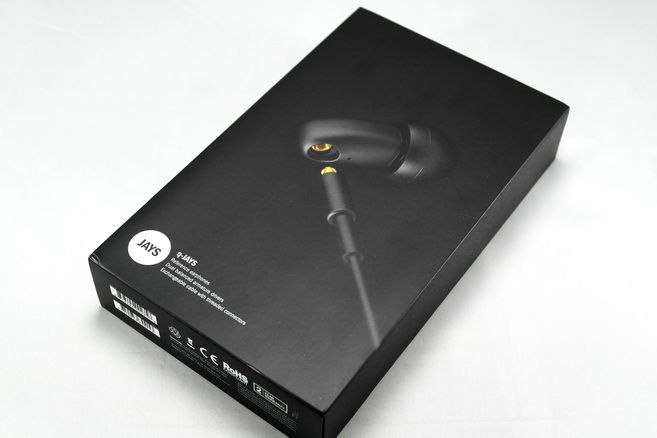
Spec
Driver: Custom Dual Balanced Armature
Sensitivity: 103dB @ 1kHz
Frequency Response: 5~20000Hz (Full Range) / 8~16000Hz (+/-5dB)
Impedance: 50 ohm @ 1kHz
Isolation: -40dB @ 2kHz
Housing: Stainless Steel with PVD Matte Finishing
Cable: 120cm User Replaceable Kevlar Cable with SSMCX Connector and Gold Plated 3.5mm Plug.
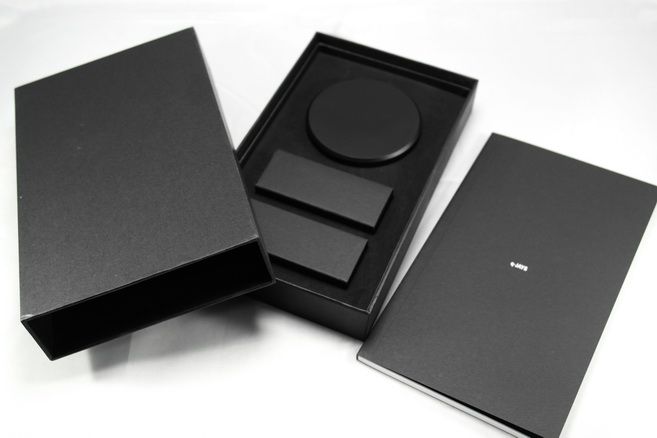
Packaging, Accessories and Build Quality
As always, being simple yet elegant is how JAYS like to present their products – no difference with the new q-JAYS on this aspect as well. I guess this is what the Nordic’s charm is all about – treating simplicity as a beauty of its own while doesn’t compromise in styling or functionality. Now that’s class.
Accessories wise, you’ll get all that are needed – a round hard case that holds the earpieces can also be used for storage once the inner foam is taken out. 5 pairs of silicone single flange eartips of various size and a pair of Comply foam tip. Last but not least - the removable cable. A few things to note: first, the marking of left and right channel on the cable isn’t easy to spot, so don’t put them in the wrong order. The earpiece itself doesn’t have any marking on them, but the curvy shape itself serves as an indicator on which is which. Of course, you can put them on the wrong orientation if you like it that way. It is up to you. Secondly, there are tiny o-ring on both the cable connector and the removable filter – you don’t want to lose those when replacing the cable or cleaning up the filter as they will not be easy to find (well, technically not hard to find either, but you’ll need to order a few hundreds of them at a time from some Chinese suppler specialize in o-ring even if they are dirt cheap).
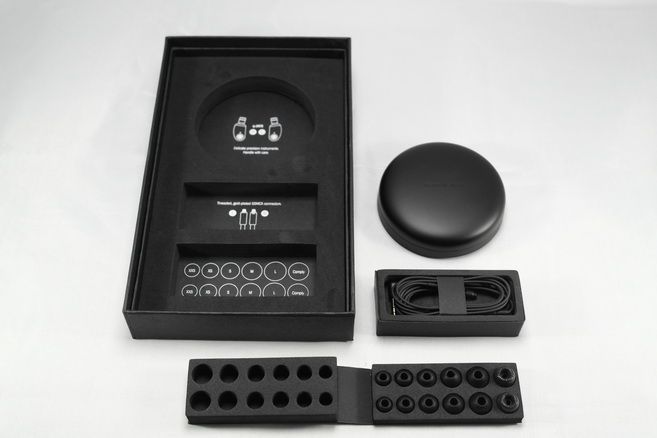

Build quality is excellent, perhaps in many ways some of the best I have seen. On the old q-JAYS, there are a couple of known problems, namely (1) the cable harden over time and eventually will develop a fault right where it goes into the earpiece and (2) earwax clogging the replaceable stick-on fabric filter, which you will need to replace once in a while. The new q-JAYS seems to tackle these problem heads on with the new replaceable cable and removable (*plus clean- and reusable) laser cut metal filter. I am particularly glad to see JAYS didn’t cut corner on just using a (usually dreadful and often fragile) MMCX connector, but instead adapted and reengineered the SSMCX connector with a thread and screw mechanism. That gives the connector the mechanical strength it needs for use as a headphone cable and won’t likely to suffer the same kind of disconnecting / pin misalignment issue that plagues all MMCX connector. The metal filter is also excellent example of JAYS engineering capability where they choose to CNC and laser cut it out instead of going with the more conventional manufacturing process. Last but not least is the rather unassuming housing that is formed by stainless steel injection molding and followed by a matte finish using a special metal vapor deposit process. All and all, the attention to detail is unparalleled to all other IEM I have seen.
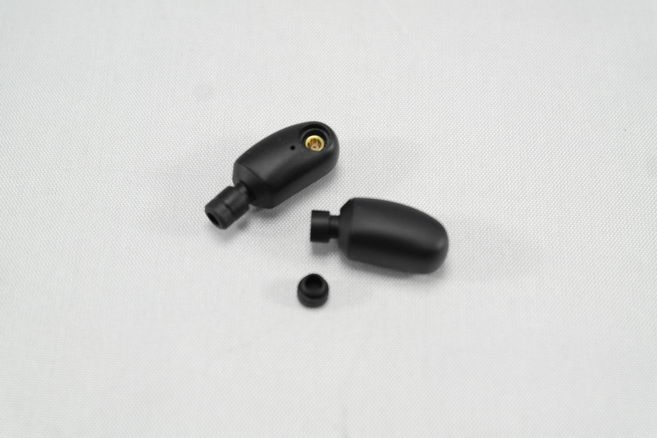
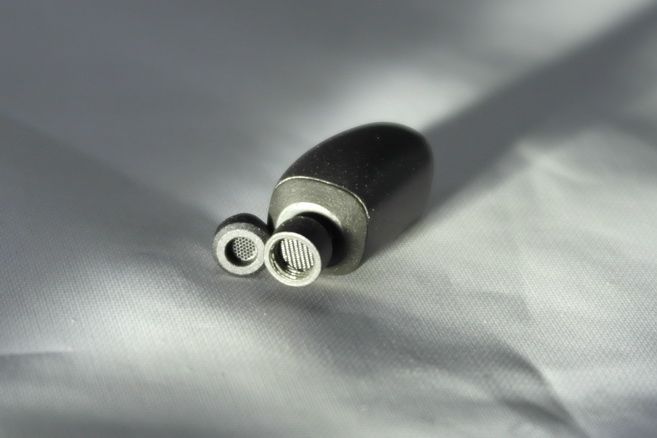
The removable laser cut filter and the internal acoustic filter.
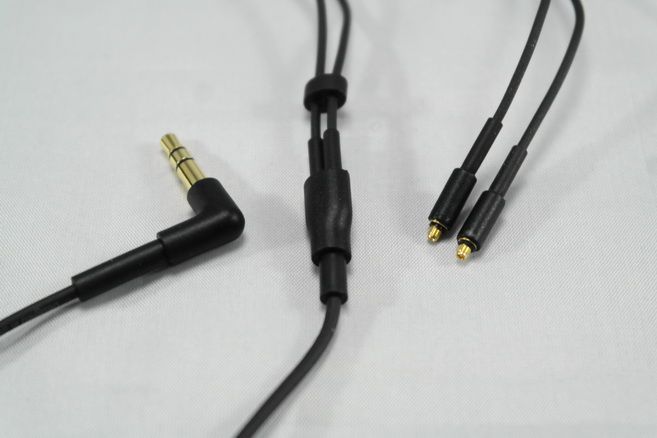
Sound Quality
Sound signature wise, the new q-JAYS is somewhere between a neutral and a warm+sweet sound, with a slightly rich tone. Bass has good quality and reaches down deep to the 20Hz, but it is qualitatively just a bit more of being neutral. Won’t be enough for any basshead, but shouldn’t feel lacking for everyone else. Mid-range has decent texture with a semi-sweet vocal that isn’t too near or too far, staying mainly in line with the bass but does turn slight bright near upper vocal / lower treble and can get *almost* sibilant if you listen to it on high volume. Treble too extends quite well upward with good clarity and spark, but not quite the level of being analytical sounding. Soundstage is pretty good, above average but not among the best. Overall, the new q-JAYS can be said to have a well-rounded sound. Besides the fact that it can get a bit bright on loud volume (though totally fine in low volume), it has a fairly spotless sound with little weakness to speak of.
If the brightness mentioned s something that worries you, here is a neat trick – you can cut just a tiny bit of foam (say, from earbuds’ foam pad) and place it inside the laser cut metal filter. It will nicely tame down the brightness and give just a bit more warmth to the presentation. While you will lose just a tiny bit of soundstage, you will also gain a bit more texture and intimacy. Given the little mod is completely reversible, it is very well worth trying. Just be sure the foam you cut should be almost equal size for both side and you can keep adjusting their size until you get the best balance for your own taste.
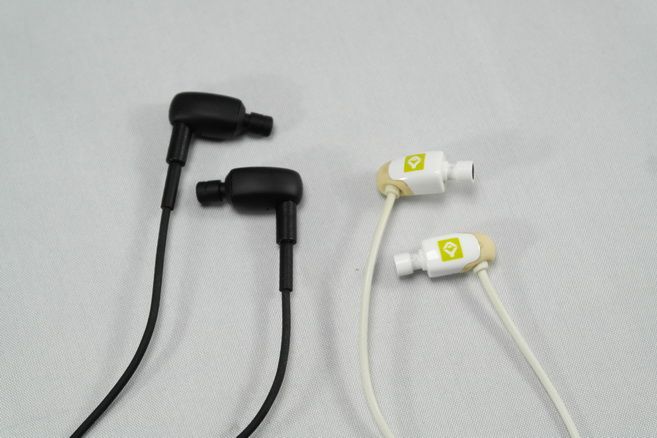
q-JAYS: New vs. Old
Last but not least, and perhaps the question on every original q-JAYS users’ mind – is the new and old q-JAYS sound the same? Well, they are similar, but not identical. The overall quality and quality of bass and upper treble is pretty much the same, but the old q-JAYS has a more recessed vocal and lower treble range that gives it a mild V-shaped presentation. In comparison, the new q-JAYS has a vocal and lower treble range that is more in line with bass and upper treble and thus it has somewhat flatter frequency range in listening. That being say, they do still share the same rich and warmish tone in their presentation. All and all, it is more of a gentle improvement rather than any radical change.
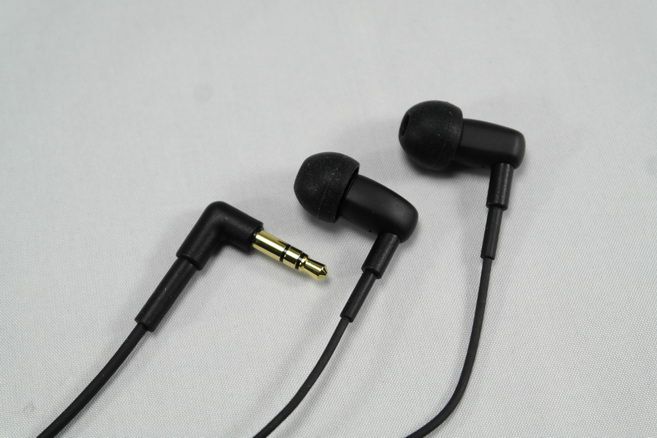
Sum-up
We have seen triple (if not more) drivers IEM offered on the same price range and we have also seen sub-$100 hybrid IEM from China these days – so does the new q-JAYS really stands a chance? If anything, I’ll say JAYS have managed to make the dual driver BA sexy again, and that’s no small feat on its own. Ignoring the driver-number game or the price war from China, I think many will agree that the new q-JAYS is perhaps one of the most refined and well-engineered IEM in a total package that $400 can buy. In other words, while q-JAYS may not be standing as one of the best IEM of its time like the original q-JAYS once did, it is still a relevant IEM of the current market. Kudos to JAYS, It is the proof that form and function can indeed be married in an uncompromised union.
Basic measurement can be found here.
A thanks to JAYS for the sample.

Spec
Driver: Custom Dual Balanced Armature
Sensitivity: 103dB @ 1kHz
Frequency Response: 5~20000Hz (Full Range) / 8~16000Hz (+/-5dB)
Impedance: 50 ohm @ 1kHz
Isolation: -40dB @ 2kHz
Housing: Stainless Steel with PVD Matte Finishing
Cable: 120cm User Replaceable Kevlar Cable with SSMCX Connector and Gold Plated 3.5mm Plug.

Packaging, Accessories and Build Quality
As always, being simple yet elegant is how JAYS like to present their products – no difference with the new q-JAYS on this aspect as well. I guess this is what the Nordic’s charm is all about – treating simplicity as a beauty of its own while doesn’t compromise in styling or functionality. Now that’s class.
Accessories wise, you’ll get all that are needed – a round hard case that holds the earpieces can also be used for storage once the inner foam is taken out. 5 pairs of silicone single flange eartips of various size and a pair of Comply foam tip. Last but not least - the removable cable. A few things to note: first, the marking of left and right channel on the cable isn’t easy to spot, so don’t put them in the wrong order. The earpiece itself doesn’t have any marking on them, but the curvy shape itself serves as an indicator on which is which. Of course, you can put them on the wrong orientation if you like it that way. It is up to you. Secondly, there are tiny o-ring on both the cable connector and the removable filter – you don’t want to lose those when replacing the cable or cleaning up the filter as they will not be easy to find (well, technically not hard to find either, but you’ll need to order a few hundreds of them at a time from some Chinese suppler specialize in o-ring even if they are dirt cheap).


Build quality is excellent, perhaps in many ways some of the best I have seen. On the old q-JAYS, there are a couple of known problems, namely (1) the cable harden over time and eventually will develop a fault right where it goes into the earpiece and (2) earwax clogging the replaceable stick-on fabric filter, which you will need to replace once in a while. The new q-JAYS seems to tackle these problem heads on with the new replaceable cable and removable (*plus clean- and reusable) laser cut metal filter. I am particularly glad to see JAYS didn’t cut corner on just using a (usually dreadful and often fragile) MMCX connector, but instead adapted and reengineered the SSMCX connector with a thread and screw mechanism. That gives the connector the mechanical strength it needs for use as a headphone cable and won’t likely to suffer the same kind of disconnecting / pin misalignment issue that plagues all MMCX connector. The metal filter is also excellent example of JAYS engineering capability where they choose to CNC and laser cut it out instead of going with the more conventional manufacturing process. Last but not least is the rather unassuming housing that is formed by stainless steel injection molding and followed by a matte finish using a special metal vapor deposit process. All and all, the attention to detail is unparalleled to all other IEM I have seen.


The removable laser cut filter and the internal acoustic filter.

Sound Quality
Sound signature wise, the new q-JAYS is somewhere between a neutral and a warm+sweet sound, with a slightly rich tone. Bass has good quality and reaches down deep to the 20Hz, but it is qualitatively just a bit more of being neutral. Won’t be enough for any basshead, but shouldn’t feel lacking for everyone else. Mid-range has decent texture with a semi-sweet vocal that isn’t too near or too far, staying mainly in line with the bass but does turn slight bright near upper vocal / lower treble and can get *almost* sibilant if you listen to it on high volume. Treble too extends quite well upward with good clarity and spark, but not quite the level of being analytical sounding. Soundstage is pretty good, above average but not among the best. Overall, the new q-JAYS can be said to have a well-rounded sound. Besides the fact that it can get a bit bright on loud volume (though totally fine in low volume), it has a fairly spotless sound with little weakness to speak of.
If the brightness mentioned s something that worries you, here is a neat trick – you can cut just a tiny bit of foam (say, from earbuds’ foam pad) and place it inside the laser cut metal filter. It will nicely tame down the brightness and give just a bit more warmth to the presentation. While you will lose just a tiny bit of soundstage, you will also gain a bit more texture and intimacy. Given the little mod is completely reversible, it is very well worth trying. Just be sure the foam you cut should be almost equal size for both side and you can keep adjusting their size until you get the best balance for your own taste.

q-JAYS: New vs. Old
Last but not least, and perhaps the question on every original q-JAYS users’ mind – is the new and old q-JAYS sound the same? Well, they are similar, but not identical. The overall quality and quality of bass and upper treble is pretty much the same, but the old q-JAYS has a more recessed vocal and lower treble range that gives it a mild V-shaped presentation. In comparison, the new q-JAYS has a vocal and lower treble range that is more in line with bass and upper treble and thus it has somewhat flatter frequency range in listening. That being say, they do still share the same rich and warmish tone in their presentation. All and all, it is more of a gentle improvement rather than any radical change.

Sum-up
We have seen triple (if not more) drivers IEM offered on the same price range and we have also seen sub-$100 hybrid IEM from China these days – so does the new q-JAYS really stands a chance? If anything, I’ll say JAYS have managed to make the dual driver BA sexy again, and that’s no small feat on its own. Ignoring the driver-number game or the price war from China, I think many will agree that the new q-JAYS is perhaps one of the most refined and well-engineered IEM in a total package that $400 can buy. In other words, while q-JAYS may not be standing as one of the best IEM of its time like the original q-JAYS once did, it is still a relevant IEM of the current market. Kudos to JAYS, It is the proof that form and function can indeed be married in an uncompromised union.
Basic measurement can be found here.
A thanks to JAYS for the sample.
shane55
Great review. Thanks.
I find the sound very similar to the old DBA-02, with a few slight differences.
1) The highs of the Q are slightly less strident and metallic than the DBA.
2) The Q is slightly (VERY slightly) warmer.
3) Bass extension and emphasis is slightly greater in the Q.
Speed is similar, but I find the Q-Jays to be slightly more 'naturalistic' sounding than the DBA's.
These are great IEM's for me. Excellent form factor, build quality and sound.
The only (very minor) complaint: not the best cable for the price.
Cheers
I find the sound very similar to the old DBA-02, with a few slight differences.
1) The highs of the Q are slightly less strident and metallic than the DBA.
2) The Q is slightly (VERY slightly) warmer.
3) Bass extension and emphasis is slightly greater in the Q.
Speed is similar, but I find the Q-Jays to be slightly more 'naturalistic' sounding than the DBA's.
These are great IEM's for me. Excellent form factor, build quality and sound.
The only (very minor) complaint: not the best cable for the price.
Cheers
Raketen
Going by your description might be similar to Zero Audio Doppio's too- ever heard those?
ClieOS
@Raketen No, haven't listened to it before.
ClieOS
IEM Reviewer Extraordinaire
Pros: Build Quality, Good SQ, Ease of Opamp Rolling, Optional LPS
Cons: High Output Impedance and Low Current Output
Aroma Audio is a Hong Kong based new company that is less than 1 year old. The A10 portable headphone amp is the company first baby, but by not mean another ‘me too’ product in the already-overcrowded portable amp market.

Spec
Max Power: 390mW (16ohm) / 360mW (32ohm) / 168mW (120ohm) / 53mW (300ohm)
SNR: 98dB
THD: 0.00097%
Max Voltage Output: 11.4Vp-p
Recommended Headphone Impedance: 8~600ohm
Battery Life: 7 hours (est.)
Recharge Time: 5 hours (5V 1A)
Dimension: 109x69x26.5mm
Weight: 270g
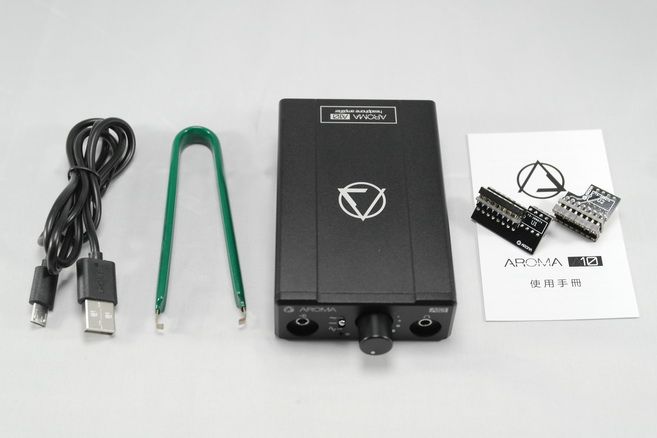

Accessories and Build Quality
As far as accessories are concerned, there are one micro USB cable for recharging, an opamp removing tool in case you want to do some opamp rolling, as well as two opamp adapters so that you can use single channel DIP8 opamp in the A10.
Build quality is pretty solid. Generally small brand portable amps from China can look a bit DIY’ish, but A10’s build quality is more in line with bigger brand offering such as that of FiiO and iBasso as it is noticeable that attention has been paid to the overall finishing. Of course, given it is retailed over USD$400 (based on Taobao estimation, and can go up to US$600 in Japan), I guess it has to look the part to justify the price. On a side note, there is also a separated linear power supply unit called PS10 that you can buy (~ USD$200+) for the A10 and really turns it into a desktop setup. I don’t have the PS10 and so we will be focusing on A10 as a portable amp, which can still be recharged via the common microUSB port.
One of the thing I really like about the A10 is the two included single-to-dual-channel opamp adapters, as it is a sign care has been taken during the design phase to make sure the A10 is as friendly to opamp roller as possible and gives the amp more ‘playability’. To roll opamp, you just need to unscrew the one big nut on the back and slide the top cover about 2cm backward, then pop it out to play with the opamp configuration. Do note that A10 has an internal +/-15V dual rail power supply line (*we will discuss more about this later on) so you must ensure you are using opamp that is compatible. If you have the PS10 however, you can also switch to +/-18V to further improve its performance.
One thing I’ll say that I don’t like about the A10 is the general lack of information. There is no detail user manual online, and the one included with the package is a bit too simple. Also, the official website is too minimalistic. Besides Taobao (*harder for most international buyer to access) and some Japanese retailer (*way too expensive), there is almost nowhere you can find this amp. That’s a shame actually. Given the company is based in Hong Kong that is known for their worldwide commerce, I would have thought they should put in more effort in capturing the international market.
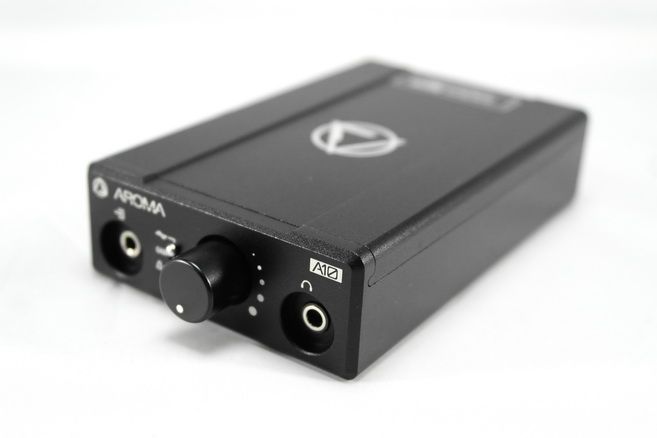

Gain, Hiss and EMI
There are two gain setting on the A10 – about -2dB at low gain and around 12.5dB for high gain. These number work pretty well from sensitive IEM to slightly demanding full sized headphone. The amp is also pretty much hiss free regarding of which gain setting you use. Even hiss prone IEM stays quiet on high gain with max volume. However, same can’t be said for its EMI performance as A10 gets rather loud EMI noise easily. Not only you won’t want to use it with smartphone as source, you probably won’t want to put them in the same pocket as well.
Tech Prelude
Something worth mentioning is that A10 has a fairly uncommon topology on its amp circuit, so let goes over some of the detail: First of, A10 runs on dual power line of +/-15V, which is quite high for a portable amp – and as far as amp is concerned, the higher the power line the better, as long as it doesn’t compromise the SNR as stepping up voltage always increases noise. The A10 power supply circuit, as far as I can tell, seems to have done the job quite gracefully. Secondly, the A10 employs two dual channel opamps for gain stage, but both with inverted input. That means the signal goes into the first opamp’s inverted input, which then outputs a signal that is 180 degree in phase. The inverted signal goes into the second opamp’s inverted input and comes out with the right phase again. The volume control is implemented right between the two opamp stages. I am not qualified to really explain to you why such implementation is useful, but similar implementation has been found on the ‘inverting O2’ and you can find out its pros and cons if you google around. The main benefit seems to be that it lowers the distortion. Lastly, the A10 has a full discrete, transistors based output stage. It will run in Class A with high impedance load and Class AB in lower impedance load.
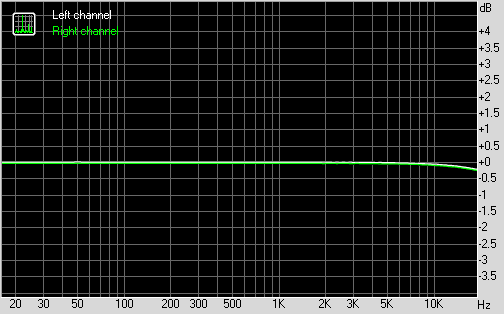
Sound Quality
As usual, we start our discussion of sound quality by doing some basic measurement. As far as RMAA goes, all the number looks really good. The frequency response is also pretty flat. It does goes down a tiny -0.3dB when it reaches 20 kHz, but that’s a probably too small to be audible. What doesn’t measure well is the output impedance – at 7ohm, it is definitely on the high side. Subsequently, the output current is also on the lower side of things. Judging from the output impedance and current output, I’ll say A10 is probably best with higher impedance, single driver headphone. Anything with a crossover or very low impedance might not behave at its best.
The stock opamps that shipped with the A10 are the OPA2604 for input buffer and first gain stage, followed by MUSES8920 for the main gain stage. Subjectively speaking, the stock combo sounds mostly neutral with a hint of richness and warmth, but nothing that can be referred as coloration. If I were to nitpick, perhaps soundstage can be better. While it is still quite good, it is not its strongest point. Beyond that, A10 sounds almost just as good as any top-tier portable amp I have heard – not among the best, but close enough.
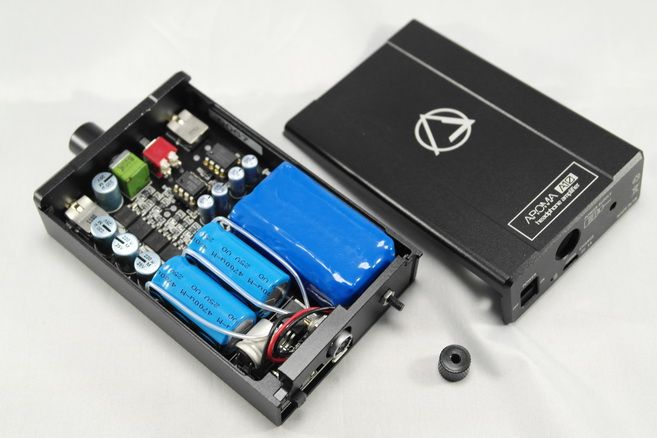
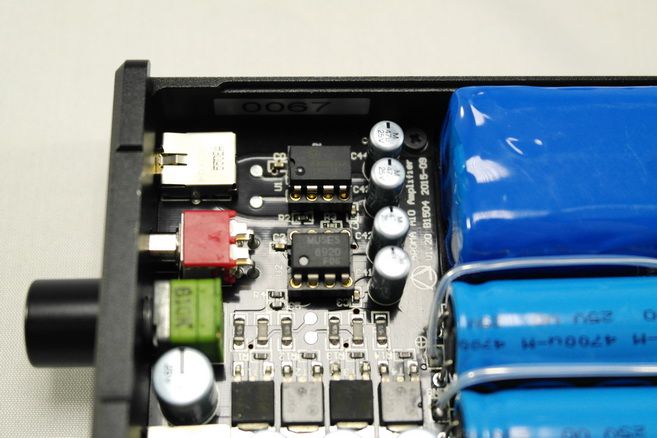
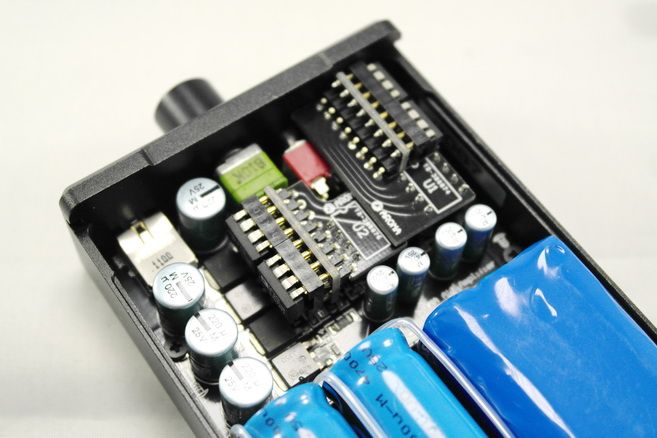
Opamp Rolling
One of the main selling point about A10 is its easiness for opamp rolling. But before trying, you need to be sure that the opamp can accept +/-15V or else it will be damaged. Here are a few opamp that I tried:
With MUSES8920 as second stage:
LME497200 – a clean, if not slightly lean sounding choice over the stock OPA2604 with better soundstage.
MUSES8820 – similar to OPA2604, but with better soundstage and layering.
OPA2209 – another clean sounding opamp, but balanced overall.
OPA2134 – lay back, a bit unremarkable.
OPA2227 – Not as good as OPA2209, but similar in presentation.
MUSES01 – similar to OPA2604, but slightly better on micro-detail.
MUSES02 – Another good balanced choice
With OPA2604 as first stage:
LME497200 – Rather similar to MUSES8920, perhaps with slightly better detail
MUSES8820 – Good and balanced overall
OPA2209 – Decent, nothing remarkable.
OPA2134 – Thick, not particularly good.
OPA2227 – Good soundstage, but a bit grainy on the treble.
MUSES01 – Not as thick as OPA2134, but still on the thicker side.
MUSES02 – Another good choice, better than 8820.
The above is just a small sample of opamp I tried, not that they are the best choice for you to start. But if there is just one opamp to replace, I’ll suggest rolling the OPA2604 first as it seems to be the main source of the richness/warmness and limiting factor on soundstage. With the right combo, I certain the A10 can sound as good as any top-tier portable amp.
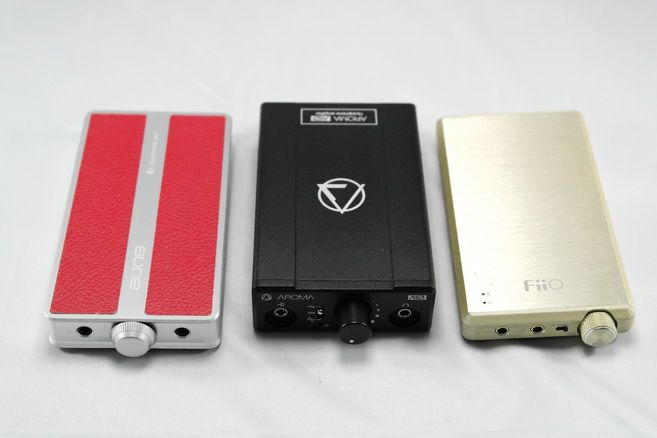
Size comparison (from left): Aune B1, A10, FiiO E12DIY.
Sum-up
Overall, A10 is a really good sounding amp with some solid performance, but limited by its high output impedance and low current output and therefore not quite the all-size-fits-all solution I am hoping it will be. But looking pass the fact that it probably is not a great choice for low impedance multi-driver IEM, the dual inverted gain stage and ease of opamp rolling does still make this a very interesting option if you are hunting for a portable amp.
A thank to Aroma Audio for the sample.

Spec
Max Power: 390mW (16ohm) / 360mW (32ohm) / 168mW (120ohm) / 53mW (300ohm)
SNR: 98dB
THD: 0.00097%
Max Voltage Output: 11.4Vp-p
Recommended Headphone Impedance: 8~600ohm
Battery Life: 7 hours (est.)
Recharge Time: 5 hours (5V 1A)
Dimension: 109x69x26.5mm
Weight: 270g


Accessories and Build Quality
As far as accessories are concerned, there are one micro USB cable for recharging, an opamp removing tool in case you want to do some opamp rolling, as well as two opamp adapters so that you can use single channel DIP8 opamp in the A10.
Build quality is pretty solid. Generally small brand portable amps from China can look a bit DIY’ish, but A10’s build quality is more in line with bigger brand offering such as that of FiiO and iBasso as it is noticeable that attention has been paid to the overall finishing. Of course, given it is retailed over USD$400 (based on Taobao estimation, and can go up to US$600 in Japan), I guess it has to look the part to justify the price. On a side note, there is also a separated linear power supply unit called PS10 that you can buy (~ USD$200+) for the A10 and really turns it into a desktop setup. I don’t have the PS10 and so we will be focusing on A10 as a portable amp, which can still be recharged via the common microUSB port.
One of the thing I really like about the A10 is the two included single-to-dual-channel opamp adapters, as it is a sign care has been taken during the design phase to make sure the A10 is as friendly to opamp roller as possible and gives the amp more ‘playability’. To roll opamp, you just need to unscrew the one big nut on the back and slide the top cover about 2cm backward, then pop it out to play with the opamp configuration. Do note that A10 has an internal +/-15V dual rail power supply line (*we will discuss more about this later on) so you must ensure you are using opamp that is compatible. If you have the PS10 however, you can also switch to +/-18V to further improve its performance.
One thing I’ll say that I don’t like about the A10 is the general lack of information. There is no detail user manual online, and the one included with the package is a bit too simple. Also, the official website is too minimalistic. Besides Taobao (*harder for most international buyer to access) and some Japanese retailer (*way too expensive), there is almost nowhere you can find this amp. That’s a shame actually. Given the company is based in Hong Kong that is known for their worldwide commerce, I would have thought they should put in more effort in capturing the international market.


Gain, Hiss and EMI
There are two gain setting on the A10 – about -2dB at low gain and around 12.5dB for high gain. These number work pretty well from sensitive IEM to slightly demanding full sized headphone. The amp is also pretty much hiss free regarding of which gain setting you use. Even hiss prone IEM stays quiet on high gain with max volume. However, same can’t be said for its EMI performance as A10 gets rather loud EMI noise easily. Not only you won’t want to use it with smartphone as source, you probably won’t want to put them in the same pocket as well.
Tech Prelude
Something worth mentioning is that A10 has a fairly uncommon topology on its amp circuit, so let goes over some of the detail: First of, A10 runs on dual power line of +/-15V, which is quite high for a portable amp – and as far as amp is concerned, the higher the power line the better, as long as it doesn’t compromise the SNR as stepping up voltage always increases noise. The A10 power supply circuit, as far as I can tell, seems to have done the job quite gracefully. Secondly, the A10 employs two dual channel opamps for gain stage, but both with inverted input. That means the signal goes into the first opamp’s inverted input, which then outputs a signal that is 180 degree in phase. The inverted signal goes into the second opamp’s inverted input and comes out with the right phase again. The volume control is implemented right between the two opamp stages. I am not qualified to really explain to you why such implementation is useful, but similar implementation has been found on the ‘inverting O2’ and you can find out its pros and cons if you google around. The main benefit seems to be that it lowers the distortion. Lastly, the A10 has a full discrete, transistors based output stage. It will run in Class A with high impedance load and Class AB in lower impedance load.

Sound Quality
As usual, we start our discussion of sound quality by doing some basic measurement. As far as RMAA goes, all the number looks really good. The frequency response is also pretty flat. It does goes down a tiny -0.3dB when it reaches 20 kHz, but that’s a probably too small to be audible. What doesn’t measure well is the output impedance – at 7ohm, it is definitely on the high side. Subsequently, the output current is also on the lower side of things. Judging from the output impedance and current output, I’ll say A10 is probably best with higher impedance, single driver headphone. Anything with a crossover or very low impedance might not behave at its best.
The stock opamps that shipped with the A10 are the OPA2604 for input buffer and first gain stage, followed by MUSES8920 for the main gain stage. Subjectively speaking, the stock combo sounds mostly neutral with a hint of richness and warmth, but nothing that can be referred as coloration. If I were to nitpick, perhaps soundstage can be better. While it is still quite good, it is not its strongest point. Beyond that, A10 sounds almost just as good as any top-tier portable amp I have heard – not among the best, but close enough.



Opamp Rolling
One of the main selling point about A10 is its easiness for opamp rolling. But before trying, you need to be sure that the opamp can accept +/-15V or else it will be damaged. Here are a few opamp that I tried:
With MUSES8920 as second stage:
LME497200 – a clean, if not slightly lean sounding choice over the stock OPA2604 with better soundstage.
MUSES8820 – similar to OPA2604, but with better soundstage and layering.
OPA2209 – another clean sounding opamp, but balanced overall.
OPA2134 – lay back, a bit unremarkable.
OPA2227 – Not as good as OPA2209, but similar in presentation.
MUSES01 – similar to OPA2604, but slightly better on micro-detail.
MUSES02 – Another good balanced choice
With OPA2604 as first stage:
LME497200 – Rather similar to MUSES8920, perhaps with slightly better detail
MUSES8820 – Good and balanced overall
OPA2209 – Decent, nothing remarkable.
OPA2134 – Thick, not particularly good.
OPA2227 – Good soundstage, but a bit grainy on the treble.
MUSES01 – Not as thick as OPA2134, but still on the thicker side.
MUSES02 – Another good choice, better than 8820.
The above is just a small sample of opamp I tried, not that they are the best choice for you to start. But if there is just one opamp to replace, I’ll suggest rolling the OPA2604 first as it seems to be the main source of the richness/warmness and limiting factor on soundstage. With the right combo, I certain the A10 can sound as good as any top-tier portable amp.

Size comparison (from left): Aune B1, A10, FiiO E12DIY.
Sum-up
Overall, A10 is a really good sounding amp with some solid performance, but limited by its high output impedance and low current output and therefore not quite the all-size-fits-all solution I am hoping it will be. But looking pass the fact that it probably is not a great choice for low impedance multi-driver IEM, the dual inverted gain stage and ease of opamp rolling does still make this a very interesting option if you are hunting for a portable amp.
A thank to Aroma Audio for the sample.
Onny Izwan
That's why the Chord Mojo is such a successful product. The sound signature is already sorted by manufacturer. Zero flaws.
ClieOS
@Onny Izwan IYO, I guess so. I own Mojo too and won't go as far as calling it zero flaw.
Onny Izwan
hehe.. you are one of the world's luckiest dudes to own such an exemplary device
ClieOS
IEM Reviewer Extraordinaire
Pros: Build Quality
Cons: Bright Sound
Echobox is a new startup with a strong audiophile’s background, and the Finder X1 is the company’s first IEM that has placed an emphasis on durability as much as it is on sound quality. The company has already finished up a successfully indiegogo campaign that offered the early bird Finder X1 for US$79, though you can still get one at US$149 with a January delivery day before it will be eventually sold at its regular price of US$199.
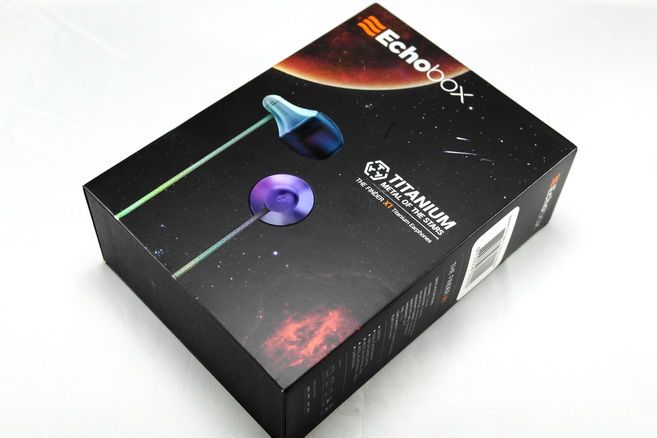
Spec
Driver: 9.2mm dynamic driver with PEEK diaphragm
Frequency Response: 15Hz ~ 35kHz
Sensitivity: 96dB/mW
Impedance: 22ohm
THD: under 1%
Housing: Titanium
Plug: 3.5mm Stereo Gold Plated
Cable: 1.2m Silver Plated Copper
Sound Tuning Filter: Reference, Bass and Treble.
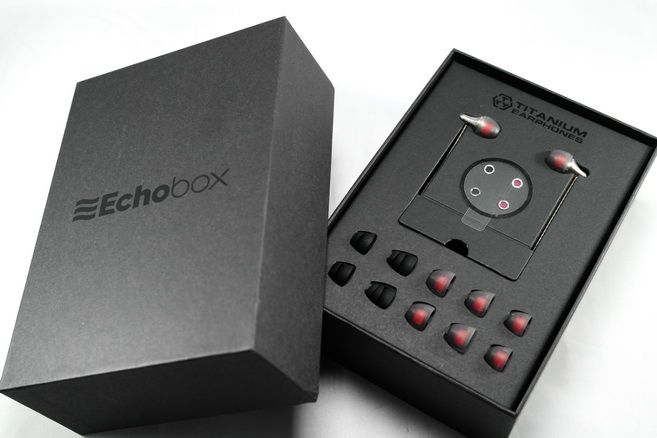
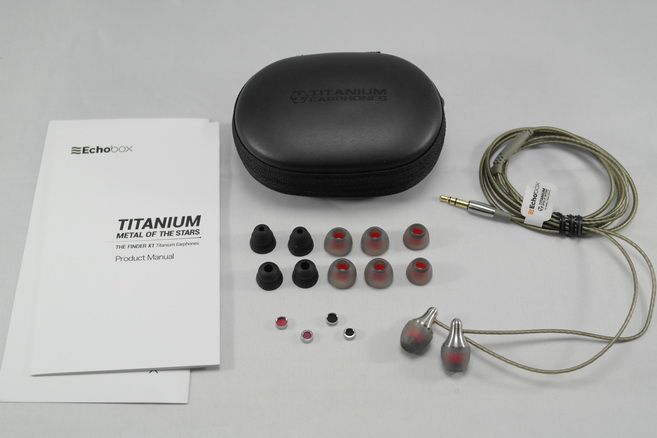
Packaging, Accessories and Build Quality
The Finder X1 I have with me is probably the same as the early bird perk, so there might be a little different form the final retail version as far as packaging goes. But if the early bird packaging is of any indication to the level of attention that Echobox has put into its product, I can only guess the retail packaging will only get better as it certainly doesn’t look anything short of a high-quality, retail-ready product. However, as much as I am impressed with what I have seen, there are still one minor flaws – the sound tuning filters are so tightly fitted into the box that I have a really hard time getting them out. Also, it would have been nice to have a small case or holder to put those filters in once they are taken out of the box. While the included hard case is really good in quality, it doesn’t have the right compartment to place the 4 tiny filters in by themselves as they can fall out quite easily. This might come as a slight inconvenience for those who like to re-tune their Finder X1 from time to time as you might have to find your own way to secure those filter in the hard case.
Accessories wise, besides the filters and hard case I have mentioned, you will also find a couple pairs of single flange silicone eartips of different size and two pair of tri-flanges of different size. For the retail version, there should be some Comply foam tips included as well. All and all, a fairly good selection of accessories, though nothing above and beyond.
Build quality is where the Finder X1 excels – well, mostly. Echobox has made a point that the Finder X1’s housing is made out of titanium for increased durability, but I will say that the finishing is quite beautiful as well. As an added bonus, it is also extremely light. The cable is also equally good in quality and look – so why is it not the perfect IEM? Firstly, because of the bell shape design small housing and the lack of cable’s strain relief, it is actually not that easiest shape to grab when you are trying to remove it from your ears (and make worst if it sits deeper in a larger ear canal). That tends to encourage user to grab onto the cable to remove the earpiece – while the cable is really good in quality, no doubt all the pulling still won’t be great in the long run. Also noticeable is that the single flange eartips, while excellent in build quality, could use a small opening on its nozzle as the current design isn’t the most optimum for smaller ears. Lastly, I notice the reference (black) filter doesn’t screw all the way down like the bass and treble filter. Though it doesn’t impair its functionality (and you won’t be able to see it under the eartips anyway), it does mean the reference filter is slightly easier to unscrew than the others. None of the above is really much of a turndown, so to speak, as the overall build quality remains excellent and these issues can be overcome with either careful use or aftermarket parts. But in a sense, it is still a little bit form over function.
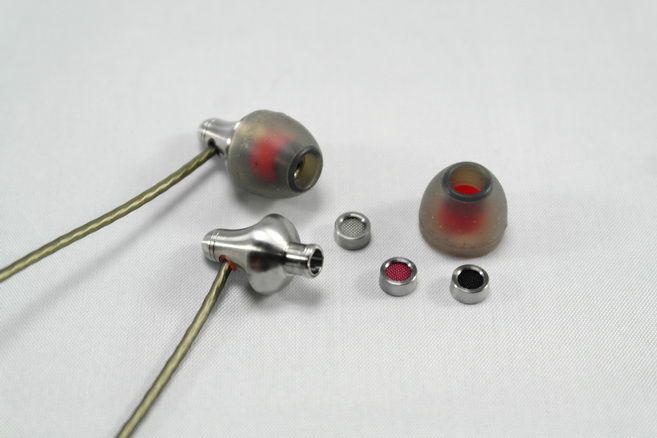

Sound Quality
As far as sound signature goes, the Finder X1 has a mild U-shaped sound with a bright upper tone. Bass extends fairly deep, but lacks a bit of body and weight to really have a character of its own. It won’t be a bass head’s dream-come-true, so to speak, but otherwise there is no real fault to speak of either. It is clean, well behaved and overall in good quality. Mid is rather on the dry side, as you would have expected from a mild U-shaped sound signature. As a result, vocal sounds just a bit too far - not entirely lifeless but it does leave the listener wanting for more. Treble on the other hand is both the highlight and perhaps the Achilles’ heel of Finder X1, and this is where the tuning filters have the most effect. On the default reference filter, the treble is crisp, airy and beautifully extended on the top, but comes up almost edgy near the upper mid / lower treble range and can be somewhat irritating on my normal listening volume. The treble filter just worsen the edginess a bit more and as a result, I didn’t quite spend any real time on it. The good news is the bass filter does tame the treble down enough that I can more comfortably listen to the Finder X1 for an extended period of time, provided if I don’t push the volume too high, which will bring the edginess back again. The downside is however, the bass filter does take always some of the crispiness and airiness in exchange. Due to the mild U-shaped sound and the well extended treble, soundstage is excellent on the reference and treble filter. Even with the bass filter, which reduces the airiness a bit, it is still well above average.
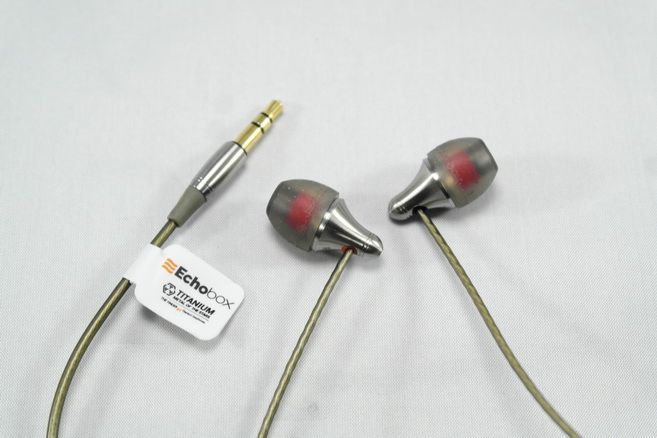
Sum-up
As Echobox first IEM, the Finder X1 speaks quality – both sonically as well as aesthetically. If you already got the early bird US$79 deal, I’ll congratulate you for getting a lot of IEM for quite a small price. Even If you are on the January deal of US$149, it is still a good bargain overall. The final retail price of $199 however will definitely put Finder X1 in stiffer competition since that is the same space where some of the best value / performance IEM occupy. So if you are already planning on getting a pair, do it before it is too late – of course, I do want to put the emphasis that the Finder X1 is not for everyone – just make sure you do like a mild U-shaped sound with a bit of brightness. I can imagine music like EDM and string instrument will go particularly well with the Finder X1’s clean and slightly sterile presentation.
If ever Exhobox could give the Finder X1 is bit more warmth and a bit less treble, it could very well have a big winner at hand. While Finder X1 is not perfect, it is still stellar as a first effort into the very crowded IEM market.
A thanks to Echobox for the review sample.

Spec
Driver: 9.2mm dynamic driver with PEEK diaphragm
Frequency Response: 15Hz ~ 35kHz
Sensitivity: 96dB/mW
Impedance: 22ohm
THD: under 1%
Housing: Titanium
Plug: 3.5mm Stereo Gold Plated
Cable: 1.2m Silver Plated Copper
Sound Tuning Filter: Reference, Bass and Treble.


Packaging, Accessories and Build Quality
The Finder X1 I have with me is probably the same as the early bird perk, so there might be a little different form the final retail version as far as packaging goes. But if the early bird packaging is of any indication to the level of attention that Echobox has put into its product, I can only guess the retail packaging will only get better as it certainly doesn’t look anything short of a high-quality, retail-ready product. However, as much as I am impressed with what I have seen, there are still one minor flaws – the sound tuning filters are so tightly fitted into the box that I have a really hard time getting them out. Also, it would have been nice to have a small case or holder to put those filters in once they are taken out of the box. While the included hard case is really good in quality, it doesn’t have the right compartment to place the 4 tiny filters in by themselves as they can fall out quite easily. This might come as a slight inconvenience for those who like to re-tune their Finder X1 from time to time as you might have to find your own way to secure those filter in the hard case.
Accessories wise, besides the filters and hard case I have mentioned, you will also find a couple pairs of single flange silicone eartips of different size and two pair of tri-flanges of different size. For the retail version, there should be some Comply foam tips included as well. All and all, a fairly good selection of accessories, though nothing above and beyond.
Build quality is where the Finder X1 excels – well, mostly. Echobox has made a point that the Finder X1’s housing is made out of titanium for increased durability, but I will say that the finishing is quite beautiful as well. As an added bonus, it is also extremely light. The cable is also equally good in quality and look – so why is it not the perfect IEM? Firstly, because of the bell shape design small housing and the lack of cable’s strain relief, it is actually not that easiest shape to grab when you are trying to remove it from your ears (and make worst if it sits deeper in a larger ear canal). That tends to encourage user to grab onto the cable to remove the earpiece – while the cable is really good in quality, no doubt all the pulling still won’t be great in the long run. Also noticeable is that the single flange eartips, while excellent in build quality, could use a small opening on its nozzle as the current design isn’t the most optimum for smaller ears. Lastly, I notice the reference (black) filter doesn’t screw all the way down like the bass and treble filter. Though it doesn’t impair its functionality (and you won’t be able to see it under the eartips anyway), it does mean the reference filter is slightly easier to unscrew than the others. None of the above is really much of a turndown, so to speak, as the overall build quality remains excellent and these issues can be overcome with either careful use or aftermarket parts. But in a sense, it is still a little bit form over function.


Sound Quality
As far as sound signature goes, the Finder X1 has a mild U-shaped sound with a bright upper tone. Bass extends fairly deep, but lacks a bit of body and weight to really have a character of its own. It won’t be a bass head’s dream-come-true, so to speak, but otherwise there is no real fault to speak of either. It is clean, well behaved and overall in good quality. Mid is rather on the dry side, as you would have expected from a mild U-shaped sound signature. As a result, vocal sounds just a bit too far - not entirely lifeless but it does leave the listener wanting for more. Treble on the other hand is both the highlight and perhaps the Achilles’ heel of Finder X1, and this is where the tuning filters have the most effect. On the default reference filter, the treble is crisp, airy and beautifully extended on the top, but comes up almost edgy near the upper mid / lower treble range and can be somewhat irritating on my normal listening volume. The treble filter just worsen the edginess a bit more and as a result, I didn’t quite spend any real time on it. The good news is the bass filter does tame the treble down enough that I can more comfortably listen to the Finder X1 for an extended period of time, provided if I don’t push the volume too high, which will bring the edginess back again. The downside is however, the bass filter does take always some of the crispiness and airiness in exchange. Due to the mild U-shaped sound and the well extended treble, soundstage is excellent on the reference and treble filter. Even with the bass filter, which reduces the airiness a bit, it is still well above average.

Sum-up
As Echobox first IEM, the Finder X1 speaks quality – both sonically as well as aesthetically. If you already got the early bird US$79 deal, I’ll congratulate you for getting a lot of IEM for quite a small price. Even If you are on the January deal of US$149, it is still a good bargain overall. The final retail price of $199 however will definitely put Finder X1 in stiffer competition since that is the same space where some of the best value / performance IEM occupy. So if you are already planning on getting a pair, do it before it is too late – of course, I do want to put the emphasis that the Finder X1 is not for everyone – just make sure you do like a mild U-shaped sound with a bit of brightness. I can imagine music like EDM and string instrument will go particularly well with the Finder X1’s clean and slightly sterile presentation.
If ever Exhobox could give the Finder X1 is bit more warmth and a bit less treble, it could very well have a big winner at hand. While Finder X1 is not perfect, it is still stellar as a first effort into the very crowded IEM market.
A thanks to Echobox for the review sample.
glassmonkey
Thanks for the review! I seem to remember something about the strain relief being built into the casing. Maybe @Gilly87 can clarify?
mochill
I read it is built in the housing as well .
ClieOS
IEM Reviewer Extraordinaire
Pros: Excellent Build Guality, Good Sound Quality.
Cons: None really.
Elekit Japan is not your typical audio company. Their core business is in fact not audio, but the design and manufacture of educational electronic kits. Perhaps it is because of this unique background, they are more willing to exploring the different paths to music enjoyment. The new TU-HP02, the company’s second portable amp, best reflects that idea by purposefully introduces distortion that mimics the sound of a tube amp. The idea is however not as outlandish as it sounds since it has been tried by others in the past, though this may be the first portable amp to do so, or at least to my knowledge.
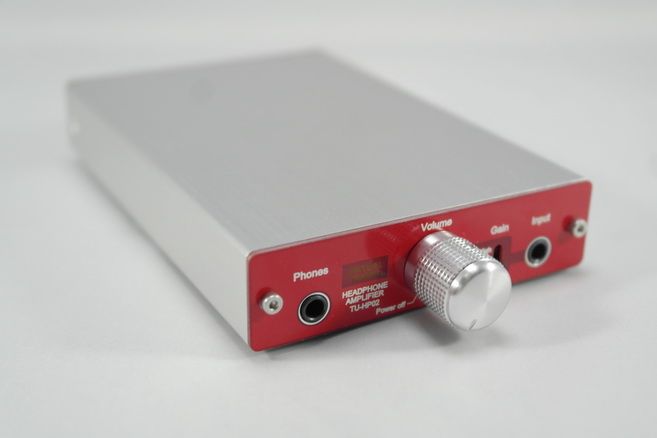
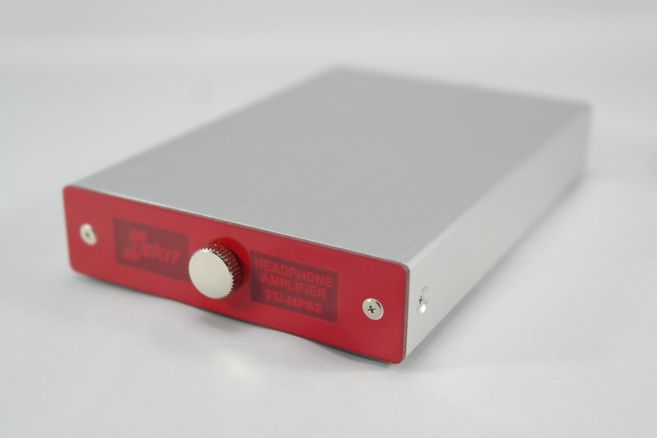
Spec
Recommended Headphone Impedance: 16-300ohm
Maximum Output: 170mW @ 16 ohm
Frequency Response: 1Hz-230kHz (-3dB)
Power Supply: 4 x AA battery or 4 x rechargeable NiHM AA battery
Power Consumption: Approx. 40mA (no signal) or 60mA (10mW @ 16 ohm)
Battery Life: Approx. 30 hours of continuous use (10mW @ 16 ohm)
Dimensions: W75 x H19 x D132 mm
Weight: 175g [excl. batteries]
MSRP: US$245
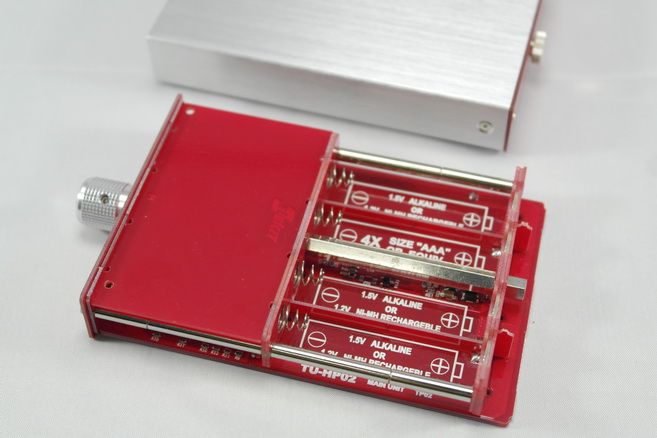
Build Quality
Like the TU-HP01 I have reviewed before, the TU-HP02 has an excellent build quality. The one I received for this review is a pre-production unit so some of the marking are wrong, but otherwise it should be identical to the retail version. The amp takes either 4 AA size batteries and they can be either alkaline or NiHM rechargeable. The front and back panels are basically the same material as the PCB, which is the same style as they have done it on the TU-HP01 and to be frank, quite to my liking. Unscrew it on the back and the whole PCB and front panel will easily slide out of the housing for battery exchange. Battery life is estimated to be around 30 hours depends on volume and load, which is pretty good consider they are running on AA batteries. I am actually still on my first set of batteries as it seems to go on forever and I just give up trying to drain them empty after the first 10 hours.
Gain, Hiss and EMI
Based on my measurement, the two gain settings are rather far apart, with low gain at about -8dB and high gain at around +9dB. Those these number seems a bit more extreme, it actually works out rather well in practise. The low gain setting work best if you have a high output source (i.e. a FiiO’s DAP with well over 1Vrms of line-out) with very sensitive headphone to prevent clipping, while the high gain setting works best with low output source (i.e. Sony’s DAP with under 0.5Vrms of line-out) that needed the voltage boost. They are far more versatile than that of TU-HP01’s gain settings to say the least.
Another area that shows good improvement is hiss. The TU-HP01, being an actual tube amp, suffers from microphonics and the resulting hiss. TU-HP02 on the other hand has no such problem. Hiss is extremely fainted (and arguably inaudible) even with maxed out volume in high gain on my most hiss-prone IEM.
EMI is also excellent with no detectable interference from a cellphone making/receiving call in close proximity. Click and pop during startup is fairly well behaved too.
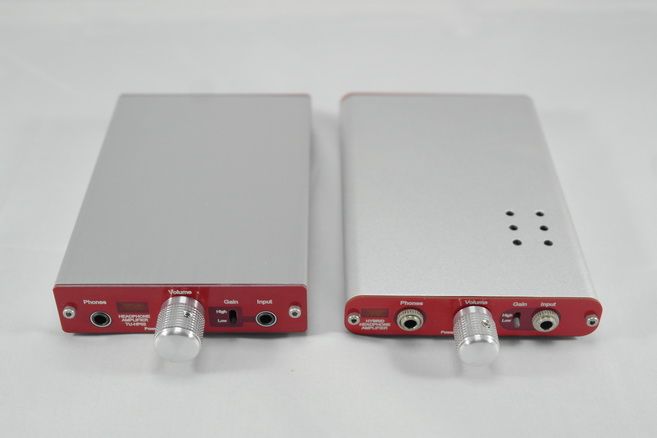
TU-HP02 (left) and TU-HP-01 (right)
Tech Prelude
So what exactly is this tube’s distortion Elekit has designed into the amp? Well, it is basically referring to the harmonics distortion that comes with a typical triode tube gain stage, and most importantly, the second harmonics that is associated with added body, depth and richness to the fundamental (i.e. with a 1kHz fundamental, the second harmonics will be the double at 2kHz, so on and so forth). Inside the TU-HP02, Elekit has designed a full discrete amp stage that recreates these harmonics distortion and they refer it as the ‘trioderized’ sound.
Sound Quality
As usual, the sound quality evaluation starts with some basic measurements. As far as RMAA’s result goes, TU-HP02’s noise, dynamic range and stereo crosstalk number are pretty good and close to the reference O2. As expected, intermodulation distortion and total harmonic distortion are both noticeably higher due to the purposefully implemented tube-like distortion circuit, though the number are still below the 1% threshold. Frequency response is flat from 20Hz to 20kHz. Output impedance is calculated at 1.4 ohm, which is fairly low. Plenty of current output which means it should have no problem driving even very low impedance headphone. All and all, the numbers look quite solid.
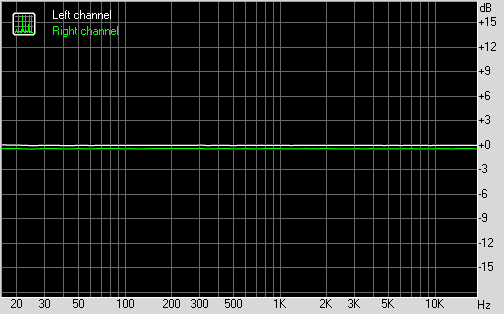
Subjective listening on the other hand is quite a surprise. Given the emphasis from Elekit for having a ‘tube-ish’ sound, I had somewhat expecting TU-HP02 to have a rather warm, if not thick and mellowed sound signature. However, the first impression that comes to my mind during the first listen is that it is actually quite a clean sounding amp, if not approaching what I will usually refer as being ‘transparent’ sounding – a term typically reversed for my reference O2 amp (and that brings back my memory of the TU-HP01’s review, but we will leave it for a later discussion). Further A/Bing between the TU-HP02 and O2 confirms this. TU-HP02 is very much like a slightly richer sounding O2 – a beautified version without any obvious coloration, if you will. The major (or actually the minor) difference is that TU-HP02 isn’t as clearly defined or sharp in each note because there is more ‘room filling’ detail in between each note. Similarly the soundstage seems smaller on the TU-HP02 because of the increase in detail that fills in more space, though a very close back and forth comparison will reveal that TU-HP02’s soundstage by itself is by no mean small in anyway. I guess an analogue will be a room that is totally empty feels ‘more open’ when compared to the same room with one chair in it. Of course what I am describing here are rather subtle in nature and I have a hunch that most people might not able to tell which is which in a brief listening.
So how does it compared to its elder brother, the portable hybrid tube amp TU-HP01 (with MUSES8820) I reviewed awhile back? Well, they are eerily similar in presentation. I said it in the TU-HP01 review that it is hard to really say whether it has a really tube-ish or solid state sound and the same applies to TU-HP02 as well. Looking the other way around, I guess you can say they both have the best of two worlds – but what makes TU-HP02 better is that it doesn’t have any of the downsides of TU-HP01.
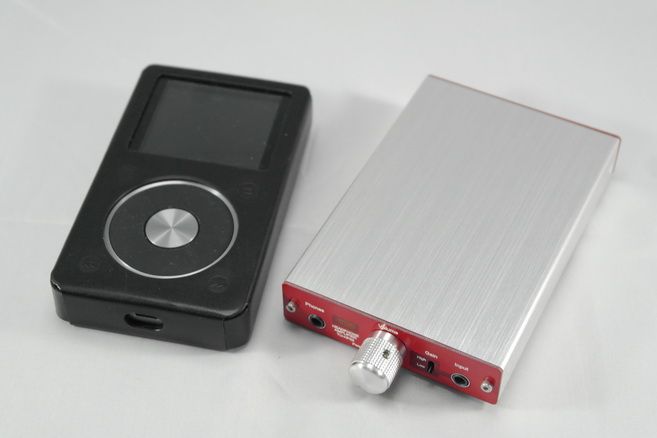
FiiO X5II (left) and TU-HP02 (right)
Sum-up
I like the TU-HP01 and TU-HP02 just does it better in every way (except unless you are counting the higher price tag as a negative). While it might not have the opamp rolling capability of its elder brother for the user to customize, it is more refined in design and more practical in use. This makes TU-HP02 an excellent portable amp that I can recommend without reservation.
A thank to both Elekit Japan and VKMusic.ca for the review sample.


Spec
Recommended Headphone Impedance: 16-300ohm
Maximum Output: 170mW @ 16 ohm
Frequency Response: 1Hz-230kHz (-3dB)
Power Supply: 4 x AA battery or 4 x rechargeable NiHM AA battery
Power Consumption: Approx. 40mA (no signal) or 60mA (10mW @ 16 ohm)
Battery Life: Approx. 30 hours of continuous use (10mW @ 16 ohm)
Dimensions: W75 x H19 x D132 mm
Weight: 175g [excl. batteries]
MSRP: US$245

Build Quality
Like the TU-HP01 I have reviewed before, the TU-HP02 has an excellent build quality. The one I received for this review is a pre-production unit so some of the marking are wrong, but otherwise it should be identical to the retail version. The amp takes either 4 AA size batteries and they can be either alkaline or NiHM rechargeable. The front and back panels are basically the same material as the PCB, which is the same style as they have done it on the TU-HP01 and to be frank, quite to my liking. Unscrew it on the back and the whole PCB and front panel will easily slide out of the housing for battery exchange. Battery life is estimated to be around 30 hours depends on volume and load, which is pretty good consider they are running on AA batteries. I am actually still on my first set of batteries as it seems to go on forever and I just give up trying to drain them empty after the first 10 hours.
Gain, Hiss and EMI
Based on my measurement, the two gain settings are rather far apart, with low gain at about -8dB and high gain at around +9dB. Those these number seems a bit more extreme, it actually works out rather well in practise. The low gain setting work best if you have a high output source (i.e. a FiiO’s DAP with well over 1Vrms of line-out) with very sensitive headphone to prevent clipping, while the high gain setting works best with low output source (i.e. Sony’s DAP with under 0.5Vrms of line-out) that needed the voltage boost. They are far more versatile than that of TU-HP01’s gain settings to say the least.
Another area that shows good improvement is hiss. The TU-HP01, being an actual tube amp, suffers from microphonics and the resulting hiss. TU-HP02 on the other hand has no such problem. Hiss is extremely fainted (and arguably inaudible) even with maxed out volume in high gain on my most hiss-prone IEM.
EMI is also excellent with no detectable interference from a cellphone making/receiving call in close proximity. Click and pop during startup is fairly well behaved too.

TU-HP02 (left) and TU-HP-01 (right)
Tech Prelude
So what exactly is this tube’s distortion Elekit has designed into the amp? Well, it is basically referring to the harmonics distortion that comes with a typical triode tube gain stage, and most importantly, the second harmonics that is associated with added body, depth and richness to the fundamental (i.e. with a 1kHz fundamental, the second harmonics will be the double at 2kHz, so on and so forth). Inside the TU-HP02, Elekit has designed a full discrete amp stage that recreates these harmonics distortion and they refer it as the ‘trioderized’ sound.
Sound Quality
As usual, the sound quality evaluation starts with some basic measurements. As far as RMAA’s result goes, TU-HP02’s noise, dynamic range and stereo crosstalk number are pretty good and close to the reference O2. As expected, intermodulation distortion and total harmonic distortion are both noticeably higher due to the purposefully implemented tube-like distortion circuit, though the number are still below the 1% threshold. Frequency response is flat from 20Hz to 20kHz. Output impedance is calculated at 1.4 ohm, which is fairly low. Plenty of current output which means it should have no problem driving even very low impedance headphone. All and all, the numbers look quite solid.

Subjective listening on the other hand is quite a surprise. Given the emphasis from Elekit for having a ‘tube-ish’ sound, I had somewhat expecting TU-HP02 to have a rather warm, if not thick and mellowed sound signature. However, the first impression that comes to my mind during the first listen is that it is actually quite a clean sounding amp, if not approaching what I will usually refer as being ‘transparent’ sounding – a term typically reversed for my reference O2 amp (and that brings back my memory of the TU-HP01’s review, but we will leave it for a later discussion). Further A/Bing between the TU-HP02 and O2 confirms this. TU-HP02 is very much like a slightly richer sounding O2 – a beautified version without any obvious coloration, if you will. The major (or actually the minor) difference is that TU-HP02 isn’t as clearly defined or sharp in each note because there is more ‘room filling’ detail in between each note. Similarly the soundstage seems smaller on the TU-HP02 because of the increase in detail that fills in more space, though a very close back and forth comparison will reveal that TU-HP02’s soundstage by itself is by no mean small in anyway. I guess an analogue will be a room that is totally empty feels ‘more open’ when compared to the same room with one chair in it. Of course what I am describing here are rather subtle in nature and I have a hunch that most people might not able to tell which is which in a brief listening.
So how does it compared to its elder brother, the portable hybrid tube amp TU-HP01 (with MUSES8820) I reviewed awhile back? Well, they are eerily similar in presentation. I said it in the TU-HP01 review that it is hard to really say whether it has a really tube-ish or solid state sound and the same applies to TU-HP02 as well. Looking the other way around, I guess you can say they both have the best of two worlds – but what makes TU-HP02 better is that it doesn’t have any of the downsides of TU-HP01.

FiiO X5II (left) and TU-HP02 (right)
Sum-up
I like the TU-HP01 and TU-HP02 just does it better in every way (except unless you are counting the higher price tag as a negative). While it might not have the opamp rolling capability of its elder brother for the user to customize, it is more refined in design and more practical in use. This makes TU-HP02 an excellent portable amp that I can recommend without reservation.
A thank to both Elekit Japan and VKMusic.ca for the review sample.
ClieOS
@earfonia At high gain with a 2Vrms input, it will run out of voltage swing at around 2.5Vrms. With a 1Vrms input, the output will be around 2.3Vrms. This kind of number might be okay for a high impedance headphone if the sensitivity is high enough, but I guess it will really be pushing it.
@rmullins08 As I have mentioned in the review, this is a pre-release prototype, so some of the marking are wrong. The circuit however is the same as the retail version.
@rmullins08 As I have mentioned in the review, this is a pre-release prototype, so some of the marking are wrong. The circuit however is the same as the retail version.
mayi
4 removable batteries?
ClieOS
@mayi They are AA batteries, so yes, removable and replaceable.
ClieOS
IEM Reviewer Extraordinaire
Pros: Value for Money, Design and Build Quality., SQ and wide OTG support
Cons: DSD256 only in native mode.
You probably already know OPPO as a smartphone brand, but the company called OPPO Digital isn’t exactly the same. It is the American sister company of the Chinese smartphone company, and its main business is Blu-ray player. Recent years however, the company also begins to develop a series of personal audio products including desktop headphone amp and a few planar magnetic headphones, which are very well received by the audiophiles’ community. The HA-2 we are going to look at is the company’s first portable amp + DAC and as the title of this article already suggested – quite an outstanding piece of kit.
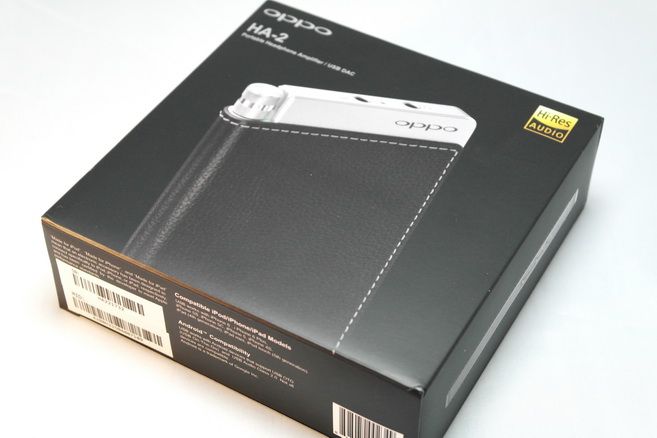
Spec
Frequency Response: 20 Hz - 200 kHz
Audio-in Level: 1Vrms
Line-out Level: 1Vrms
Recommended Headphone Impedance: 16 Ohm - 300 Ohm
Maximum Output Power: 300mW @ 16 Ohm, 220mW @ 32 Ohm, 30mW @ 300 Ohm
Headphone-out Output Impedance: 0.5 Ohm
Output: 3.5mm Headphone-out, 3.5mm Line-out
Input:
Analog: 3.5 mm stereo audio-in
Digital:
USB A for iPod / iPhone / iPad;
USB micro-B for smartphones with USB OTG feature and computers.
DAC Chip: ESS Sabre32 Reference ES9018-K2M
Input Format: Stereo PCM, Stereo DSD (DoP v1.1 or native)
PCM Sampling Frequencies: 44.1 kHz - 384 kHz, 16 / 24 / 32-bit
DSD Sampling Frequencies: 2.8224 MHz (DSD64), 5.6448 MHz (DSD128), 11.2896 MHz (DSD256, native mode only)
Battery type: 3000mAh Li-Po Rechargeable
Battery Life: Approx. 13 hours (Audio-in) or 7 hours (Digital-in)
Dimensions (W x H x D): 2.7 x 5.375 x 0.5 inches, 68 x 137 x 12 mm
Weight: 6.2 oz, 175 grams
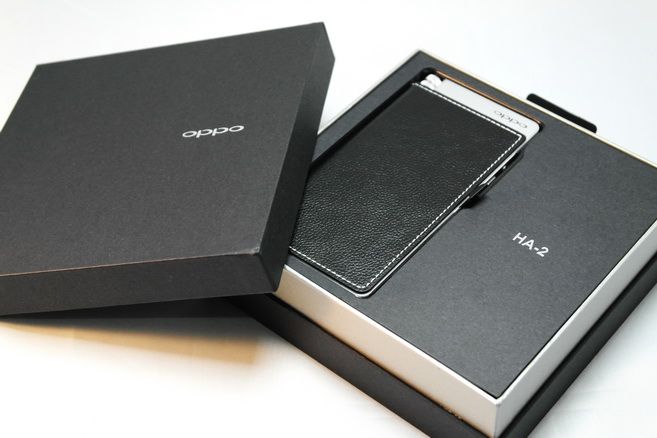
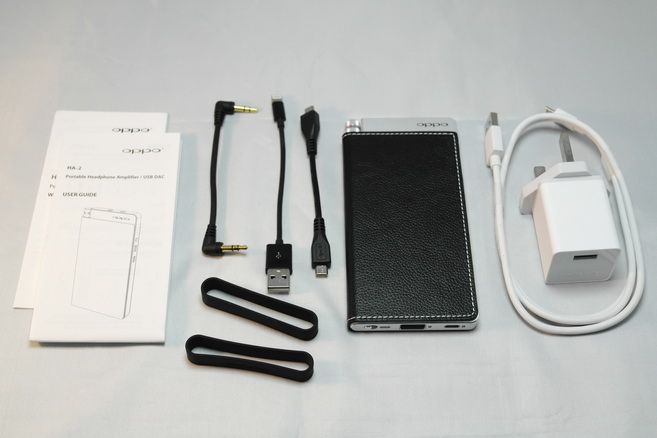
Build Quality
Right off the bat, the packaging of HA-2 already screams premier quality. It almost feels like you just got a top-of-the-line smartphone rather than a portable amp+DAC. The actual build quality is of course just as good as what the packaging has suggested. While I already told you that OPPO smartphone and OPPO Digital isn’t the same company, the HA-2 sure looks like it shared some of the smartphone’s gene on how well it is designed and put together. There is no rough corner anywhere and most of the housing is covered in real leather. I have seen and owned some great portable amp and DAC in my life, but HA-2 has the best build quality so far. It is the portable amp+DAC that won’t make you look geeky when it sits next to your smartphone / iPod / iPhone.
As far as accessories go, HA-2 comes with just about everything you need to enjoy your music. All you need is to supply the compatible source and a pair of headphone. In the box, you will find the OPPO’s VOOC Flash charger (which is similar but not identical to Qualcomm Quick Charge on how it functions), the VOOC compatible USB cable, two rubber bands, a 3.5mm-to-3.5mm interconnecting cable, a Lightning-to-USB-A OTG cable for Apple devices and a micro-to-micro USB OTG cable for Android device.

ABC switch for input: A for iDevice, B for PC and Android, C for analog audio-in.

Gain switch, bass boost, and battery button.
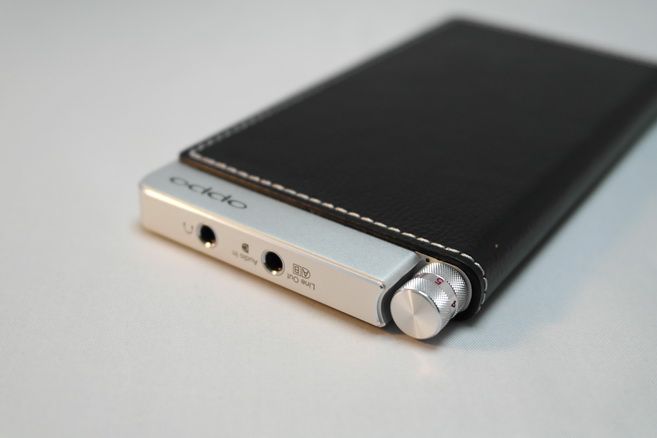
The 3.5mm analog audio-in socket also double as line-out when used with digital source.
Battery Life
The actually battery life is pretty close to the quoted number by OPPO, which is roughly 13 hours as amp only or 7 hours as amp+DAC, gives or takes an hour or so depends on the volume and headphone you used. Battery capacity can be checked by a single quick press to the battery button on the side.
A few things to note: First, if you are using an Android smartphone as source and not planning to use the stock micro-to-micro USB cable, you need to find a compatible cable in order to stop HA-2 from draining your smartphone battery. What you want is a bi-directional micro-to-micro USB OTG cable, not a one-way OTG cable (which is an older standard and rarer these days, but you can still find it). Secondly, HA-2 can be used as a power bank to charge your digital source, mainly smartphone and iDevices, by pressing and holding the battery button until the battery LED lights up. You can use this even when you are listening to music on HA-2, which will keep your digital source’s battery top up as much as it can, but also shorten HA-2 battery life noticeably.
Gain, Hiss and EMI
There are two gain setting on the side of HA-2. The lower gain setting is actually a negative gain of about -2dB, where the high gain setting is about +8dB. We will discuss further on this in the SQ section.
Hiss performance is quite excellent. Even with my hiss prone Shure SE530, there is no noticeable hiss to speak of with maxed out volume on both high and low gain. Same can be said to click and pop performance, which is barely noticeable. EMI performance is also great. The black ground stays pretty much pitch black with no interference from a smartphone receiving call sitting next to it.

Size comparison (from left): Sony Xperia Z2, HA-2, FiiO E12A.
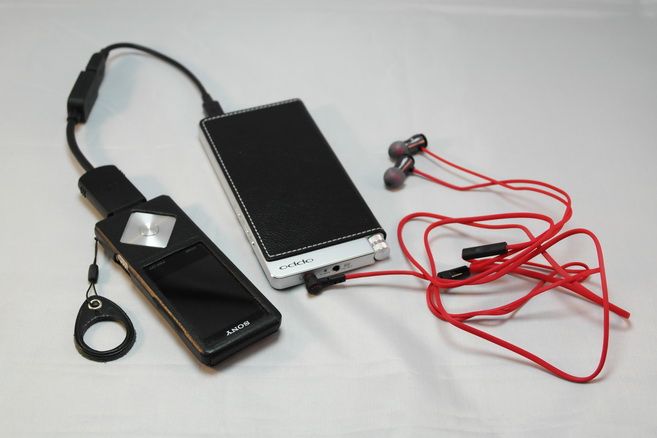
Sony A10 digitally feeding the HA-2
Sound Quality
As usual, we begin with a look into HA-2’s measurement. RMAA shows an impressive result that just about rival my reference iFi iDAC + O2 setup. Frequency response is pretty much flat, as you can see on the FR graph below. While intermodulation distortion is slightly higher in comparison, it is still well within the inaudible range and doesn’t pose any concern. Used as amp+DAC, line-out is about 0.98Vrms, pretty close to the official number of 1Vrms. Headphone-out on the other hand is about 0.77Vrms max in low gain and 2.52Vrms max in high gain. That’s plenty for IEM and sensitive headphone, but might not push enough volume to really demanding big can. Current output is quite good as well. Not the biggest I have ever measured but it is definitely some of the best.
As far as I can tell, the gain factor (-2dB and +8dB) doesn’t change when HA-2 is used as amp only, but it might run out of voltage swing and start clipping if the input is too high. For example, with FiiO X5II’s line-out (~1.55Vrms) as well as iFi iDAC (~2Vrms), HA-2’s max headphone-out on high gain can only push to around 3Vrms, or about +6dB. But interesting enough is that even with such a hot input, the headphone-out doesn’t seems to sound distorted when used in lower volume with IEM. That suggests the clipping isn’t happened on the input but on the output stage. So although OPPO only recommend the audio-in to be used with 1Vrms source (Apple?), it seems okay with other higher voltage input as well. Just don’t expect it to pump out a lot of volume.
Output impedance is a bit tricky to measure on HA-2 as it seems to automatically mute the headphone-out when there is no load (*which is needed for the procedure). But judging simply from the tiny voltage drop of two different resistance load, it is obvious the output impedance must be very small and indirectly confirm the OPPO number of 0.5ohm.
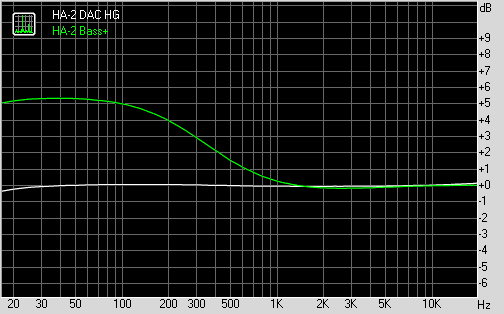
Subjectively, HA-2 also sounds great. The line-out has the characteristic high level of transparency that the ESS Sabre DAC is famous for, but without being too dry or ‘digital sounding’. The headphone amp section itself is also very transparent and neutral. As a standalone amp, HA-2 is very comparable to my FiiO E12DIY, which has been specifically tuned for maximum transparency. I’ll say E12DIY might have better rendering of 3D space, but HA-2 does have an airier presentation. Beyond those, I’ll say HA-2 stands shoulder to shoulder with E12DIY as one of the best sounding portable amps I have heard, regardless of price. One option to spice thing up just a little bit is the bass boost - which really is more of a mild sub-bass boost rather than a full-on rock-your-socks-off bass boost. It gives a bit more substance to the lower range but I doubt it will be enough for any hardcore bass lover.
Needless to say, the transparency of the amp section goes quite well with the transparency of the ESS Sabre DAC. Together they create one of the cleanest sounding portable amp+DAC I have ever heard. While I still prefer iFi Audio micro iDSD as a whole when it comes to amp+DAC because of the extra tuning feature on micro iDSD as well as the more musical Burr-Brown DAC’s sound, I think HA-2 does come very close as the 2nd best. In some ways, especially if you are just looking for a clean sound, HA-2 might even be considered better. Same can be said if you are looking for a smaller devices or with wider / simpler smartphone compatibility. Even as a pure portable amp, HA-2 might have an edge over the slightly drier micro iDSD’s amp section. Metaphorically speaking, micro iDSD is more like a big cannon that can level everything you want while HA-2 is more like a sniper rifle that is better on a specific target. One thing they are equally good is their huge value for money factor, where the choice is really down to how you like to use your rig – as more of a generalist or a specialist.
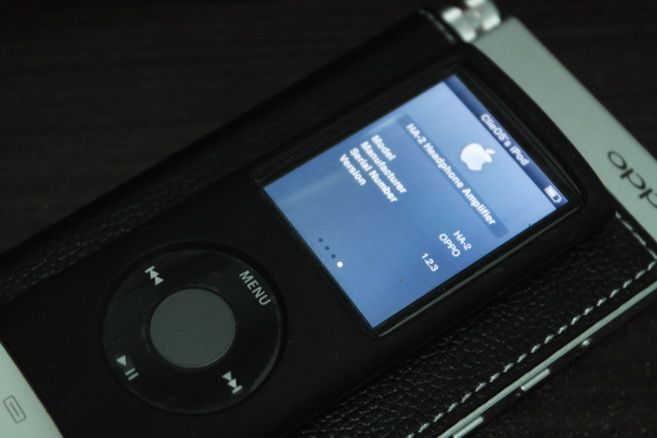
iPod nano 5G feeding HA-2
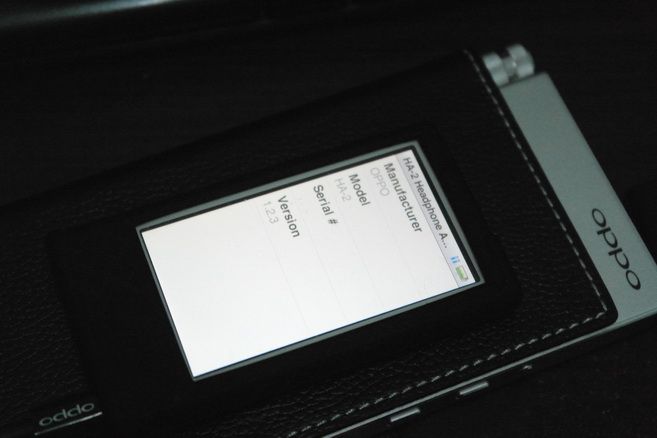
iPod nano 7G feeding HA-2
Extra
Here are some extra notes that don’t fit in elsewhere:
DSD playback is pretty good on the HA-2, but with a small limitation that it can only do DSD256 in ‘native mode’, which means it is Windows and ASIO driver only and you can’t playback DSD256 on Android, even with app such as USB Audio Player Pro or Onkyo HF Player. In contrast, micro iDSD has no such issue. While I am not actually much of a DSD listener, I think it will still be great if there is a way to solve this.
OTG compatibility is really one of HA-2’s greatest feature. Besides being able to be used as a pure portable amp as well as an amp/DAC for PC (*requires software driver), HA-2 can also be used with most Apple devices with its MFi certification and many Android smartphone that supports USB OTG. On the iDevices’s side of things, I have not only paired HA-2 with iPod nano 7G successfully, but also the much older iPod nano 5G, which is not on the official HA-2’s support list. It is not hard to imagine how HA-2 can breathe some new life into older iPod and really transform them to audiophile grade player. On the Android’s side of things is, as usual, a bit hit or miss depends on whether your particular smartphone model will work for HA-2 or not. Based on my own experience, I know Sony Xperia Z series is probably one of the best bet for getting the best sound quality over an amp/DAC because Sony has implemented really good USB DAC driver in their version of Android and they support 24/192 by default. Even without a native USB DAC driver, apps such as USB Audio Player Pro or Onkyo HF Player might still work, though you’ll have to try them out personally to find out. Last but not least is the surprise OTG compatibility of Sony A10 series digital Walkman with HA-2, though the right cable is needed in order for them to work together. That however can be buy from Taobao or Amazon. With A10 as the digital source and HA-2 as the amp+DAC, the A10 really goes from just a decent sounding DAP to one of the best portable ‘audio stack’ around. This setup will really worthwhile if you are like me - which usually doesn’t like to use smartphone as digital source, but doesn’t mind carrying around a ‘stack’. Plus, the stack isn't that big anyway.
Those of you who prefer to build your own HA-2 cable for Sony A10 can find a DIY guide here.
Sum-up
I remember that the first MFi certified DAC for iPod I have ever read about had a price tag higher than the iPod itself, and it didn’t even have an amp section. Now we have the HA-2 - MFi certified with a quality amp section and Android smartphone compatible, priced only at US$299. While time does usually lower the price of tech, HA-2 still presents some incredible value - especially since most of the competition are still much higher priced. It is a gem, and no two way about it.
A thanks for OPPO Digital for the review loaner.

Spec
Frequency Response: 20 Hz - 200 kHz
Audio-in Level: 1Vrms
Line-out Level: 1Vrms
Recommended Headphone Impedance: 16 Ohm - 300 Ohm
Maximum Output Power: 300mW @ 16 Ohm, 220mW @ 32 Ohm, 30mW @ 300 Ohm
Headphone-out Output Impedance: 0.5 Ohm
Output: 3.5mm Headphone-out, 3.5mm Line-out
Input:
Analog: 3.5 mm stereo audio-in
Digital:
USB A for iPod / iPhone / iPad;
USB micro-B for smartphones with USB OTG feature and computers.
DAC Chip: ESS Sabre32 Reference ES9018-K2M
Input Format: Stereo PCM, Stereo DSD (DoP v1.1 or native)
PCM Sampling Frequencies: 44.1 kHz - 384 kHz, 16 / 24 / 32-bit
DSD Sampling Frequencies: 2.8224 MHz (DSD64), 5.6448 MHz (DSD128), 11.2896 MHz (DSD256, native mode only)
Battery type: 3000mAh Li-Po Rechargeable
Battery Life: Approx. 13 hours (Audio-in) or 7 hours (Digital-in)
Dimensions (W x H x D): 2.7 x 5.375 x 0.5 inches, 68 x 137 x 12 mm
Weight: 6.2 oz, 175 grams


Build Quality
Right off the bat, the packaging of HA-2 already screams premier quality. It almost feels like you just got a top-of-the-line smartphone rather than a portable amp+DAC. The actual build quality is of course just as good as what the packaging has suggested. While I already told you that OPPO smartphone and OPPO Digital isn’t the same company, the HA-2 sure looks like it shared some of the smartphone’s gene on how well it is designed and put together. There is no rough corner anywhere and most of the housing is covered in real leather. I have seen and owned some great portable amp and DAC in my life, but HA-2 has the best build quality so far. It is the portable amp+DAC that won’t make you look geeky when it sits next to your smartphone / iPod / iPhone.
As far as accessories go, HA-2 comes with just about everything you need to enjoy your music. All you need is to supply the compatible source and a pair of headphone. In the box, you will find the OPPO’s VOOC Flash charger (which is similar but not identical to Qualcomm Quick Charge on how it functions), the VOOC compatible USB cable, two rubber bands, a 3.5mm-to-3.5mm interconnecting cable, a Lightning-to-USB-A OTG cable for Apple devices and a micro-to-micro USB OTG cable for Android device.

ABC switch for input: A for iDevice, B for PC and Android, C for analog audio-in.

Gain switch, bass boost, and battery button.

The 3.5mm analog audio-in socket also double as line-out when used with digital source.
Battery Life
The actually battery life is pretty close to the quoted number by OPPO, which is roughly 13 hours as amp only or 7 hours as amp+DAC, gives or takes an hour or so depends on the volume and headphone you used. Battery capacity can be checked by a single quick press to the battery button on the side.
A few things to note: First, if you are using an Android smartphone as source and not planning to use the stock micro-to-micro USB cable, you need to find a compatible cable in order to stop HA-2 from draining your smartphone battery. What you want is a bi-directional micro-to-micro USB OTG cable, not a one-way OTG cable (which is an older standard and rarer these days, but you can still find it). Secondly, HA-2 can be used as a power bank to charge your digital source, mainly smartphone and iDevices, by pressing and holding the battery button until the battery LED lights up. You can use this even when you are listening to music on HA-2, which will keep your digital source’s battery top up as much as it can, but also shorten HA-2 battery life noticeably.
Gain, Hiss and EMI
There are two gain setting on the side of HA-2. The lower gain setting is actually a negative gain of about -2dB, where the high gain setting is about +8dB. We will discuss further on this in the SQ section.
Hiss performance is quite excellent. Even with my hiss prone Shure SE530, there is no noticeable hiss to speak of with maxed out volume on both high and low gain. Same can be said to click and pop performance, which is barely noticeable. EMI performance is also great. The black ground stays pretty much pitch black with no interference from a smartphone receiving call sitting next to it.

Size comparison (from left): Sony Xperia Z2, HA-2, FiiO E12A.

Sony A10 digitally feeding the HA-2
Sound Quality
As usual, we begin with a look into HA-2’s measurement. RMAA shows an impressive result that just about rival my reference iFi iDAC + O2 setup. Frequency response is pretty much flat, as you can see on the FR graph below. While intermodulation distortion is slightly higher in comparison, it is still well within the inaudible range and doesn’t pose any concern. Used as amp+DAC, line-out is about 0.98Vrms, pretty close to the official number of 1Vrms. Headphone-out on the other hand is about 0.77Vrms max in low gain and 2.52Vrms max in high gain. That’s plenty for IEM and sensitive headphone, but might not push enough volume to really demanding big can. Current output is quite good as well. Not the biggest I have ever measured but it is definitely some of the best.
As far as I can tell, the gain factor (-2dB and +8dB) doesn’t change when HA-2 is used as amp only, but it might run out of voltage swing and start clipping if the input is too high. For example, with FiiO X5II’s line-out (~1.55Vrms) as well as iFi iDAC (~2Vrms), HA-2’s max headphone-out on high gain can only push to around 3Vrms, or about +6dB. But interesting enough is that even with such a hot input, the headphone-out doesn’t seems to sound distorted when used in lower volume with IEM. That suggests the clipping isn’t happened on the input but on the output stage. So although OPPO only recommend the audio-in to be used with 1Vrms source (Apple?), it seems okay with other higher voltage input as well. Just don’t expect it to pump out a lot of volume.
Output impedance is a bit tricky to measure on HA-2 as it seems to automatically mute the headphone-out when there is no load (*which is needed for the procedure). But judging simply from the tiny voltage drop of two different resistance load, it is obvious the output impedance must be very small and indirectly confirm the OPPO number of 0.5ohm.

Subjectively, HA-2 also sounds great. The line-out has the characteristic high level of transparency that the ESS Sabre DAC is famous for, but without being too dry or ‘digital sounding’. The headphone amp section itself is also very transparent and neutral. As a standalone amp, HA-2 is very comparable to my FiiO E12DIY, which has been specifically tuned for maximum transparency. I’ll say E12DIY might have better rendering of 3D space, but HA-2 does have an airier presentation. Beyond those, I’ll say HA-2 stands shoulder to shoulder with E12DIY as one of the best sounding portable amps I have heard, regardless of price. One option to spice thing up just a little bit is the bass boost - which really is more of a mild sub-bass boost rather than a full-on rock-your-socks-off bass boost. It gives a bit more substance to the lower range but I doubt it will be enough for any hardcore bass lover.
Needless to say, the transparency of the amp section goes quite well with the transparency of the ESS Sabre DAC. Together they create one of the cleanest sounding portable amp+DAC I have ever heard. While I still prefer iFi Audio micro iDSD as a whole when it comes to amp+DAC because of the extra tuning feature on micro iDSD as well as the more musical Burr-Brown DAC’s sound, I think HA-2 does come very close as the 2nd best. In some ways, especially if you are just looking for a clean sound, HA-2 might even be considered better. Same can be said if you are looking for a smaller devices or with wider / simpler smartphone compatibility. Even as a pure portable amp, HA-2 might have an edge over the slightly drier micro iDSD’s amp section. Metaphorically speaking, micro iDSD is more like a big cannon that can level everything you want while HA-2 is more like a sniper rifle that is better on a specific target. One thing they are equally good is their huge value for money factor, where the choice is really down to how you like to use your rig – as more of a generalist or a specialist.

iPod nano 5G feeding HA-2

iPod nano 7G feeding HA-2
Extra
Here are some extra notes that don’t fit in elsewhere:
DSD playback is pretty good on the HA-2, but with a small limitation that it can only do DSD256 in ‘native mode’, which means it is Windows and ASIO driver only and you can’t playback DSD256 on Android, even with app such as USB Audio Player Pro or Onkyo HF Player. In contrast, micro iDSD has no such issue. While I am not actually much of a DSD listener, I think it will still be great if there is a way to solve this.
OTG compatibility is really one of HA-2’s greatest feature. Besides being able to be used as a pure portable amp as well as an amp/DAC for PC (*requires software driver), HA-2 can also be used with most Apple devices with its MFi certification and many Android smartphone that supports USB OTG. On the iDevices’s side of things, I have not only paired HA-2 with iPod nano 7G successfully, but also the much older iPod nano 5G, which is not on the official HA-2’s support list. It is not hard to imagine how HA-2 can breathe some new life into older iPod and really transform them to audiophile grade player. On the Android’s side of things is, as usual, a bit hit or miss depends on whether your particular smartphone model will work for HA-2 or not. Based on my own experience, I know Sony Xperia Z series is probably one of the best bet for getting the best sound quality over an amp/DAC because Sony has implemented really good USB DAC driver in their version of Android and they support 24/192 by default. Even without a native USB DAC driver, apps such as USB Audio Player Pro or Onkyo HF Player might still work, though you’ll have to try them out personally to find out. Last but not least is the surprise OTG compatibility of Sony A10 series digital Walkman with HA-2, though the right cable is needed in order for them to work together. That however can be buy from Taobao or Amazon. With A10 as the digital source and HA-2 as the amp+DAC, the A10 really goes from just a decent sounding DAP to one of the best portable ‘audio stack’ around. This setup will really worthwhile if you are like me - which usually doesn’t like to use smartphone as digital source, but doesn’t mind carrying around a ‘stack’. Plus, the stack isn't that big anyway.
Those of you who prefer to build your own HA-2 cable for Sony A10 can find a DIY guide here.
Sum-up
I remember that the first MFi certified DAC for iPod I have ever read about had a price tag higher than the iPod itself, and it didn’t even have an amp section. Now we have the HA-2 - MFi certified with a quality amp section and Android smartphone compatible, priced only at US$299. While time does usually lower the price of tech, HA-2 still presents some incredible value - especially since most of the competition are still much higher priced. It is a gem, and no two way about it.
A thanks for OPPO Digital for the review loaner.
Garrett Scheff
@ClieOS Thank you for the reply and thank you for the review too. Apple is increasing from 16 bit to 18 bit so it can be "better then CD". I reached out to Oppo, since they make it they would know. I will message back if/when I hear from them a definitive answer.
Garrett Scheff
Just heard back from Oppo, as long as you use an app that supports 24/192 playback the iPhone will supply that signal to the HA-2.
DLR Group
I just happened to contact Oppo as they were opening this morning to find out when these would be back in stock. They just release the updated version the HA-2 SE today. Based on all the info here I think I'm going to purchase.
ClieOS
IEM Reviewer Extraordinaire
Pros: Good Bass, Excellent Build Quality and Accessories.
Cons: Edgy on upper vocal.
Brainwavz needs no introduction. They have been in the IEM market long enough that they have made a name for themselves, especially in the bang-for-bucks section. The S5 has been in the market for a while now, and the price has dropped from the initial US$130 to the current US$100. However, the price tag is still right in the ‘warzone’ as far as IEM goes, where many competitors coming from China are all trying to outdo each other for being the next budget giant killer. So how does S5 fair?
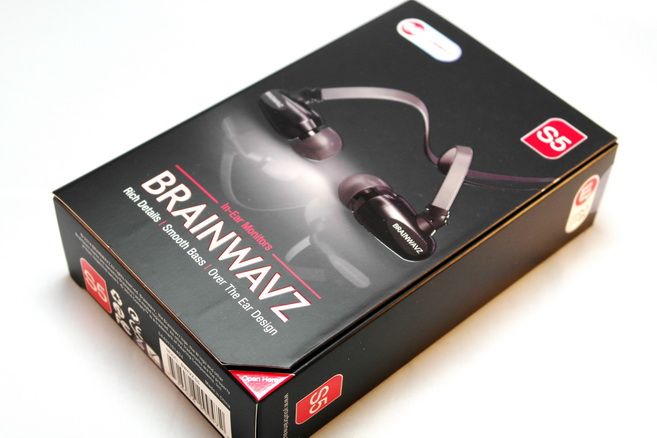
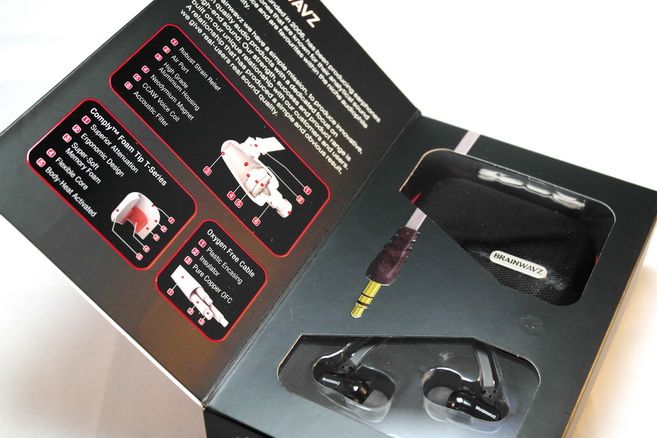
Spec
Drivers: 10mm Dynamic
Rated Impedance: 16 Ω
Frequency Response: 18Hz ˜ 24kHz
Sensitivity: 110 dB @ 1 mW
Rated Input Power: 20mW
Maximum Input Power: 40mW
Cable: 1.3m, Flat Y-Cord OFC
Plug: 3.5mm Gold Plated Stereo
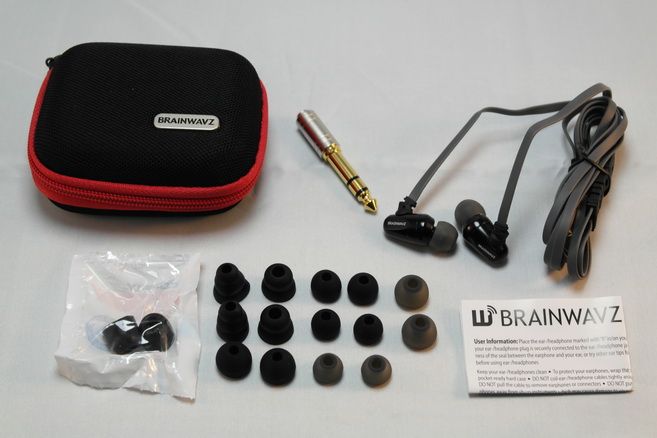
Packaging, Accessories and Build Quality
S5 is beautifully packaged. Then again, I won’t expect anything less from Brainwavz with their outstanding track record. Of course they didn’t skip on accessories as well. You will get a pair of Comply foam tip, a pair of tri-flanges eartips, a pair of bi-flanges eartips, 2 set (S, M, L of a total of 6 pairs) of single flange eartips with slightly different design and material. There is also a good looking hard case as well as a 3.5mm-to-6.4mm stereo adapter. All and all, they really give the S5 a premier feel.
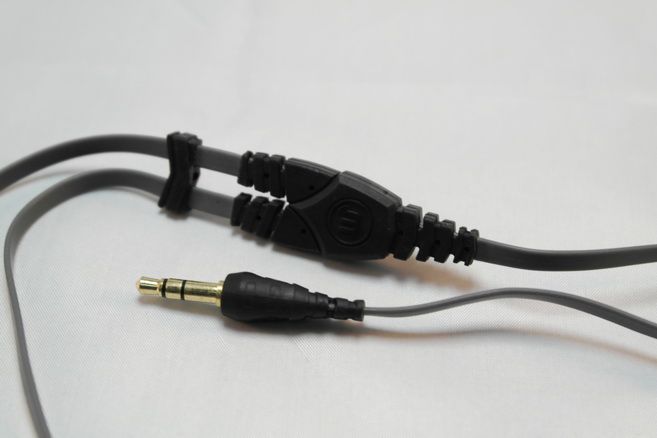
Build quality is top notch as well. The IEM itself is pretty much over-built like a tank, with flat cable, adequate strain relief and overall attention to detail. Though flat cable probably isn’t going to be everyone’s favourite, the over-the-ear design does make the cable much more tolerable in actual use than in a straight-down configuration. I just hope that they had used a narrower flat cable, then it might better appeal to those who really just don’t like flat cable. One area I do want to give credit to the flat cable is that it is hard to get it tangled. There is also no real driver flex to speak of, which is a good improvement over previous Brainwavz models that tend to suffer from some degree of mild driver flex issue from time to time.
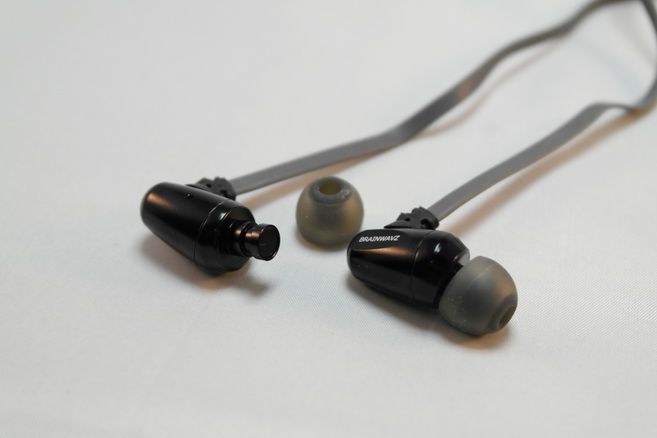
Sound Quality
Sound signature wise, S5 is probably best described as U-shaped with good presence on both ends of the frequency response. Bass has very good depth, rumble, texture and quantity - enough to satisfy bass head but still in a well-controlled way that it won’t offend those who don’t particularly enjoy bass. Mid-range however is a little bland – not bad per se, but doesn’t have much to praise of either. Treble has good extension, clarity and crispiness, but the lower treble / upper vocal range has some noticeable peaks that can become rather edgy when the volume is pushed too loud. Soundstage is quite good, might not be the best but definitely well above average.

*Compensated. Measurement accuracy is not guaranteed
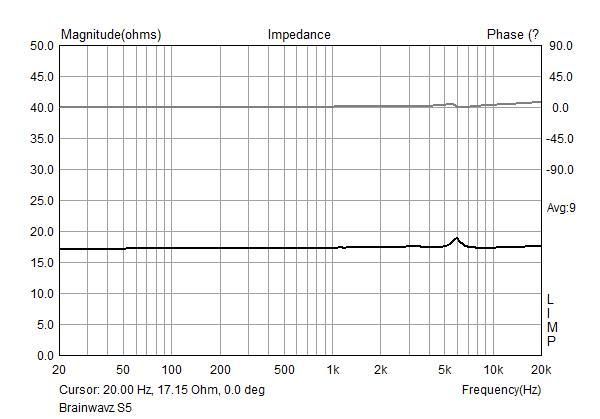
*Measurement accuracy is not guaranteed
All and all, the graininess on upper vocal is probably the only real weakness as it makes S5 more appealing to those who like brightness in their music. Tuned that down a bit, maybe by the use of foam tips or extra filter / acoustic dampening, and S5 will shine.
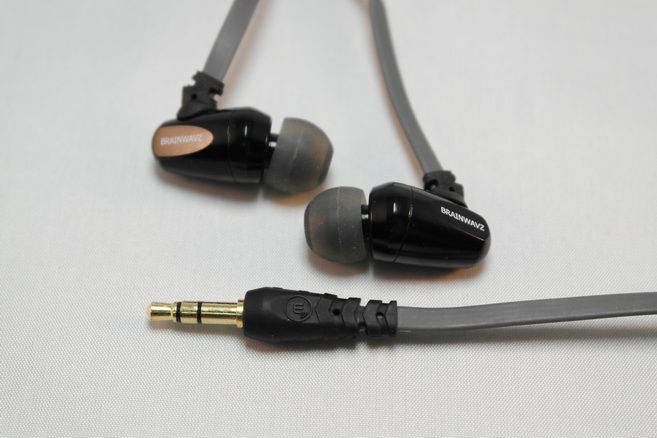
Sum-up
There are some really great sounding IEM coming out of China these days on incredible low price, enough to rewrite everything we know about the ratio of price vs. performance. While S5 won’t win the price war these days, it is still a very solid offering on its own right. As I imagine, Grado fans who usually don’t mind a bit of brightness will probably also enjoy this IEM with their Rock music.
A thanks to Brainwavz for the sample.


Spec
Drivers: 10mm Dynamic
Rated Impedance: 16 Ω
Frequency Response: 18Hz ˜ 24kHz
Sensitivity: 110 dB @ 1 mW
Rated Input Power: 20mW
Maximum Input Power: 40mW
Cable: 1.3m, Flat Y-Cord OFC
Plug: 3.5mm Gold Plated Stereo

Packaging, Accessories and Build Quality
S5 is beautifully packaged. Then again, I won’t expect anything less from Brainwavz with their outstanding track record. Of course they didn’t skip on accessories as well. You will get a pair of Comply foam tip, a pair of tri-flanges eartips, a pair of bi-flanges eartips, 2 set (S, M, L of a total of 6 pairs) of single flange eartips with slightly different design and material. There is also a good looking hard case as well as a 3.5mm-to-6.4mm stereo adapter. All and all, they really give the S5 a premier feel.

Build quality is top notch as well. The IEM itself is pretty much over-built like a tank, with flat cable, adequate strain relief and overall attention to detail. Though flat cable probably isn’t going to be everyone’s favourite, the over-the-ear design does make the cable much more tolerable in actual use than in a straight-down configuration. I just hope that they had used a narrower flat cable, then it might better appeal to those who really just don’t like flat cable. One area I do want to give credit to the flat cable is that it is hard to get it tangled. There is also no real driver flex to speak of, which is a good improvement over previous Brainwavz models that tend to suffer from some degree of mild driver flex issue from time to time.

Sound Quality
Sound signature wise, S5 is probably best described as U-shaped with good presence on both ends of the frequency response. Bass has very good depth, rumble, texture and quantity - enough to satisfy bass head but still in a well-controlled way that it won’t offend those who don’t particularly enjoy bass. Mid-range however is a little bland – not bad per se, but doesn’t have much to praise of either. Treble has good extension, clarity and crispiness, but the lower treble / upper vocal range has some noticeable peaks that can become rather edgy when the volume is pushed too loud. Soundstage is quite good, might not be the best but definitely well above average.

*Compensated. Measurement accuracy is not guaranteed

*Measurement accuracy is not guaranteed
All and all, the graininess on upper vocal is probably the only real weakness as it makes S5 more appealing to those who like brightness in their music. Tuned that down a bit, maybe by the use of foam tips or extra filter / acoustic dampening, and S5 will shine.

Sum-up
There are some really great sounding IEM coming out of China these days on incredible low price, enough to rewrite everything we know about the ratio of price vs. performance. While S5 won’t win the price war these days, it is still a very solid offering on its own right. As I imagine, Grado fans who usually don’t mind a bit of brightness will probably also enjoy this IEM with their Rock music.
A thanks to Brainwavz for the sample.
ClieOS
IEM Reviewer Extraordinaire
Pros: SQ
Cons: Overly High Gain, Low Current Output, High Output Impedance.
I have covered Tube Amp’s portable amps in the past (here and here). While the company is called ‘Tube Amp’, they don’t limit themselves to only tube amp, but also discrete amp. The LF-15 however is their first venture into the world of desktop gears with another fully discrete design, priced around US$450.
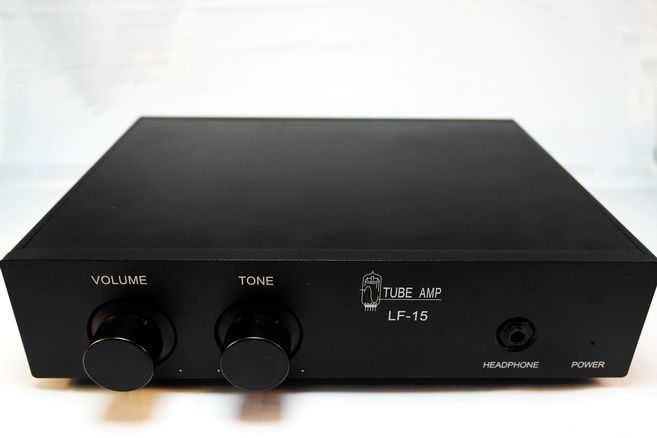
Spec
Frequency response:20Hz~30kHz
Maximum Output:82mW (+20dBm) 1kHz 600Ω or 633mW (+20dBm) 1kHz 40Ω
Input: XLR or RCA
Total Harmonic Distortion: Less than 0.06% (1kHz)
Signal to Noise Ratio: -91dB
Recommended Headphone Impedance: 32Ω~600Ω
Power Supply Voltage: 110/220V 60/50HZ
Fuse (slow-blow fuse): 250V/50Hz,1A
Power Consumption: 15W
Dimension: (W x D x H) 23.5 mm x 288mm x x80mm
Net Weight: 2.4kg
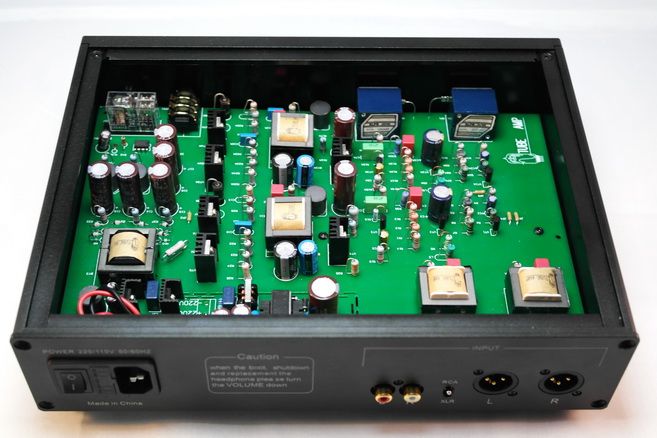
Build Quality
The overall build quality is pretty solid. Really nothing fancy to talk about, nor is it any particular weak spot to complain for. If anything, the housing is a bit bland with just a black metal box and two big knobs. The PCB inside seems to be well arranged and again, nothing really to praise or complain about. While the components are probably hand soldered, the PCB itself doesn’t look DIY’ish, which is of course a good thing.
The amp can operate on both 110V and 220V AC, so it should be fine to use in just about everywhere that has a power socket. It takes both RCA and XLR input, though only has a single ended 6.35mm stereo output.
Gain and Hiss
I have complained in the past that Tube Amp’s portable amps all having too high a gain and unfortunately I have to make the same complaint again. By measurement, the LF-15 has a fixed gain of about +19dB, which is just way too much for the majority of headphone out there. The high gain also makes LF-15 hissy. While I can’t hear any hiss when music is playing, it is definitely quite noticeable in silence passage. The only workaround is to use higher impedance, less sensitive headphone. But a real cure would have been a gain switch that allows better matching of gain and headphone.
Sound Quality
As always, I started my evaluation of LF-15 with a RMAA measurement. For the most parts, it doesn’t quite able to compete with my reference O2 but still good enough that I don’t see a problem – however, there are two areas that don’t perform well: Intermodulation Distortion and Stereo Crosstalk. That is strange as I can’t say I have heard anything out of place as the measurement would have indicated, then I realised it might have been a side effect caused by the permanent bass boost that built into LF-15 rather than any actual bad performance. If you look at the FR curve below, you will see that there is a very big sub-bass boost, regardless of whether the ‘tone’ knob is all the way to the left (*TL curve in graph) or to the right (*TR curve in graph). RMAA probably just mistook these bass boost as some kind of distortion when running its test (as those tests involve low frequencies). One area that does indeed not doing so well is its current output – while LF-15 has way too much voltage gain, its current output is really on the weak side. Last but not least, the output impedance is also pretty high, measured and calculated at around 16 ohm.
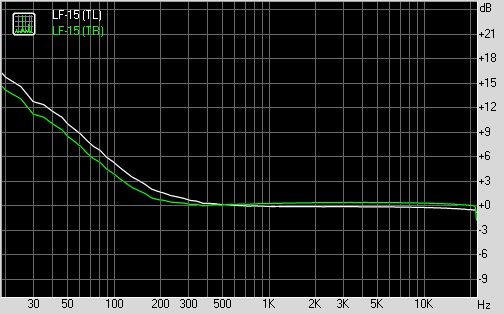
Subjective listening wise, LF-15 is actually quite good. The presentation is neither too tube’ish and musical, nor is it clean and neutral. It is more or less in the middle ground, and perhaps just a bit over to the musical size. Though I won’t say it is in any obvious way euphonic sounding, it does have somewhat of a smooth sound. Due to the sub-bass boost, bass kick and extension are quite excellent – but can be a double edge sword if you already have a really bass heavy headphone or simply doesn’t like that much bass. Though the good news is that the boost is all in the sub-bass region and doesn’t intrude the mid-range at all. An even better news would have been a user selectable bass boost switch, which would have made the LF-15 a more versatile amp. One setting that user does get to play with is the ‘tone’ knob, which doesn’t seem to vary the frequency response that much but there are fairly audible change in the presentation. With the tone all the way to the left, the presentation is on a warmer and smoother side; with the tone all the way to the right, the presentation changes toward a cleaner and detail oriented sound. It is almost like the tone knob is changing the focus of the presentation between the mid-low and upper mid-high range, though I can’t be sure of the exact mechanism behind it. Last but not least, the soundstage is quite good. Not the best of width or depth I have ever heard, but definitely above average and fairly immersive while not restricting.
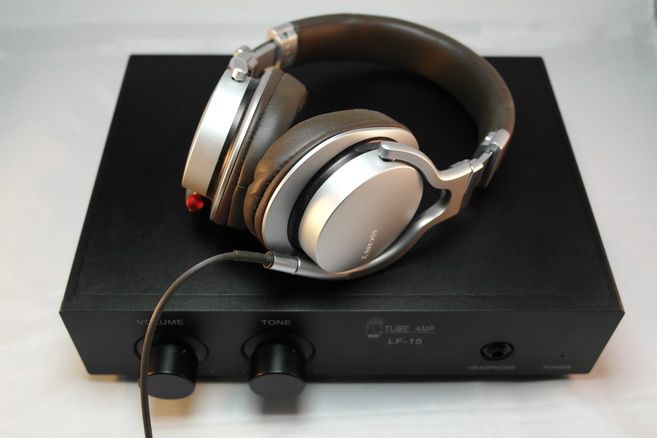
Sum-up
All and all, my feeling is a bit mixed regarding LF-15. While it sounds good, the permanent bass boost, high gain and low current output, plus the high output impedance limits its usage more or less toward higher impedance, single driver full size headphones, and that inherently restricts its appeal to a wider audience. I like Tube Amp’s products because I know they always aim to deliver unique and original implementation for their amp instead of following the trend, but sometime it is that uniqueness that hinders the its practicality. I really like to see Tube Amp next product has more user selectable settings - but for now, I’ll say that LF-15 is not for everyone.
A thanks to Tube Amp for the review sample.

Spec
Frequency response:20Hz~30kHz
Maximum Output:82mW (+20dBm) 1kHz 600Ω or 633mW (+20dBm) 1kHz 40Ω
Input: XLR or RCA
Total Harmonic Distortion: Less than 0.06% (1kHz)
Signal to Noise Ratio: -91dB
Recommended Headphone Impedance: 32Ω~600Ω
Power Supply Voltage: 110/220V 60/50HZ
Fuse (slow-blow fuse): 250V/50Hz,1A
Power Consumption: 15W
Dimension: (W x D x H) 23.5 mm x 288mm x x80mm
Net Weight: 2.4kg

Build Quality
The overall build quality is pretty solid. Really nothing fancy to talk about, nor is it any particular weak spot to complain for. If anything, the housing is a bit bland with just a black metal box and two big knobs. The PCB inside seems to be well arranged and again, nothing really to praise or complain about. While the components are probably hand soldered, the PCB itself doesn’t look DIY’ish, which is of course a good thing.
The amp can operate on both 110V and 220V AC, so it should be fine to use in just about everywhere that has a power socket. It takes both RCA and XLR input, though only has a single ended 6.35mm stereo output.
Gain and Hiss
I have complained in the past that Tube Amp’s portable amps all having too high a gain and unfortunately I have to make the same complaint again. By measurement, the LF-15 has a fixed gain of about +19dB, which is just way too much for the majority of headphone out there. The high gain also makes LF-15 hissy. While I can’t hear any hiss when music is playing, it is definitely quite noticeable in silence passage. The only workaround is to use higher impedance, less sensitive headphone. But a real cure would have been a gain switch that allows better matching of gain and headphone.
Sound Quality
As always, I started my evaluation of LF-15 with a RMAA measurement. For the most parts, it doesn’t quite able to compete with my reference O2 but still good enough that I don’t see a problem – however, there are two areas that don’t perform well: Intermodulation Distortion and Stereo Crosstalk. That is strange as I can’t say I have heard anything out of place as the measurement would have indicated, then I realised it might have been a side effect caused by the permanent bass boost that built into LF-15 rather than any actual bad performance. If you look at the FR curve below, you will see that there is a very big sub-bass boost, regardless of whether the ‘tone’ knob is all the way to the left (*TL curve in graph) or to the right (*TR curve in graph). RMAA probably just mistook these bass boost as some kind of distortion when running its test (as those tests involve low frequencies). One area that does indeed not doing so well is its current output – while LF-15 has way too much voltage gain, its current output is really on the weak side. Last but not least, the output impedance is also pretty high, measured and calculated at around 16 ohm.

Subjective listening wise, LF-15 is actually quite good. The presentation is neither too tube’ish and musical, nor is it clean and neutral. It is more or less in the middle ground, and perhaps just a bit over to the musical size. Though I won’t say it is in any obvious way euphonic sounding, it does have somewhat of a smooth sound. Due to the sub-bass boost, bass kick and extension are quite excellent – but can be a double edge sword if you already have a really bass heavy headphone or simply doesn’t like that much bass. Though the good news is that the boost is all in the sub-bass region and doesn’t intrude the mid-range at all. An even better news would have been a user selectable bass boost switch, which would have made the LF-15 a more versatile amp. One setting that user does get to play with is the ‘tone’ knob, which doesn’t seem to vary the frequency response that much but there are fairly audible change in the presentation. With the tone all the way to the left, the presentation is on a warmer and smoother side; with the tone all the way to the right, the presentation changes toward a cleaner and detail oriented sound. It is almost like the tone knob is changing the focus of the presentation between the mid-low and upper mid-high range, though I can’t be sure of the exact mechanism behind it. Last but not least, the soundstage is quite good. Not the best of width or depth I have ever heard, but definitely above average and fairly immersive while not restricting.

Sum-up
All and all, my feeling is a bit mixed regarding LF-15. While it sounds good, the permanent bass boost, high gain and low current output, plus the high output impedance limits its usage more or less toward higher impedance, single driver full size headphones, and that inherently restricts its appeal to a wider audience. I like Tube Amp’s products because I know they always aim to deliver unique and original implementation for their amp instead of following the trend, but sometime it is that uniqueness that hinders the its practicality. I really like to see Tube Amp next product has more user selectable settings - but for now, I’ll say that LF-15 is not for everyone.
A thanks to Tube Amp for the review sample.
getclikinagas
Oh dear, that FR!
Interesting subjective impressions, especially the mid-low to upper mid-high range transition using the tone knob.
Seems line a try-it-like-it-only-then-buy-it type deal.
Interesting subjective impressions, especially the mid-low to upper mid-high range transition using the tone knob.
Seems line a try-it-like-it-only-then-buy-it type deal.
ClieOS
IEM Reviewer Extraordinaire
Pros: Sound Quality, Build Quality, Price.
Cons: High Output Impedance, Short Battery Life, Relatively Low Output Power.
Originally running a well-known audio DIY forum in China, the company behind the Aune brand has managed to turn itself into a fairly reputable audio brand in recent years, producing mainly PC based desktop Hi-Fi gears. As far as I know, the B1 portable amp that is going to be reviewed here is the company’s first foray into the portable amp market – and not a run-of-the-mill design at that. Not only does it has a fully discrete design, it is also running at Class A configuration. That sound promising on paper, but does it deliver?
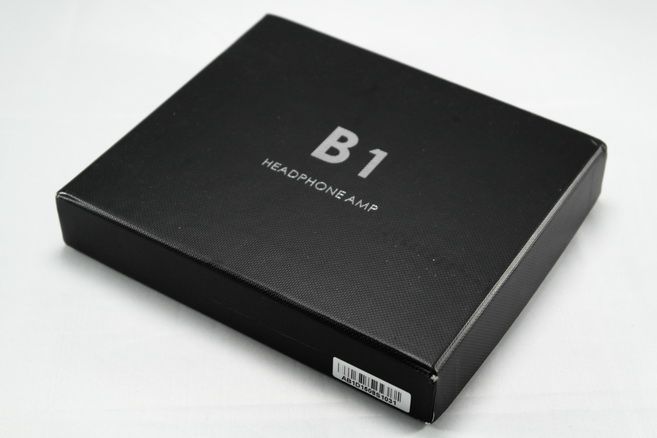
Spec
Recommended Headphone Impedance: 16~300ohm
Size: 65 x 110 x 18mm
Weight: 230g
Typical THD: Less than 0.0008% @ 1 kHz, 600 ohm / -0dB
SNR: More than 124dB @ 600 ohm
Frequency Response: 10Hz ~ 20kHz, +/- 0.15dB
Crosstalk: Less than 110dB @ 1kHz, 600 ohm
Power (Class A): 25mW @ 16 ohm, 50mW @ 32 ohm, 100mW @ 300 ohm
Gain: +5dB / +15dB
Dual Quiescent Current: 20mA / 40mA
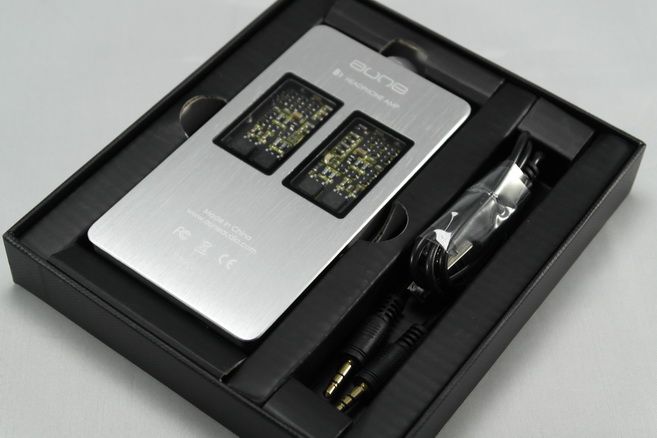
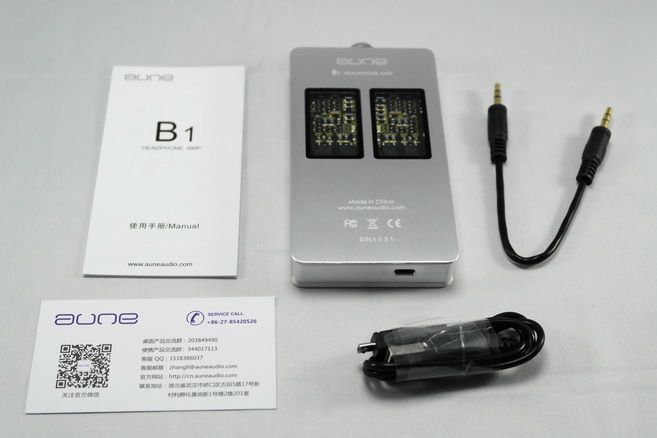
Build Quality
To say B1 is ‘well built’ is almost an understatement – it is drop-dead-gorgeous! The aluminium housing is very well machined, smooth to the touch without any sharp corner. Two transparent windows in the belly allow you to peek inside the amp circuit and two faux leather strips on the top that not only look good, but also serves as a cushion for any device you want to strap onto the B1.
If there is any real complaint that I have, I’ll say the volume knob is a bit too low profiled / oddly shaped, making it harder to adjust volume, especially when there is two 3.5mm plug next to it. Last but not least – and not really a complaint here but more of a suggestion – as Aune warns that the current switch must not be used when B1 is turned on, I’ll think a more logical choice will be to make the switch even more recessed than it is now so it won’t get accidentally switched by any chance.
Battery Life
Aune quotes that B1 has a 10hours play time running on 20mA mode and half that with 40mA mode. I actually get a bit less, probably around 3~4 hours in 40mA, though it really depends on the load as well as the volume. Suffice to say, the battery life isn’t exactly great. Given it is a Class A amp that isn’t known for power efficiency, I guess that much is expected.
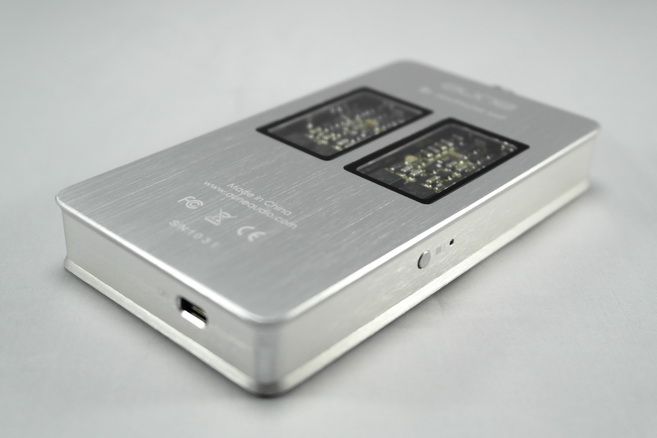
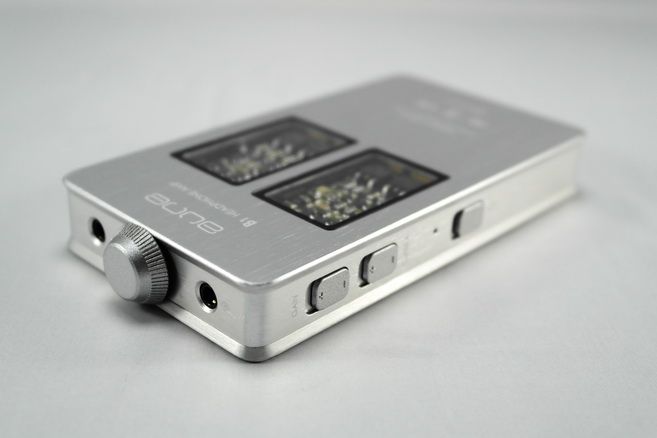
Gain, Hiss and EMI
B1 comes with two gain settings: +5db and +15dB. Personally, I’ll think it would have been better with +3dB and +12dB, as the current setting might be too high for sensitive headphone and IEM, getting too loud (or even worst, channel imbalance) with just a small turn of the volume knob. I will even consider a zero or negative gain setting being helpful for those with really sensitive custom IEM.
There is almost no hiss to speak of. There is in fact almost no ‘click and pop’ during start up as well. B1 is very well behaved in those regard. There is however some EMI issue. Cell phone interference can be picked up in close proximity, though not particularly loud and therefore not a serious concern.
Tech Prelude
So what is Class A - and if it is that good, why didn’t we see more of it? To put it simple: music is in wave form, swing from one end to another and back for a whole 360 degree. A Class A amp is a device that continuously operates the whole 360 degree non-stop. In the process it usually will waste a lot of power and generate a lot of heat, though it is also considered to be better sounding by many. Most of the amp (and mainly the opamp used) in the market however are in Class A-B configuration, where only half the components are active. The active half is where the signal is, and the inactive half only switches on when the signal arrives. It is far more efficient than Class A, but has its own problems - namely more distortion as components are switched on and off all the time and signal gets distorted when traveling from one end to the other. But at the end, Class A-B is usually the choice for portable gears due to practicality, as the distortion really isn’t bad enough to outweigh the benefit of less heat and much longer battery life.
Being full discrete means there is no integrated circuitry in the signal path. It is just another way of saying no opamp but rather individual discrete components (resistors, caps, transistors, etc) is used for amplification. B1 isn’t the first full discrete portable amp I have seen and this kind of implementation does require a lot of attention to detail, especially on parts matching, to show how good it is. A really well implementation can really sound exquisite, just as good as any top tier opamp based portable amp.
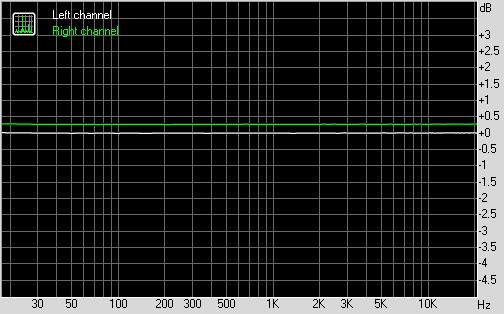
Sound Quality
As usually, my SQ assessment starts with an RMAA measurement, and the result is pretty good. No issue can be seen and the number match up with my reference O2 nicely, which is a very good sign. In fact, B1 outperforms O2 noticeably on stereo crosstalk, no doubt thanks to its dual-mono discrete circuitry that keeps the left and right channel further apart than what opamp usually does. However, the result on current output as well as output impedance is really less than stellar. First, the output impedance is rather high - measured and calculated to about 10 ohm, which is no good news for multi-drivers IEM. Second, current output is fairly low. Aune listed B1’s output power of 25mW @ 16ohm is quite low for a portable amp, and my measurement pretty much confirm it. In contrast, a FiiO E06 can pump out 4 times more power on the same load. One thing I noticed is that B1 @ 20mA mode begins to clip when I pushed the volume too high (regardless of gain setting) during my RMAA measurement (*with a 47ohm load). This is independent of the input volume so my guess is that it is running out of current to remain in Class A at such a high volume, as the clipping on high volume disappears once I retest it on 40mA mode. From both the prospective of SQ as well as battery life, I think easy-to-drive load probably can stay happy with 20mA mode, but anything more demanding should perform better in 40mA mode, though battery life will be cut short. Regardless, both modes don’t really have a lot of current output to speak of. In my opinion, this is very likely the inherent issue of being Class A – trying to push for higher output and you will end up with a portable heater that doesn’t run for very long; trying to keep everything reasonable and the output power will be limited, as in the case of B1. Technically speaking though, I think B1 is better suited for higher impedance headphone rather than lower one.
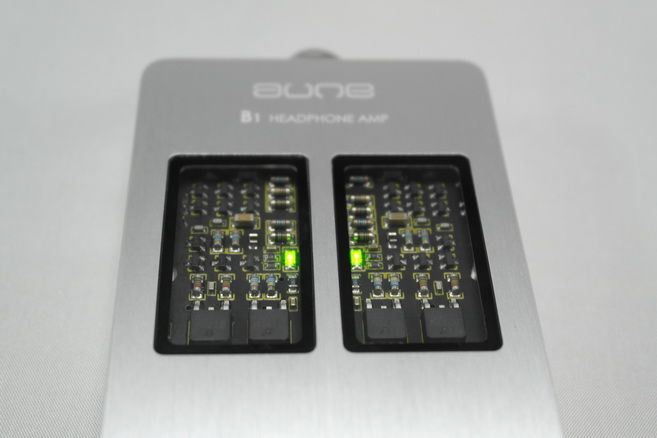
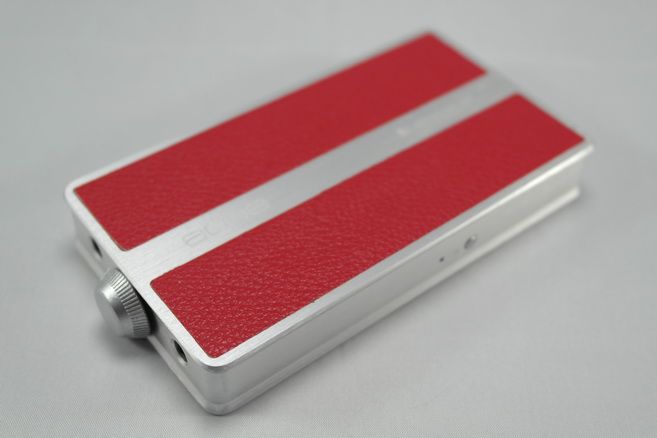
Subjectively, B1 sounds really good, as good as any top-tier portable amp I have heard. It also sounds rather clean and neutral, pretty much comparable to my reference O2 for that matter. While still very clean sounding, the mid does sound slightly more hollow in 20mA mode, giving the illusion of extra airiness and a bass kick that is stronger than it ought to be, which can be interpreted as being more powerful than the amp is capable of, though not really the case as I find the texture on the midrange, especially vocal, incomplete. Bass note, while has a good kick to it, does sound thinner than it should. Everything however snaps back to normal once switched to 40mA mode – the vocal is restored and all elements are inline again, though no more ‘extra’ airiness. But I don’t consider that a loss as B1 already has a really excellent soundstage and imaging. It makes a pair of flat sounding ER4S feel almost like surround sound, and that’s a wonder of its own and pretty much the best soundstage I have ever heard on a portable amp that doesn’t have any EQ enhancement. Despite not having a lot of power in measurement, B1 doesn’t sound like it is lacking power in 40mA mode. It is not the tightest in control, but it doesn’t sound loose either. All and all, it holds up quite well
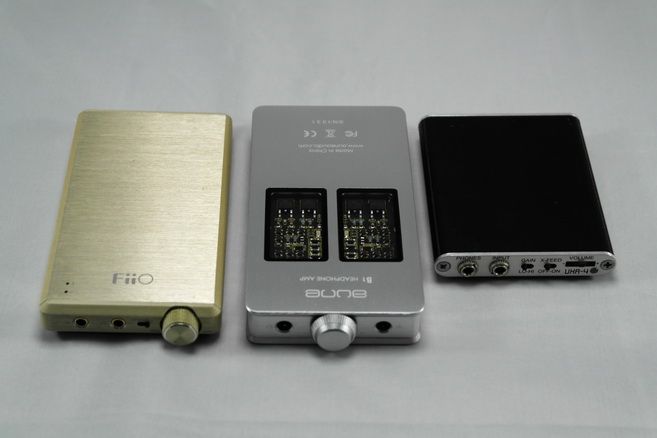
Size Comparison (from left): FiiO E12DIY, Aune B1, and Leckerton Audio UHA-4
Sum-up
I really like B1. It is well built and it sounds great – if it isn’t for multi-driver / very low impedance headphone and IEM, I have no problem recommending it. Aune took on the challenge to manufacture a Class A full discrete portable amp and they almost able to knock it out of the ballpark. Sure, there are still a few kinks here and there – but for as good as it is, Aune really deserves some credit. It isn’t the portable amp for every occasions – but where it does work, it works really well.
This review is part of Aune Worldwide Review Tour:
http://www.head-fi.org/t/765999/aune-b1-headphone-amp-worldwide-review-tour-reviewers-wanted

Spec
Recommended Headphone Impedance: 16~300ohm
Size: 65 x 110 x 18mm
Weight: 230g
Typical THD: Less than 0.0008% @ 1 kHz, 600 ohm / -0dB
SNR: More than 124dB @ 600 ohm
Frequency Response: 10Hz ~ 20kHz, +/- 0.15dB
Crosstalk: Less than 110dB @ 1kHz, 600 ohm
Power (Class A): 25mW @ 16 ohm, 50mW @ 32 ohm, 100mW @ 300 ohm
Gain: +5dB / +15dB
Dual Quiescent Current: 20mA / 40mA


Build Quality
To say B1 is ‘well built’ is almost an understatement – it is drop-dead-gorgeous! The aluminium housing is very well machined, smooth to the touch without any sharp corner. Two transparent windows in the belly allow you to peek inside the amp circuit and two faux leather strips on the top that not only look good, but also serves as a cushion for any device you want to strap onto the B1.
If there is any real complaint that I have, I’ll say the volume knob is a bit too low profiled / oddly shaped, making it harder to adjust volume, especially when there is two 3.5mm plug next to it. Last but not least – and not really a complaint here but more of a suggestion – as Aune warns that the current switch must not be used when B1 is turned on, I’ll think a more logical choice will be to make the switch even more recessed than it is now so it won’t get accidentally switched by any chance.
Battery Life
Aune quotes that B1 has a 10hours play time running on 20mA mode and half that with 40mA mode. I actually get a bit less, probably around 3~4 hours in 40mA, though it really depends on the load as well as the volume. Suffice to say, the battery life isn’t exactly great. Given it is a Class A amp that isn’t known for power efficiency, I guess that much is expected.


Gain, Hiss and EMI
B1 comes with two gain settings: +5db and +15dB. Personally, I’ll think it would have been better with +3dB and +12dB, as the current setting might be too high for sensitive headphone and IEM, getting too loud (or even worst, channel imbalance) with just a small turn of the volume knob. I will even consider a zero or negative gain setting being helpful for those with really sensitive custom IEM.
There is almost no hiss to speak of. There is in fact almost no ‘click and pop’ during start up as well. B1 is very well behaved in those regard. There is however some EMI issue. Cell phone interference can be picked up in close proximity, though not particularly loud and therefore not a serious concern.
Tech Prelude
So what is Class A - and if it is that good, why didn’t we see more of it? To put it simple: music is in wave form, swing from one end to another and back for a whole 360 degree. A Class A amp is a device that continuously operates the whole 360 degree non-stop. In the process it usually will waste a lot of power and generate a lot of heat, though it is also considered to be better sounding by many. Most of the amp (and mainly the opamp used) in the market however are in Class A-B configuration, where only half the components are active. The active half is where the signal is, and the inactive half only switches on when the signal arrives. It is far more efficient than Class A, but has its own problems - namely more distortion as components are switched on and off all the time and signal gets distorted when traveling from one end to the other. But at the end, Class A-B is usually the choice for portable gears due to practicality, as the distortion really isn’t bad enough to outweigh the benefit of less heat and much longer battery life.
Being full discrete means there is no integrated circuitry in the signal path. It is just another way of saying no opamp but rather individual discrete components (resistors, caps, transistors, etc) is used for amplification. B1 isn’t the first full discrete portable amp I have seen and this kind of implementation does require a lot of attention to detail, especially on parts matching, to show how good it is. A really well implementation can really sound exquisite, just as good as any top tier opamp based portable amp.

Sound Quality
As usually, my SQ assessment starts with an RMAA measurement, and the result is pretty good. No issue can be seen and the number match up with my reference O2 nicely, which is a very good sign. In fact, B1 outperforms O2 noticeably on stereo crosstalk, no doubt thanks to its dual-mono discrete circuitry that keeps the left and right channel further apart than what opamp usually does. However, the result on current output as well as output impedance is really less than stellar. First, the output impedance is rather high - measured and calculated to about 10 ohm, which is no good news for multi-drivers IEM. Second, current output is fairly low. Aune listed B1’s output power of 25mW @ 16ohm is quite low for a portable amp, and my measurement pretty much confirm it. In contrast, a FiiO E06 can pump out 4 times more power on the same load. One thing I noticed is that B1 @ 20mA mode begins to clip when I pushed the volume too high (regardless of gain setting) during my RMAA measurement (*with a 47ohm load). This is independent of the input volume so my guess is that it is running out of current to remain in Class A at such a high volume, as the clipping on high volume disappears once I retest it on 40mA mode. From both the prospective of SQ as well as battery life, I think easy-to-drive load probably can stay happy with 20mA mode, but anything more demanding should perform better in 40mA mode, though battery life will be cut short. Regardless, both modes don’t really have a lot of current output to speak of. In my opinion, this is very likely the inherent issue of being Class A – trying to push for higher output and you will end up with a portable heater that doesn’t run for very long; trying to keep everything reasonable and the output power will be limited, as in the case of B1. Technically speaking though, I think B1 is better suited for higher impedance headphone rather than lower one.


Subjectively, B1 sounds really good, as good as any top-tier portable amp I have heard. It also sounds rather clean and neutral, pretty much comparable to my reference O2 for that matter. While still very clean sounding, the mid does sound slightly more hollow in 20mA mode, giving the illusion of extra airiness and a bass kick that is stronger than it ought to be, which can be interpreted as being more powerful than the amp is capable of, though not really the case as I find the texture on the midrange, especially vocal, incomplete. Bass note, while has a good kick to it, does sound thinner than it should. Everything however snaps back to normal once switched to 40mA mode – the vocal is restored and all elements are inline again, though no more ‘extra’ airiness. But I don’t consider that a loss as B1 already has a really excellent soundstage and imaging. It makes a pair of flat sounding ER4S feel almost like surround sound, and that’s a wonder of its own and pretty much the best soundstage I have ever heard on a portable amp that doesn’t have any EQ enhancement. Despite not having a lot of power in measurement, B1 doesn’t sound like it is lacking power in 40mA mode. It is not the tightest in control, but it doesn’t sound loose either. All and all, it holds up quite well

Size Comparison (from left): FiiO E12DIY, Aune B1, and Leckerton Audio UHA-4
Sum-up
I really like B1. It is well built and it sounds great – if it isn’t for multi-driver / very low impedance headphone and IEM, I have no problem recommending it. Aune took on the challenge to manufacture a Class A full discrete portable amp and they almost able to knock it out of the ballpark. Sure, there are still a few kinks here and there – but for as good as it is, Aune really deserves some credit. It isn’t the portable amp for every occasions – but where it does work, it works really well.
This review is part of Aune Worldwide Review Tour:
http://www.head-fi.org/t/765999/aune-b1-headphone-amp-worldwide-review-tour-reviewers-wanted
Evshrug
Nice review! Sounds appealing, though for something high-quality portable like this to NOT suit equally high-quality portable like the higher-end IEMs with 3-12 drivers does seem to be a head-scratcher. Good that it breathes new life into the classic Etymotic though!
AuneAudio
Hello , thanks for the good review , we will upgrade the headphone impedance in the next version of B1 , thanks
ClieOS
Good to know. While under 1 ohm will be great, I think anything under 2 ohm will be good in my book.
ClieOS
IEM Reviewer Extraordinaire
Pros: Plenty of Features with Excellent Performance
Cons: Size. Not the best standalone amp for the price.
At this point of time, iFi Audio shouldn’t need much introduction at all. The British company is the more budget oriented sister brand of the prestige Abbingdon Music Research and have made a name for able to punch above its weight when it comes to price/performance ratio. If anything, the micro iDSD that is going to be reviewed here has set a new bar on what it means to be an overachiever in the world of portable audio gear. Never have we seen so many features being packed into one portable USB DAC + amp while still having such level of performance.
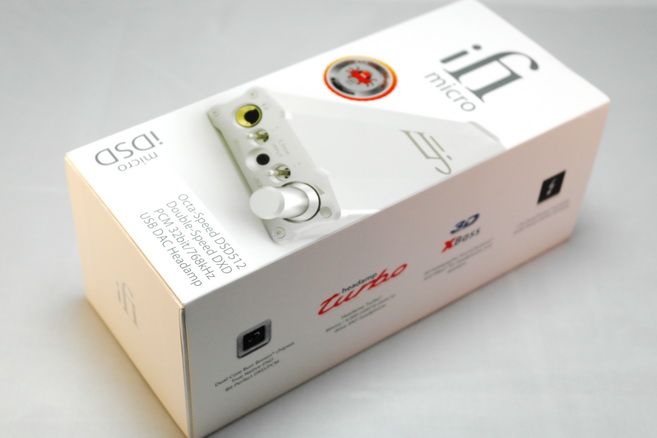
Spec
DAC:
Dual Burr Brown DAC, custom interleaving for maximum SNR
Clock: Ultra low jitter GMT computer controlled Femto Clock (RMS jitter 12kHz – 1MHz < 280 Femtoseconds)
Selectable Filter:
PCM (digital): Bit-Perfect Processing/Minimum Phase/Standard
DSD (analog): Extreme/Extended/Standard Range
DXD (analog): Bit-Perfect Processing
Full Native Decoding:
DSD 512/256/128/64 (24.6/22.6/12.4/11.2/6.2/5.6/3.1/2.8Mhz)
DXD 2x/1x (768/705.6/384/352.8kHz)
PCM 768/705.6/384/352.8/192/176.4/96/88.2/48/44.1kHz
Dynamic Range (Line): over 117db(A)
THD & N (0dBFS Line): under 0.003%
Output Voltage (Line): over 2V
Output Impedance (Zout): under 240Ω
Jitter (correlated): Below AP2 test set limit
Headphone-out:
Selectable:
Power mode: Eco, Normal and Turbo
Polarity: Normal / Inverted
Filters: see DAC spec
iEMatch: Off / High Sensitivity / Ultra Sensitivity
Power (max) / (continuous.)
- Turbo mode: (10.0V max) 4000 mW @ 16 Ohm / over 1560 mW @ 64 Ohm
- Normal mode: (5.5V max) 1900 mW @ 16 Ohm / over 950 mW @ 32 Ohm
- Eco mode: (2.0V max) 500 mW @ 8 Ohm / over 250 mW @ 16 Ohm
Dynamic Range: over 115dB(A) (Eco Mode, 2V Out)
THD &N (500mW/16R): under 0.008%
Output Voltage: over 8V (Turbo Mode)
Output Impedance (Zout): under 1Ω (iEMatch not engaged)
Input:
USB 2.0 type A
Built-in iPurifier, all major OS (*MacOSX, Windows, Linux) support. OTG supports: Apple portable devices with iOS 7+ and camera connection kit and selected Android devices with USB OTG cable.
S/PDIF
Coax and optical in, PCM up to 192kHz.
Analog in
3.5mm stereo jack
Output:
S/PDIF
Coax-out, PCM up to 192kHz
RCA
User selectable line (direct) or variable (preamp, with 9dB gain) output
Headphone out
6.4mm stereo jack
SmartPower® Socket: For recharging USB device (BC1.2 supported, 5V @ 1.5A)
EQ: X-Bass and 3D Holographic Sound, separated output for speaker (RCA preamp mode) and headphone-out.
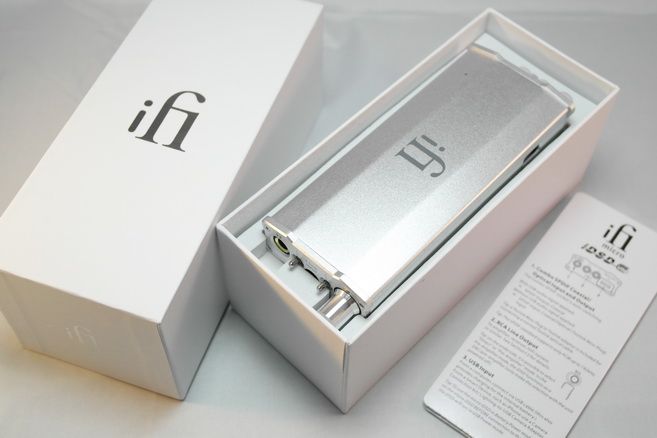
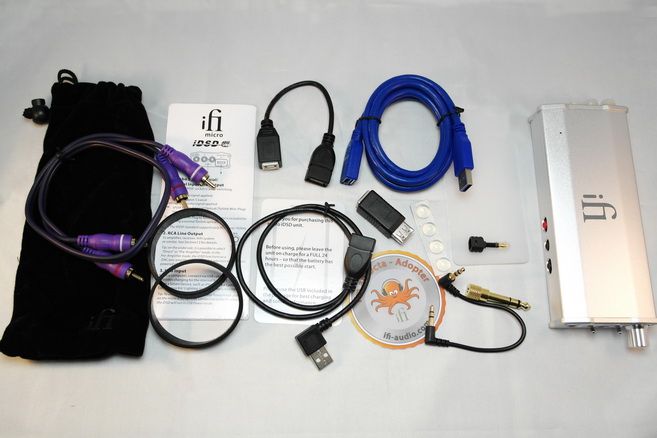
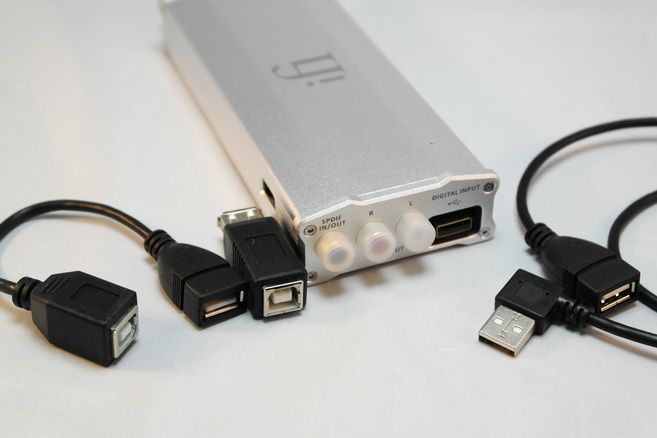
Accessories and Build Quality
Just about everything you need are included with the micro iDSD. You will get two rubber bands (for strapping a portable source to the iDSD), a short RCA-to-RCA cable, a short 3.5mm interconnecting cable, 4 stick-on rubber feet, an 1m USB 3.0 cable, a 1 foot USB cable with right angled plug (presumably for the SmartPower socket), a 6.4mm-to-3.5mm stereo adapter, a TOSlink adapter, a soft pouch, a small silicone mat (for cushioning between iDSD and your portable source), plug two USB type A female to type B female adapter (just in case you don’t want to use the included USB 3.0 cable but instead opt for your own USB type B cable, which is commonly known as the USB cable for printer and desktop USB device). Perhaps the only thing missing is either an OTG cable or camera connection kit, depends on whether you are an Android or Apple user. But those should be sourced by your own.
As with all iFi’s gears, build quality is quite excellent, though I do have some very minor complaints. The first is the more obvious – the housing is not exactly portable friendly, even though it is consistent with the micro series. You will want to put micro iDSD (along with its source) inside a small messenger bag or backpack rather than inside your pocket. The second is the tiny switches on the iDSD isn’t extremely firm and can be moved accidentally if it is in a very tight place (which makes it even less idea to put inside a pocket). It isn’t really that much of an issue as long as it is not in tight places though it is something to pay attention to. You won’t want to get caught off guarded when the gain switch is pushed from Eco to Turbo without you knowing it, for an example. A good practice is just not to store your micro iDSD with a lot of other stuff together. Having the rubber band on the body also help to keep things away. Last but not least, and I am just nit-picking here, is to have a less protruding 6.4mm-to-3.5mm adapter. The included adapter works just fine, but I do think a lower profiled adapter really works better.
One of the true genius on micro iDSD’s design is the use of a recessed USB type A male connector. This makes using either a camera connection kit for Apple iOS devices or an USB OTG cable for Android devices much easier. Gone is the need of multiple cable connecting to each other or special cable. It is streamlined and it is beautiful – makes me wonder why no other has thought about it before.
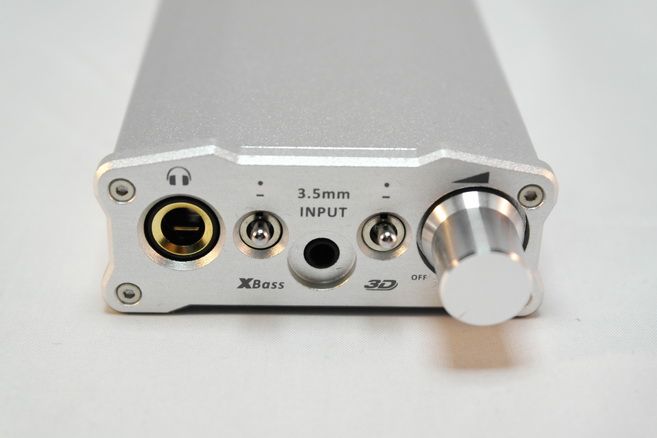
Front

Back
Battery Life
Battery life is estimated to be just around 6 hours with Turbo mode, 9 hours for Normal mode and 12 hours with Eco mode, plus or minus an hours or so depends on different condition and load of course. The battery life isn’t exactly long per se, but it is price you have to pay for having such a huge amount of output power for portable use.
Another thing about the battery is that it has its own smart circuit to control the charging. To speed up the charging, you need to plug the micro iDSD into a BC1.2 complied USB port. A regular USB port will work just as well, as long as the iDSD is turned off and you don’t mind a bit longer charging time. If the iDSD remains on, a regular USB port might not output enough current to both charge and power iDSD at the same time, so it might drain off the battery slowly. Whether it will drain or charge really depends on how much power your USB port can pump out. Again, a BC1.2 complied USB port (or hub) is your best bet. Last but not least, the smart circuit also turns micro iDSD into a USB power bank when (and only when) it is turned off. Just plug any USB device on to the USB port on the side of micro iDSD and it will charge it up. Needless to say, this will eat into micro iDSD’s play time.
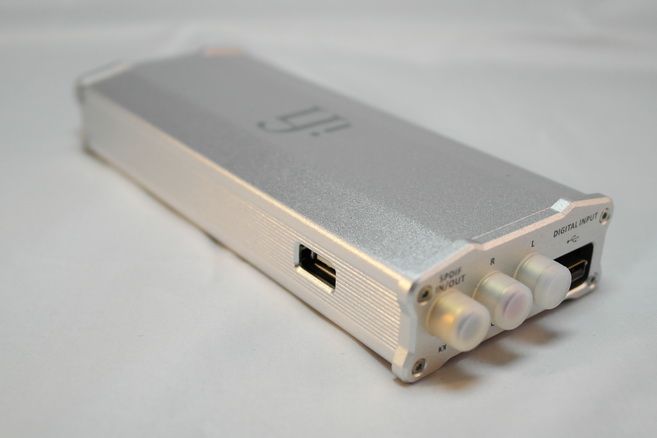
SmartPower Socket on the side
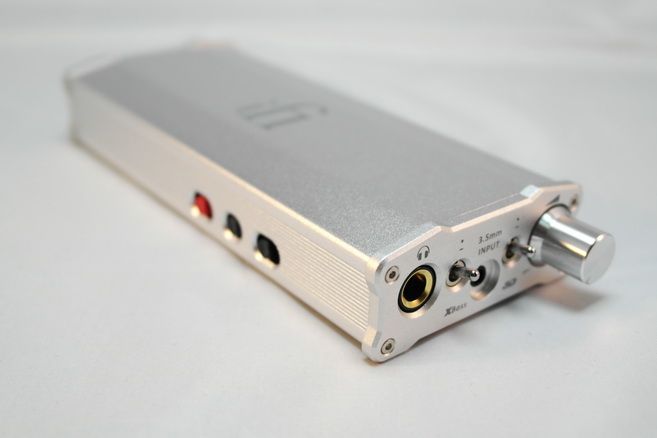
Gain, Polarity and Filters selection on the side.
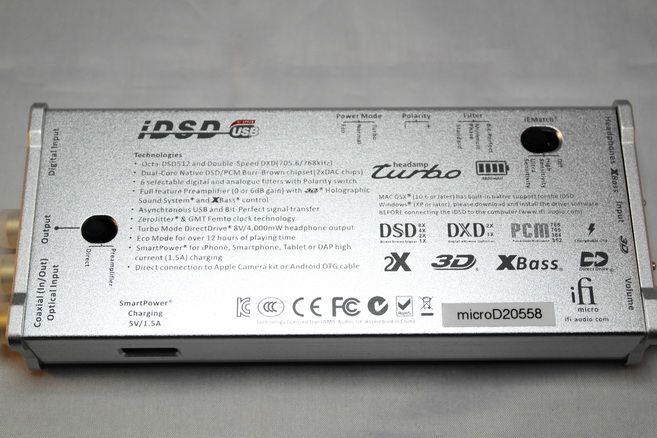
iEMatch and RCA-out selection on the bottom.
Gain, Hiss and EMI
There are two way of adjusting gain on micro iDSD: the power mode and the iEMatch. According to my own measurement, the Eco mode is just under 1dB of gain, Normal mode is around 9~10dB of gain where Turbo mode gives you around 15~16dB gain – and this is the same whether you are using micro iDSD as DAC+amp or as pure amp. iEMatch on the other hand is doing just the opposite by lowering gain: the Off setting doesn’t do anything, where High Sensitivity setting is about -11.4dB and Ultra Sensitivity setting is about -24dB. The recommended way of adjusting gain is that you start with the power mode first. If you still find Eco mode too loud, then you adjust the iEMatch. For example, it doesn’t make any sense to use Turbo mode with Ultra Sensitivity since you will end up getting roughly the same gain as Normal mode without iEMatch, yet wasting a lot of battery power in the process. Last but not least, there is also the pre-amp mode which you can set for the RCA output and it has a 9dB gain (roughly equal to Normal mode). That is mainly for using iDSD as a preamp feeding into a power amp, and you get to use the loudspeaker version of XBass and 3D Holographic Sound effect as well (which we will discuss more on the next section).
Hiss is not an issue for micro iDSD at all as I can’t even detect any obvious hiss on Turbo mode with my most hiss prone IEM. EMI is very mild too and hardly a concern at all. Even with Turbo mode, it is about as loud as someone whispering next to your ear.
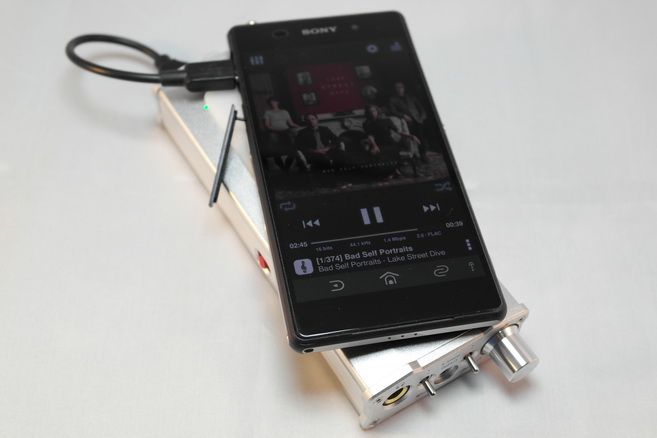
Sony Xperia Z2 feeds into micro iDSD via USB OTG cable
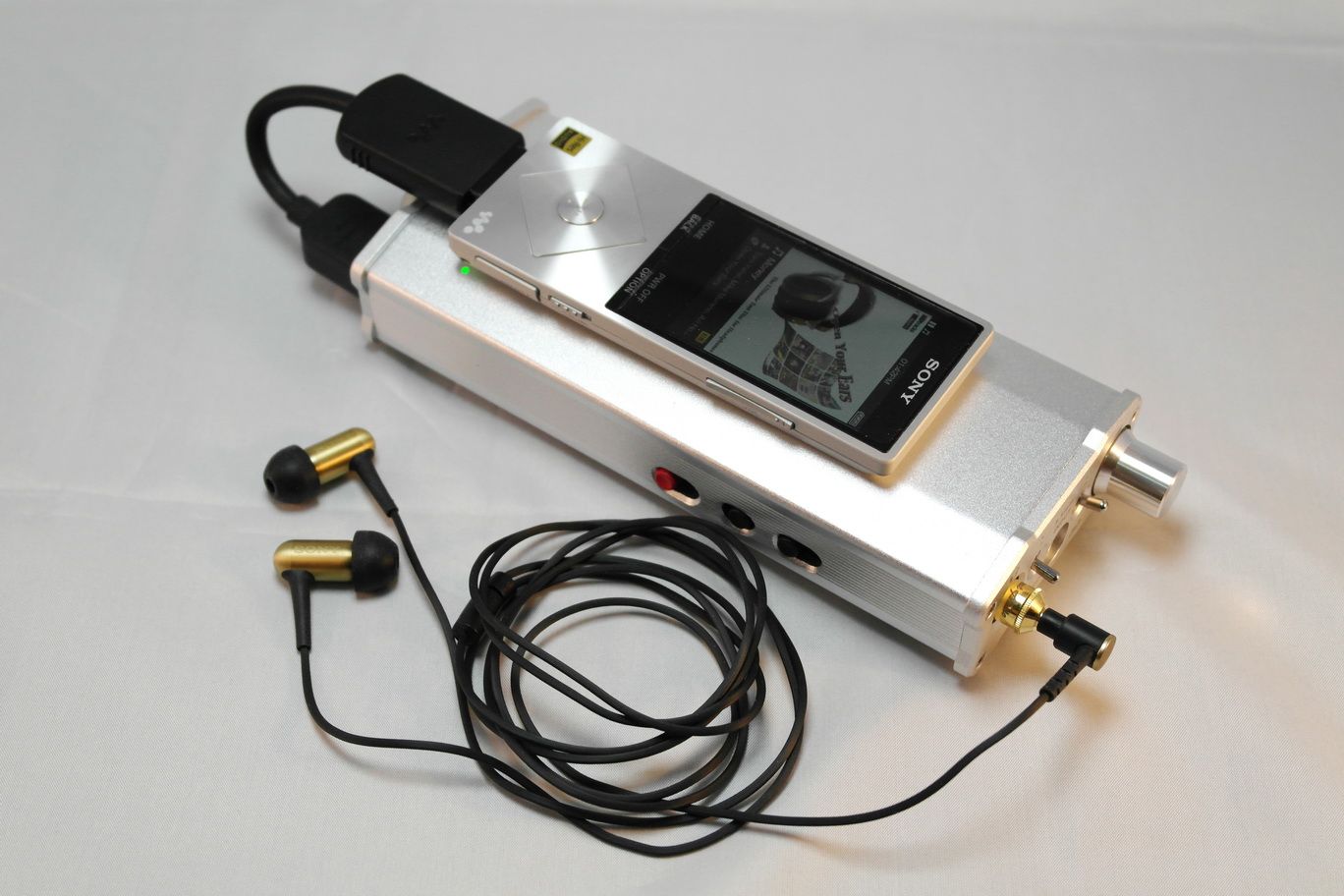
Sony NWZ-A15 feeding into micro iDSD via WMC-NWH10 cable
Sound Quality and EQ
As usual, we start with some basic measurement. RMAA reveals no problem as far as frequency response, noise and distortion go. In fact, the measured difference between Eco, Normal and Turbo mode is pretty small as well, which is a very good thing as higher gain doesn’t seem to degrade SQ much. Line-out voltage is about 1.95Vrms or so, where max voltage on headphone-out goes from just a little above 2Vrms in Eco mode to over 11Vrms in Turbo mode (*no load, and it might go lower with load, as indicated by iFi). Measurement over current output shows that it has plenty of power regardless of which gain mode it is in. With iEMatch sets to off, output impedance is under 1 ohm. On High Sensitivity, it is around 4 ohm or so. With Ultra Sensitivity, it goes back down under 1 ohm again. Also, High Sensitivity roughly cuts the output power by half with the same volume as the Off setting, though Ultra Sensitivity only cuts about 1/5. The main reason for more loss of power on High Sensitivity probably has to do with its higher output impedance, if anything else. Regardless, both High and Ultra Sensitivity still maintain more than adequate amount of power to drive IEM with good authority.
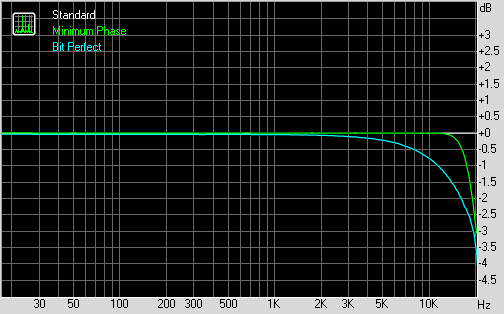
The Three PCM filters @ 16/44.1
Another user selectable option on the micro iDSD that will affect SQ is the filter selection. Filter is needed because the DAC’s sampling process will produce high frequency noise above the audible range. Even though it is mainly on the inaudible range, its effect will still reach under 20kHz and therefore we need filter to cut them off. With PCM decoding, the filter switch changes between three different digital filters setting: Standard, Minimum Phase and Bit Perfect. Standard filter is also known as ‘fast roll-off’ sometime, which has a shaper cut –off frequency, offer a flatter FR curve and nicer measurement. But it is often also regarded as being harsher and grainier sounding. Minimum Phase is what known as ‘slow roll-off’ by some, and usually offer a smoother sound but comes with a slight -3dB roll off between 14kHz to 20kHz. It is probably one of the most common filter found on higher end DAC because it is regarded as the best compromise between measurement and human perception. Bit Perfect on the other hand is actually not a filter at all. It is more commonly known as Non-OverSampling, or NOS for short. As the name implies, it is where the DAC doesn’t oversample the signal and doesn’t use any digital filter. The resulted FR curve has a rather big -3dB roll-off going from upper midrange all the way to 20kHz. NOS is in itself too complex a topic for us to cover here - but the basic idea is not to oversample the signal as would be done on normal DAC. Instead, the sampling is carried out where the focus is to restore the musicality back to the signal rather than to achieve the highest accuracy on frequency response. The result is often being described as a sound that is more analog and natural, though doesn’t measure nearly as good as the other two filters and can sound slightly hissy with sensitive headphone due to the lack of filter. To put it short, you can think of the three filters as going from what measured best to what perceived best. With DSD decoding, the same filter switch change to three analog filter selection: Standard, Extended, and Extreme. Due to its 1 bit nature, DSD can’t employ any digital filter (which we will discuss further in the next section on native decoding). Therefore it can only use analog filter after the decoding. The three settings are mainly to determine where to set the cut-off point along the frequency response. Last but not least, DXD only gets one setting and it is Bit Perfect / NOS, therefore it doesn’t matter which position the switch is in. So, you might start to wonder which filter sounds best? Well, the whole point of having a filter selection is so that you can find out the answer for yourself. It isn’t about right or wrong but about your own preference. However, for the purpose of the review, I have used the Standard filter for most of the measurement as well as majority of the subjective listening. Of course, this doesn’t actually mean I prefer the Standard filter more.
Last but not least on the user selectable switch that affects the SQ is the polarity. The short story it is that someone once found out that his music has been recorded in reversed polarity (which most human are not very sensitive of), then reversing the polarity will restore back what the music should have sounded like. In the ‘+’ position, the music will pass through iDSD as it is; in ‘-’ position however, the polarity will be reversed. I can’t really tell the difference myself, but don’t let me stop you from trying it out for yourself. If you are like me, just leave it at ‘+’ should be fine.
Now let start with the subjective listening – and let get this out of the way first: while micro iDSD can be used as a pure amp, it is not really the best portable amp you can buy for the price. While the amp section is excessively powerful and can drive even fairly inefficient planar magnetic headphone to quite a good level, it has a noticeably drier and brighter sound signature with some of the texture over lower mid to bass range missing. However, micro iDSD isn’t a bad sounding amp either. I would think the amp section alone is good enough to match any upper second tier portable amp or even lower top tier portable amp. It is just not enough to truly being referred as a top tier portable amp on its own.
As I have written on my review on nano iDSD, I often find portable DAC+amp combo either has a good amp but an only a decent DAC, or the other way around with a good DAC but just an okay amp section. On the micro iDSD however, I really don’t find the amp section to be the limiting factor at all – yes, it isn’t the best amp section ever. But it does have really good synergy with the DAC section, where the slightly drier amp is compensated by the slightly warmer DAC and they end up being smooth and fairly neutral sounding, if not just a bit on the richer and fuller side of the presentation. In other words, the sonic characteristics of the famous Burr Brown sound that is supposed to be warm and thick are not lost in the process, but tuned down a little and become more adaptive as a whole when it comes to synergy and headphone pairing. Of course, you are really craving for the full Burr Brown treatment, the RCA-out still offers a chance for you to feed micro iDSD to an amp of your own choice. That being said, the line-out from micro iDSD is indeed excellent. It rivals just about every USB DAC I have heard before, desktop or portable. Though I do want to point out I really haven’t heard any of the multi-thousands DAC that I can’t afford anyway, so it is not to say micro iDSD is the be-all-end-all of DAC.
One other thing I really love about the micro iDSD is that it is optimized for OTG usage. In my case, it works with both my Sony Xperia Z2 as well as Sony NWZ-A15 DAP without any problem. Sony already has a special USB driver implemented on their latest Android flagship smartphone, which upsamples everything to 24/192, and it works flawlessly with micro iDSD without the need of any extra app. Of course, if you have either USB Audio Player Pro, Onkyo HD Player or Hiby Music player, you can also play DSD files on iDSD as well using DoP protocol. The A15 player however isn’t Android based. But it does support USB OTG with a special cable (Sony WMC-NWH10) and has no problem working with micro iDSD to create probably one of the best sounding portable ‘stack’ in the market, rivaling high end audiophile digital audio players like HiFiman and Astell & Kern. I was, on two occasions, also able to compare micro iDSD to the much more expensive and very well regarded Chord Hugo (both fed by the same digital source). While Hugo carries a much more euphonic presentation, I don’t actually find it to be technically better than iDSD. One might like the flavour Hugo adds to the music, but it is really more of a flavour to me rather than a true rendition of what is intended, not to say that it isn’t an absolute great flavour on its own right. I personally thought that this is a good indication on micro iDSD’s ability to play on a much higher level of playfield than what its price tag would have otherwise suggested.
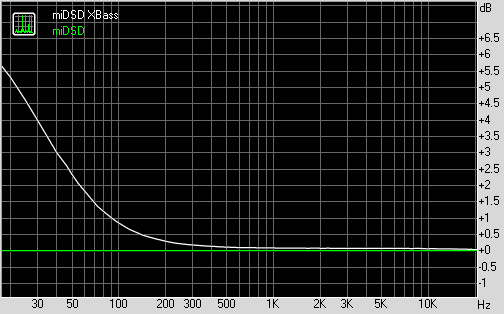
XBass
Micro iDSD, like micro iCAN, comes with both XBass and 3D Holographic Sound. Unlike iCAN’s two level selection however, they only have one setting on iDSD – on or off. The effect is somewhat in between iCAN’s two levels. iFi’s reasoning is that they don’t want to have too big or small an effect as people might find it either too much or too little. Thus they opted for the middle ground. To me, the effect on XBass is indeed a little too subtle. It seems to work fine on some of my IEM but less noticeable on other. 3D Holographic Sound on the other hand has a bit more noticeable impact, which the IEM user in me does like it quite a lot (*given most IEM never really have good soundstage to begin with). Last thing to note is that both XBass and 3D Holographic Sound also work on variable RCA-out (*preamp mode), but they are tuned differently from the XBass and 3D Holographic Sound on headphone-out as they are intended to be fed to power amp and eventually loudspeaker. So if you are feeding the variable RCA-out to a headphone amp (then to a headphone of course), the EQ might not sound right, especially with 3D Holographic Sound.
Extra: Native vs Non-Native Decoding
When it comes to DSD playback, the words ‘native decoding’ has been threw around fairly casually by many manufacturer. The fact is however, many of them isn’t as ‘native’ as you will like to believe and often some form of internal conversion has been employed. To really understand whether a DAC really is natively decoding DSD or PCM, often you need to look beyond words but inside the circuit design on the chip’s level. Unfortunately for most of us, that’s just impossible as manufacturer would rather not share with everyone their trade secret. I won’t try to cover the whole topic here as it is such complex an issue that it will probably take an expert a lot more inks than what this review is intended for, and I am no expert on this topic either. But luckily Mr. Thorsten Loesch, the designer of micro iDSD, has already written such an article. While it is about nano iDSD, the same blood is in the vein of micro iDSD as well. Therefore what has been said on that article is just as true for micro iDSD as it is for nano iDSD. Read it here: http://www.audiostream.com/content/qa-thorsten-loesch-amrifi
The take-away point is - with the complexity and uncertainty in recording and mastering of the music before it reaches our ears, it is best to keep thing as ‘native’ and as non-invasive as possible when it comes to converting the 1 and 0 back to analog sound. That’s perhaps the reason why iFi has insisted on using the Burr Brown DAC rather than opts for something new and shiny with a more ‘marketable’ nametag. In that sense, I think they have done a tremendous job on optimizing the Burr Brown DAC to make it just as relevant as any top-of-the-line DAC chip in the market right now.
Sum-up
Is micro iDSD the perfect portable DAC+amp? No. If I can have a wish list, I’ll like it to be smaller, lightly, slimmer, shorter and perhaps, a true top tier amp as well. But the one thing that can’t be denied, nor would I wish to change, is the fact the micro iDSD is packed full of value and performance. If you ever need a portable USB DAC + amp that can just about do it all, do it well, and do it without costing a limb, I reckon this is /it/.
A thanks to iFi Audio for the review sample.

Spec
DAC:
Dual Burr Brown DAC, custom interleaving for maximum SNR
Clock: Ultra low jitter GMT computer controlled Femto Clock (RMS jitter 12kHz – 1MHz < 280 Femtoseconds)
Selectable Filter:
PCM (digital): Bit-Perfect Processing/Minimum Phase/Standard
DSD (analog): Extreme/Extended/Standard Range
DXD (analog): Bit-Perfect Processing
Full Native Decoding:
DSD 512/256/128/64 (24.6/22.6/12.4/11.2/6.2/5.6/3.1/2.8Mhz)
DXD 2x/1x (768/705.6/384/352.8kHz)
PCM 768/705.6/384/352.8/192/176.4/96/88.2/48/44.1kHz
Dynamic Range (Line): over 117db(A)
THD & N (0dBFS Line): under 0.003%
Output Voltage (Line): over 2V
Output Impedance (Zout): under 240Ω
Jitter (correlated): Below AP2 test set limit
Headphone-out:
Selectable:
Power mode: Eco, Normal and Turbo
Polarity: Normal / Inverted
Filters: see DAC spec
iEMatch: Off / High Sensitivity / Ultra Sensitivity
Power (max) / (continuous.)
- Turbo mode: (10.0V max) 4000 mW @ 16 Ohm / over 1560 mW @ 64 Ohm
- Normal mode: (5.5V max) 1900 mW @ 16 Ohm / over 950 mW @ 32 Ohm
- Eco mode: (2.0V max) 500 mW @ 8 Ohm / over 250 mW @ 16 Ohm
Dynamic Range: over 115dB(A) (Eco Mode, 2V Out)
THD &N (500mW/16R): under 0.008%
Output Voltage: over 8V (Turbo Mode)
Output Impedance (Zout): under 1Ω (iEMatch not engaged)
Input:
USB 2.0 type A
Built-in iPurifier, all major OS (*MacOSX, Windows, Linux) support. OTG supports: Apple portable devices with iOS 7+ and camera connection kit and selected Android devices with USB OTG cable.
S/PDIF
Coax and optical in, PCM up to 192kHz.
Analog in
3.5mm stereo jack
Output:
S/PDIF
Coax-out, PCM up to 192kHz
RCA
User selectable line (direct) or variable (preamp, with 9dB gain) output
Headphone out
6.4mm stereo jack
SmartPower® Socket: For recharging USB device (BC1.2 supported, 5V @ 1.5A)
EQ: X-Bass and 3D Holographic Sound, separated output for speaker (RCA preamp mode) and headphone-out.



Accessories and Build Quality
Just about everything you need are included with the micro iDSD. You will get two rubber bands (for strapping a portable source to the iDSD), a short RCA-to-RCA cable, a short 3.5mm interconnecting cable, 4 stick-on rubber feet, an 1m USB 3.0 cable, a 1 foot USB cable with right angled plug (presumably for the SmartPower socket), a 6.4mm-to-3.5mm stereo adapter, a TOSlink adapter, a soft pouch, a small silicone mat (for cushioning between iDSD and your portable source), plug two USB type A female to type B female adapter (just in case you don’t want to use the included USB 3.0 cable but instead opt for your own USB type B cable, which is commonly known as the USB cable for printer and desktop USB device). Perhaps the only thing missing is either an OTG cable or camera connection kit, depends on whether you are an Android or Apple user. But those should be sourced by your own.
As with all iFi’s gears, build quality is quite excellent, though I do have some very minor complaints. The first is the more obvious – the housing is not exactly portable friendly, even though it is consistent with the micro series. You will want to put micro iDSD (along with its source) inside a small messenger bag or backpack rather than inside your pocket. The second is the tiny switches on the iDSD isn’t extremely firm and can be moved accidentally if it is in a very tight place (which makes it even less idea to put inside a pocket). It isn’t really that much of an issue as long as it is not in tight places though it is something to pay attention to. You won’t want to get caught off guarded when the gain switch is pushed from Eco to Turbo without you knowing it, for an example. A good practice is just not to store your micro iDSD with a lot of other stuff together. Having the rubber band on the body also help to keep things away. Last but not least, and I am just nit-picking here, is to have a less protruding 6.4mm-to-3.5mm adapter. The included adapter works just fine, but I do think a lower profiled adapter really works better.
One of the true genius on micro iDSD’s design is the use of a recessed USB type A male connector. This makes using either a camera connection kit for Apple iOS devices or an USB OTG cable for Android devices much easier. Gone is the need of multiple cable connecting to each other or special cable. It is streamlined and it is beautiful – makes me wonder why no other has thought about it before.

Front

Back
Battery Life
Battery life is estimated to be just around 6 hours with Turbo mode, 9 hours for Normal mode and 12 hours with Eco mode, plus or minus an hours or so depends on different condition and load of course. The battery life isn’t exactly long per se, but it is price you have to pay for having such a huge amount of output power for portable use.
Another thing about the battery is that it has its own smart circuit to control the charging. To speed up the charging, you need to plug the micro iDSD into a BC1.2 complied USB port. A regular USB port will work just as well, as long as the iDSD is turned off and you don’t mind a bit longer charging time. If the iDSD remains on, a regular USB port might not output enough current to both charge and power iDSD at the same time, so it might drain off the battery slowly. Whether it will drain or charge really depends on how much power your USB port can pump out. Again, a BC1.2 complied USB port (or hub) is your best bet. Last but not least, the smart circuit also turns micro iDSD into a USB power bank when (and only when) it is turned off. Just plug any USB device on to the USB port on the side of micro iDSD and it will charge it up. Needless to say, this will eat into micro iDSD’s play time.

SmartPower Socket on the side

Gain, Polarity and Filters selection on the side.

iEMatch and RCA-out selection on the bottom.
Gain, Hiss and EMI
There are two way of adjusting gain on micro iDSD: the power mode and the iEMatch. According to my own measurement, the Eco mode is just under 1dB of gain, Normal mode is around 9~10dB of gain where Turbo mode gives you around 15~16dB gain – and this is the same whether you are using micro iDSD as DAC+amp or as pure amp. iEMatch on the other hand is doing just the opposite by lowering gain: the Off setting doesn’t do anything, where High Sensitivity setting is about -11.4dB and Ultra Sensitivity setting is about -24dB. The recommended way of adjusting gain is that you start with the power mode first. If you still find Eco mode too loud, then you adjust the iEMatch. For example, it doesn’t make any sense to use Turbo mode with Ultra Sensitivity since you will end up getting roughly the same gain as Normal mode without iEMatch, yet wasting a lot of battery power in the process. Last but not least, there is also the pre-amp mode which you can set for the RCA output and it has a 9dB gain (roughly equal to Normal mode). That is mainly for using iDSD as a preamp feeding into a power amp, and you get to use the loudspeaker version of XBass and 3D Holographic Sound effect as well (which we will discuss more on the next section).
Hiss is not an issue for micro iDSD at all as I can’t even detect any obvious hiss on Turbo mode with my most hiss prone IEM. EMI is very mild too and hardly a concern at all. Even with Turbo mode, it is about as loud as someone whispering next to your ear.

Sony Xperia Z2 feeds into micro iDSD via USB OTG cable

Sony NWZ-A15 feeding into micro iDSD via WMC-NWH10 cable
Sound Quality and EQ
As usual, we start with some basic measurement. RMAA reveals no problem as far as frequency response, noise and distortion go. In fact, the measured difference between Eco, Normal and Turbo mode is pretty small as well, which is a very good thing as higher gain doesn’t seem to degrade SQ much. Line-out voltage is about 1.95Vrms or so, where max voltage on headphone-out goes from just a little above 2Vrms in Eco mode to over 11Vrms in Turbo mode (*no load, and it might go lower with load, as indicated by iFi). Measurement over current output shows that it has plenty of power regardless of which gain mode it is in. With iEMatch sets to off, output impedance is under 1 ohm. On High Sensitivity, it is around 4 ohm or so. With Ultra Sensitivity, it goes back down under 1 ohm again. Also, High Sensitivity roughly cuts the output power by half with the same volume as the Off setting, though Ultra Sensitivity only cuts about 1/5. The main reason for more loss of power on High Sensitivity probably has to do with its higher output impedance, if anything else. Regardless, both High and Ultra Sensitivity still maintain more than adequate amount of power to drive IEM with good authority.

The Three PCM filters @ 16/44.1
Another user selectable option on the micro iDSD that will affect SQ is the filter selection. Filter is needed because the DAC’s sampling process will produce high frequency noise above the audible range. Even though it is mainly on the inaudible range, its effect will still reach under 20kHz and therefore we need filter to cut them off. With PCM decoding, the filter switch changes between three different digital filters setting: Standard, Minimum Phase and Bit Perfect. Standard filter is also known as ‘fast roll-off’ sometime, which has a shaper cut –off frequency, offer a flatter FR curve and nicer measurement. But it is often also regarded as being harsher and grainier sounding. Minimum Phase is what known as ‘slow roll-off’ by some, and usually offer a smoother sound but comes with a slight -3dB roll off between 14kHz to 20kHz. It is probably one of the most common filter found on higher end DAC because it is regarded as the best compromise between measurement and human perception. Bit Perfect on the other hand is actually not a filter at all. It is more commonly known as Non-OverSampling, or NOS for short. As the name implies, it is where the DAC doesn’t oversample the signal and doesn’t use any digital filter. The resulted FR curve has a rather big -3dB roll-off going from upper midrange all the way to 20kHz. NOS is in itself too complex a topic for us to cover here - but the basic idea is not to oversample the signal as would be done on normal DAC. Instead, the sampling is carried out where the focus is to restore the musicality back to the signal rather than to achieve the highest accuracy on frequency response. The result is often being described as a sound that is more analog and natural, though doesn’t measure nearly as good as the other two filters and can sound slightly hissy with sensitive headphone due to the lack of filter. To put it short, you can think of the three filters as going from what measured best to what perceived best. With DSD decoding, the same filter switch change to three analog filter selection: Standard, Extended, and Extreme. Due to its 1 bit nature, DSD can’t employ any digital filter (which we will discuss further in the next section on native decoding). Therefore it can only use analog filter after the decoding. The three settings are mainly to determine where to set the cut-off point along the frequency response. Last but not least, DXD only gets one setting and it is Bit Perfect / NOS, therefore it doesn’t matter which position the switch is in. So, you might start to wonder which filter sounds best? Well, the whole point of having a filter selection is so that you can find out the answer for yourself. It isn’t about right or wrong but about your own preference. However, for the purpose of the review, I have used the Standard filter for most of the measurement as well as majority of the subjective listening. Of course, this doesn’t actually mean I prefer the Standard filter more.
Last but not least on the user selectable switch that affects the SQ is the polarity. The short story it is that someone once found out that his music has been recorded in reversed polarity (which most human are not very sensitive of), then reversing the polarity will restore back what the music should have sounded like. In the ‘+’ position, the music will pass through iDSD as it is; in ‘-’ position however, the polarity will be reversed. I can’t really tell the difference myself, but don’t let me stop you from trying it out for yourself. If you are like me, just leave it at ‘+’ should be fine.
Now let start with the subjective listening – and let get this out of the way first: while micro iDSD can be used as a pure amp, it is not really the best portable amp you can buy for the price. While the amp section is excessively powerful and can drive even fairly inefficient planar magnetic headphone to quite a good level, it has a noticeably drier and brighter sound signature with some of the texture over lower mid to bass range missing. However, micro iDSD isn’t a bad sounding amp either. I would think the amp section alone is good enough to match any upper second tier portable amp or even lower top tier portable amp. It is just not enough to truly being referred as a top tier portable amp on its own.
As I have written on my review on nano iDSD, I often find portable DAC+amp combo either has a good amp but an only a decent DAC, or the other way around with a good DAC but just an okay amp section. On the micro iDSD however, I really don’t find the amp section to be the limiting factor at all – yes, it isn’t the best amp section ever. But it does have really good synergy with the DAC section, where the slightly drier amp is compensated by the slightly warmer DAC and they end up being smooth and fairly neutral sounding, if not just a bit on the richer and fuller side of the presentation. In other words, the sonic characteristics of the famous Burr Brown sound that is supposed to be warm and thick are not lost in the process, but tuned down a little and become more adaptive as a whole when it comes to synergy and headphone pairing. Of course, you are really craving for the full Burr Brown treatment, the RCA-out still offers a chance for you to feed micro iDSD to an amp of your own choice. That being said, the line-out from micro iDSD is indeed excellent. It rivals just about every USB DAC I have heard before, desktop or portable. Though I do want to point out I really haven’t heard any of the multi-thousands DAC that I can’t afford anyway, so it is not to say micro iDSD is the be-all-end-all of DAC.
One other thing I really love about the micro iDSD is that it is optimized for OTG usage. In my case, it works with both my Sony Xperia Z2 as well as Sony NWZ-A15 DAP without any problem. Sony already has a special USB driver implemented on their latest Android flagship smartphone, which upsamples everything to 24/192, and it works flawlessly with micro iDSD without the need of any extra app. Of course, if you have either USB Audio Player Pro, Onkyo HD Player or Hiby Music player, you can also play DSD files on iDSD as well using DoP protocol. The A15 player however isn’t Android based. But it does support USB OTG with a special cable (Sony WMC-NWH10) and has no problem working with micro iDSD to create probably one of the best sounding portable ‘stack’ in the market, rivaling high end audiophile digital audio players like HiFiman and Astell & Kern. I was, on two occasions, also able to compare micro iDSD to the much more expensive and very well regarded Chord Hugo (both fed by the same digital source). While Hugo carries a much more euphonic presentation, I don’t actually find it to be technically better than iDSD. One might like the flavour Hugo adds to the music, but it is really more of a flavour to me rather than a true rendition of what is intended, not to say that it isn’t an absolute great flavour on its own right. I personally thought that this is a good indication on micro iDSD’s ability to play on a much higher level of playfield than what its price tag would have otherwise suggested.

XBass
Micro iDSD, like micro iCAN, comes with both XBass and 3D Holographic Sound. Unlike iCAN’s two level selection however, they only have one setting on iDSD – on or off. The effect is somewhat in between iCAN’s two levels. iFi’s reasoning is that they don’t want to have too big or small an effect as people might find it either too much or too little. Thus they opted for the middle ground. To me, the effect on XBass is indeed a little too subtle. It seems to work fine on some of my IEM but less noticeable on other. 3D Holographic Sound on the other hand has a bit more noticeable impact, which the IEM user in me does like it quite a lot (*given most IEM never really have good soundstage to begin with). Last thing to note is that both XBass and 3D Holographic Sound also work on variable RCA-out (*preamp mode), but they are tuned differently from the XBass and 3D Holographic Sound on headphone-out as they are intended to be fed to power amp and eventually loudspeaker. So if you are feeding the variable RCA-out to a headphone amp (then to a headphone of course), the EQ might not sound right, especially with 3D Holographic Sound.
Extra: Native vs Non-Native Decoding
When it comes to DSD playback, the words ‘native decoding’ has been threw around fairly casually by many manufacturer. The fact is however, many of them isn’t as ‘native’ as you will like to believe and often some form of internal conversion has been employed. To really understand whether a DAC really is natively decoding DSD or PCM, often you need to look beyond words but inside the circuit design on the chip’s level. Unfortunately for most of us, that’s just impossible as manufacturer would rather not share with everyone their trade secret. I won’t try to cover the whole topic here as it is such complex an issue that it will probably take an expert a lot more inks than what this review is intended for, and I am no expert on this topic either. But luckily Mr. Thorsten Loesch, the designer of micro iDSD, has already written such an article. While it is about nano iDSD, the same blood is in the vein of micro iDSD as well. Therefore what has been said on that article is just as true for micro iDSD as it is for nano iDSD. Read it here: http://www.audiostream.com/content/qa-thorsten-loesch-amrifi
The take-away point is - with the complexity and uncertainty in recording and mastering of the music before it reaches our ears, it is best to keep thing as ‘native’ and as non-invasive as possible when it comes to converting the 1 and 0 back to analog sound. That’s perhaps the reason why iFi has insisted on using the Burr Brown DAC rather than opts for something new and shiny with a more ‘marketable’ nametag. In that sense, I think they have done a tremendous job on optimizing the Burr Brown DAC to make it just as relevant as any top-of-the-line DAC chip in the market right now.
Sum-up
Is micro iDSD the perfect portable DAC+amp? No. If I can have a wish list, I’ll like it to be smaller, lightly, slimmer, shorter and perhaps, a true top tier amp as well. But the one thing that can’t be denied, nor would I wish to change, is the fact the micro iDSD is packed full of value and performance. If you ever need a portable USB DAC + amp that can just about do it all, do it well, and do it without costing a limb, I reckon this is /it/.
A thanks to iFi Audio for the review sample.
ClieOS
@yuping O2 and micro iCAN is pretty much on par when it comes to SQ, but one thing that gives micro iCAN the edge is its 3D Holographic Sound and Xbass. Between the two, I am more inclined to recommend micro iCAN first. Better yet, get the newer micro iCAN SE as it is as good as the regular iCAN, but with a lot more power.
R
roladyzator
@ClieOS How does micro idsd compare to Audiotrak Dr. Dac 3? Is it worth paying extra for the iDSD?
I am looking for an upgrade from Fiio E10k to drive KRK KNS 8400 and DT150.
FiiO sounds a little dry to me with KRK and a bit muddy in the bass and dull in the treble on DT150. I expect an overall increase in resolution and detail retrieval, soundstage size. I expect an overall increase in resolution and detail retrieval, soundstage size. Of course I never experienced hi end sound so I don't know what to expect.
I am looking for an upgrade from Fiio E10k to drive KRK KNS 8400 and DT150.
FiiO sounds a little dry to me with KRK and a bit muddy in the bass and dull in the treble on DT150. I expect an overall increase in resolution and detail retrieval, soundstage size. I expect an overall increase in resolution and detail retrieval, soundstage size. Of course I never experienced hi end sound so I don't know what to expect.
ClieOS
@roladyzator Dr. DAC 3 is a solid DAC/amp, but if budget isn't a major issue, I'll always recommend micro iDSD first. It is just a step up from Dr. DAC 3. However, I never listened to KRK or DT180 before and can't comment on how they will behave on iDSD or Dr. DAC3.
ClieOS
IEM Reviewer Extraordinaire
Pros: SQ.
Cons: The high impedance requires a good source (of power) to sound good.
Prelude: A few weeks ago I was contacted by a mutual 3rd party on whether I will like to give some Chinese made high-Z earbuds a review. Immediately I recalled a review article I read awhile back in erji.net that comes with fairly high praise (and subsequently get knocked around a few times, see reason below). We don’t see a lot of high-Z earbuds around so I was fairly certain they should be the same things. I don’t keep high hope for earbuds these days but I am still an earbuds lover in heart, so I agreed to give them a look, and indeed they turn out to be the same model I saw earlier. They are made by a small Chinese company called VE (52VE.cn, with a Chinese name translated to ‘micro wing’). No sooner after I agreed, the news spread out on some Chinese forums, which in turn came back to HF, and I received some ‘friendly suggestion’ that, perhaps it might not be the best of idea to do a review on VE. It would seem that there are a lot of heated discussion (or controversy?) on whether VE is a genuine company or just a quick DIY job for money. Even more so is whether VE actually makes TOTL earbuds as they and their Chinese supporters have claimed. Different from the international market where IEM rules, earbuds still hold a high esteem among Chinese audiophiles and they really don’t mind paying for premium earbuds – mixed that with the fact that there are a lot of shady companies employing shill marketing tactic, it is understandable on why people are always skeptical and will act defensively when confronted with such a bold claim. If there is anything I learned from reading Chinese audiophiles forums over the years, it will be the bad ‘SNR’ that often ruins the days. You can never quite sure whether you are reading genuine impression, shill marketing, over-enthused writing or maybe some other types of hidden agenda. So I decided not to take things written on a those forums too seriously but instead let the products speak for themselves, which I kind of glad that I did. Nevertheless, I think a prelude is needed to shine some light on the unusual circumstances surrounding VE. Regardless of what have been said, it will be a mistake to dismiss VE – that much I am sure.

It said: "torture one-self, reject mediocrity, all for our sound."
Spec
Asura
Transducer: Open Dynamic
Sensitivity: 108dB
Frequency Response: 10Hz~25kHz
Impedance: 150ohm
Cable Length: 1.2m
MSRP: US$48
Zen
Transducer: Open Dynmanic
Sensitivity: -/-
Frequency Response: 20Hz~20kHz
Impedance: 320ohm
Cable Length: 1.2m
MSRP: US$112
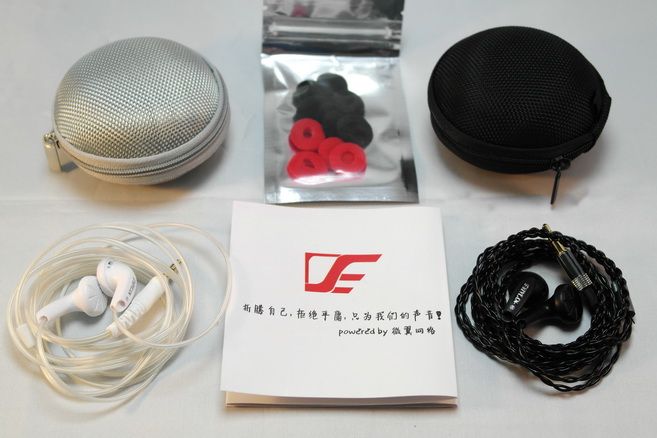
Zen (left) and Asura (right)
Packaging, Accessories and Build Quality
The Zen and Asura comes in one single white box with no model name on the outside. I assume it is one of the ‘early bird’ pack for those who pre-ordered the Zen, which also get a free Asura. The 320ohm Zen is pretty much the flagship earbuds for VE, and Asura is the previous flagship. According to what I have read, Asura is more of a bang-for-buck model meant to be Hi-Fi yet not breaking the bank where Zen is meant to compete with other top-of-the-line earbuds in the market.
Accessories wise, there really are not a lot to talk about. Beside the decent hard case, all you’ll get are some foam pad. Then again, that’s pretty much the standard for most other earbuds, so nothing to complain about.
Build quality is decent. They are not Sennheiser MX895 so there isn’t any flashy metal or unique design to speak of. The earpiece housing is just the generic type, though the cable do look better than decent - with weaved cable on Asura and the straight silver cable on Zen. Can’t really say what is the material used though, as VE doesn’t list out detail spec on both models. Needless to say, I don’t think you should use them on rough situation (i.e. sport and such). Otherwise I don’t see a problem.

Asura
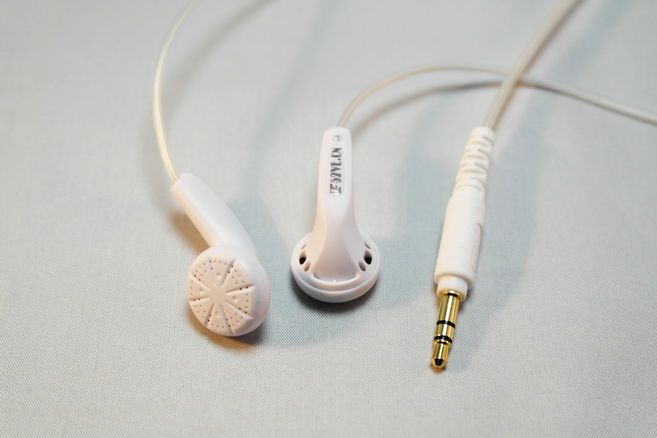
Zen
Sound Quality
It isn’t easy to describe the sound signature of Zen. If MX985 is about immersion and warm where TM7 is about lush and liveliness, then Zen will be about PRaT. If you don’t know about what PRaT means, well, it is basically the ‘toe-tapping’ factor in music. The kind of factor that makes a certain headphone more ‘danceable’ than other on the same music. One of the reason is perhaps Zen has one of the best bass impact and attack I have heard on any earbud. It is not purely a quantitative matter as Zen isn’t exactly what I’ll refer as bass heavy, but the transient is certainly excellent. The vocal range is actually slightly further away when compared to TM7 (and even more when compared to the very sweet MX985), though it holds on to its own and doesn’t sound thin at all. If anything, I’ll say Zen’s vocal range is still pretty good. It gives a sense of depth while still keep a good amount of texture. In contrast, I’ll say Yuin PK1 sounds much thinner in the mid-range. Treble is quite good as well. Not as sparkly as TM7 but I don’t sense any darkness or dullness either. Soundstage is somewhere between TM7 and MX985 - not the widest, but still above average.
Asura pretty much share the same sound signature as Zen, with a similar emphasis on PRaT, but feels a bit more compressed on overall dynamic and a bit grainier on the upper vocal. Still, it is good enough that I think it will give PK1 a good run for its money. One thing to note is that, because of the 320ohm vs. 150ohm impedance between the two earbuds, Asura can sound better than Zen when they are on weak source. For example, even though they are both loud enough on my Sony A15 (10mW @ 16ohm), I can definitely tell the Zen has lost its edge and feel rather lifeless. Asura on the other hand still rocks on. But once I have A15 feeding into iDSD micro (as DAC) and O2 (as amp), the situation reversed where Zen comes up on top. So a word of caution is to consider what kind of source you will be using with these two earbuds as it can kind of turn things around.
All and all, I’ll place Zen as one of the best three earbuds I current have, among TM7 and MX985. Asura on the other hand is just a few steps down, at the middle of my top ten list, perhaps right around where PK1 will be.
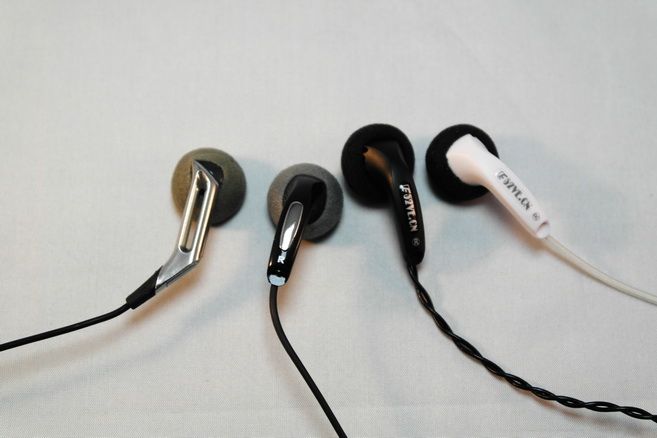
From left: MX985, TM7, Asura, and Zen.
Sum-up
I don’t usually get goosebump when listen to earbuds , but I do when I heard something that of exceptional quality. The last time I got one is from Blox TM7 some 2.5 years ago. Since then, I have picked up Hifiman EX100, Obique ES903, a few Dasetn, Sidy (also known as BGVP) DX1, some Tingo, Audio-Technica CM707, a very cool Chinese made Dual-Driver-Matrix based earbud and last but not least, the hybrid DUNU Alpha 1 – none is bad per se and a few are actually quite good, though they never approach the top-tier level – but then comes the Zen, and in fact Asura as well. I got two goosebump in a day and it is golden.
Now we just need someone to bring these out of China.

It said: "torture one-self, reject mediocrity, all for our sound."
Spec
Asura
Transducer: Open Dynamic
Sensitivity: 108dB
Frequency Response: 10Hz~25kHz
Impedance: 150ohm
Cable Length: 1.2m
MSRP: US$48
Zen
Transducer: Open Dynmanic
Sensitivity: -/-
Frequency Response: 20Hz~20kHz
Impedance: 320ohm
Cable Length: 1.2m
MSRP: US$112

Zen (left) and Asura (right)
Packaging, Accessories and Build Quality
The Zen and Asura comes in one single white box with no model name on the outside. I assume it is one of the ‘early bird’ pack for those who pre-ordered the Zen, which also get a free Asura. The 320ohm Zen is pretty much the flagship earbuds for VE, and Asura is the previous flagship. According to what I have read, Asura is more of a bang-for-buck model meant to be Hi-Fi yet not breaking the bank where Zen is meant to compete with other top-of-the-line earbuds in the market.
Accessories wise, there really are not a lot to talk about. Beside the decent hard case, all you’ll get are some foam pad. Then again, that’s pretty much the standard for most other earbuds, so nothing to complain about.
Build quality is decent. They are not Sennheiser MX895 so there isn’t any flashy metal or unique design to speak of. The earpiece housing is just the generic type, though the cable do look better than decent - with weaved cable on Asura and the straight silver cable on Zen. Can’t really say what is the material used though, as VE doesn’t list out detail spec on both models. Needless to say, I don’t think you should use them on rough situation (i.e. sport and such). Otherwise I don’t see a problem.

Asura

Zen
Sound Quality
It isn’t easy to describe the sound signature of Zen. If MX985 is about immersion and warm where TM7 is about lush and liveliness, then Zen will be about PRaT. If you don’t know about what PRaT means, well, it is basically the ‘toe-tapping’ factor in music. The kind of factor that makes a certain headphone more ‘danceable’ than other on the same music. One of the reason is perhaps Zen has one of the best bass impact and attack I have heard on any earbud. It is not purely a quantitative matter as Zen isn’t exactly what I’ll refer as bass heavy, but the transient is certainly excellent. The vocal range is actually slightly further away when compared to TM7 (and even more when compared to the very sweet MX985), though it holds on to its own and doesn’t sound thin at all. If anything, I’ll say Zen’s vocal range is still pretty good. It gives a sense of depth while still keep a good amount of texture. In contrast, I’ll say Yuin PK1 sounds much thinner in the mid-range. Treble is quite good as well. Not as sparkly as TM7 but I don’t sense any darkness or dullness either. Soundstage is somewhere between TM7 and MX985 - not the widest, but still above average.
Asura pretty much share the same sound signature as Zen, with a similar emphasis on PRaT, but feels a bit more compressed on overall dynamic and a bit grainier on the upper vocal. Still, it is good enough that I think it will give PK1 a good run for its money. One thing to note is that, because of the 320ohm vs. 150ohm impedance between the two earbuds, Asura can sound better than Zen when they are on weak source. For example, even though they are both loud enough on my Sony A15 (10mW @ 16ohm), I can definitely tell the Zen has lost its edge and feel rather lifeless. Asura on the other hand still rocks on. But once I have A15 feeding into iDSD micro (as DAC) and O2 (as amp), the situation reversed where Zen comes up on top. So a word of caution is to consider what kind of source you will be using with these two earbuds as it can kind of turn things around.
All and all, I’ll place Zen as one of the best three earbuds I current have, among TM7 and MX985. Asura on the other hand is just a few steps down, at the middle of my top ten list, perhaps right around where PK1 will be.

From left: MX985, TM7, Asura, and Zen.
Sum-up
I don’t usually get goosebump when listen to earbuds , but I do when I heard something that of exceptional quality. The last time I got one is from Blox TM7 some 2.5 years ago. Since then, I have picked up Hifiman EX100, Obique ES903, a few Dasetn, Sidy (also known as BGVP) DX1, some Tingo, Audio-Technica CM707, a very cool Chinese made Dual-Driver-Matrix based earbud and last but not least, the hybrid DUNU Alpha 1 – none is bad per se and a few are actually quite good, though they never approach the top-tier level – but then comes the Zen, and in fact Asura as well. I got two goosebump in a day and it is golden.
Now we just need someone to bring these out of China.
golov17
Pure true, thanks for review 

effsandoval
What is the difference between the Zen Black And Zen 2.0?
ClieOS
@effsandoval, Zen black should be Zen 2.0 with Cardas cable, if I am not mistaken. Don't ask me about the SQ of either as I haven't listened to them yet. Might have a chance later
ClieOS
IEM Reviewer Extraordinaire
Pros: Well-rounded Sound. Good Soundstage. Price.
Cons: Poor Isolation. Slight stiff cable.
It might be a bit odd to name an IEM the O-16, as in ‘oxygen’. But given their first IEM is the carbon (C-12), I guess the India based Signature Acoustics does meant to create a real ‘Element’ series based on the periodic table. As their second product, the O-16 continues to target the budget IEM market and one can be found for just US$30 or so.
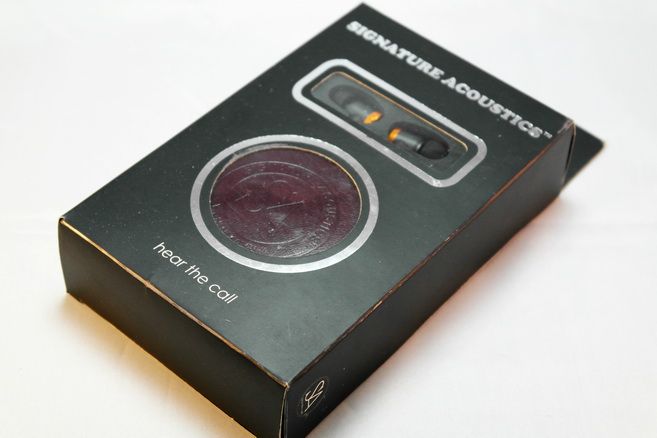
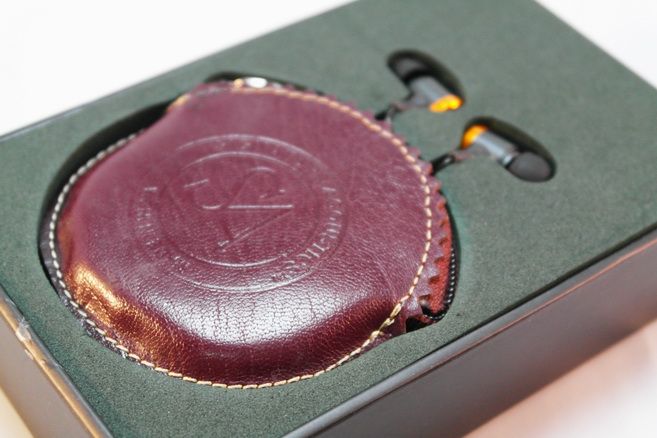
Spec
Driver: 8 mm (CCAW) Open Back Dynamic
Impedance: 17 Ohms @ 1Khz
Frequency Response: 12 to 22 Khz
Sensitivity: 102 dB
Total length: 1.2 m
Channel Balance: Less than 2.5% dB @ 1 Khz
Connector: 3.5mm Gold Plated Stereo
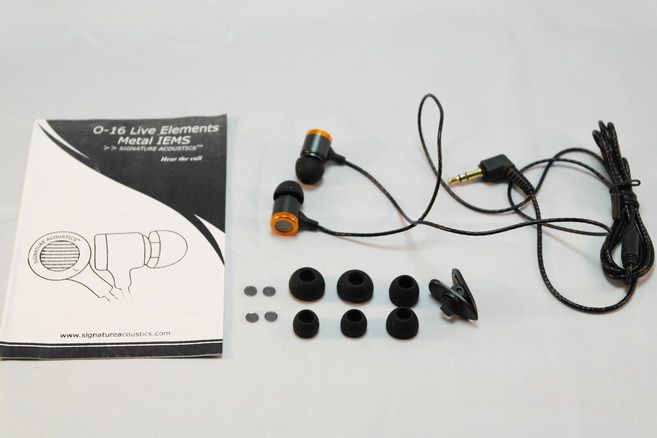
Packaging, Accessories and Build Quality
The new IEM comes in the case paper box as its elder sibling, so there really isn’t much to say about. Accessories wise, it is the same story – there are three pair of eartips, shirt clip, two pair of replacement filters and the really good looking leather case. Build quality is decent as well, nothing to complain about. The two tone color scheme is quite shape, in a good way no less. The only thing to mention is the cable - while good quality, it is a bit on the stiff side with minor memory effect. Same as the one found on C-12.
Last but not least: since this is an open back IEM, isolation is, as expected, not great. So it is not going to be a good choice on noisy places, but more for in-da-house kind of situation.
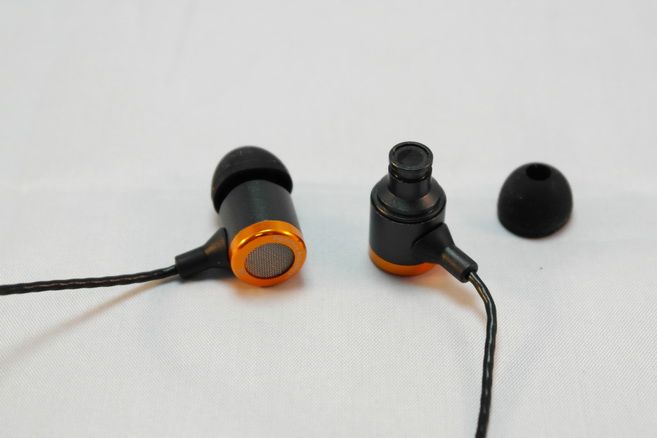
Sound Quality
The sound signature of O-16 is warm and sweet with a slight emphasis on the midrange. Good extension on both ends, but does get a bit rounded off. Bass has good quality and decent quantity, polite in a way but not shy by any mean, though not stand out on their own either. Same can be said to the treble – clean, clear, polite and not exactly bright or exciting. There are some sparkle and micro-detail, but often they don’t stand out enough. Mid is just slightly sweet, well textured with a good thickness to accentuate the vocal. It is further helped by a good soundstage that is aided by the open back design to give it a musical and fluid presentation.
All and all, the O-16 has a well-rounded sound – mature, polite, not boring by any mean but also lacks just a touch of excitement that could have excelled it to the next level. It could very well being said to be a gentleman’s IEM – a rather safe choice, so to speak. It has the same easy-goingness of its elder sibling, the C-12, but a little conservative in tuning. If C-12 is that one you want to listen outdoor, then O-16 is definitely the one that you want to listen indoor, in a nice quiet place with some smooth music. The safer tuning does however make O-16 more adaptive than C-12 when it comes to different genres of music.

Sum-up
Overall, O-16 maintains about the same level of performance of C-12, but tuned in quite a different way with their own pros and cons. The openness of its presentation does in fact gives O-16 kind of a ‘live’ feeling, though it is more of a small venue with Jazz music rather than a big stadium with Rock music. For the price of US$30 however, it won’t be fair to ask for perfection anyway. All being said, the O-16 is still well ahead of most of its competition in the same price bucket. Once again, Signature Acoustics might be a new comer in the IEM world, they certain know their game.
A thanks to Signature Acoustics for the sample


Spec
Driver: 8 mm (CCAW) Open Back Dynamic
Impedance: 17 Ohms @ 1Khz
Frequency Response: 12 to 22 Khz
Sensitivity: 102 dB
Total length: 1.2 m
Channel Balance: Less than 2.5% dB @ 1 Khz
Connector: 3.5mm Gold Plated Stereo

Packaging, Accessories and Build Quality
The new IEM comes in the case paper box as its elder sibling, so there really isn’t much to say about. Accessories wise, it is the same story – there are three pair of eartips, shirt clip, two pair of replacement filters and the really good looking leather case. Build quality is decent as well, nothing to complain about. The two tone color scheme is quite shape, in a good way no less. The only thing to mention is the cable - while good quality, it is a bit on the stiff side with minor memory effect. Same as the one found on C-12.
Last but not least: since this is an open back IEM, isolation is, as expected, not great. So it is not going to be a good choice on noisy places, but more for in-da-house kind of situation.

Sound Quality
The sound signature of O-16 is warm and sweet with a slight emphasis on the midrange. Good extension on both ends, but does get a bit rounded off. Bass has good quality and decent quantity, polite in a way but not shy by any mean, though not stand out on their own either. Same can be said to the treble – clean, clear, polite and not exactly bright or exciting. There are some sparkle and micro-detail, but often they don’t stand out enough. Mid is just slightly sweet, well textured with a good thickness to accentuate the vocal. It is further helped by a good soundstage that is aided by the open back design to give it a musical and fluid presentation.
All and all, the O-16 has a well-rounded sound – mature, polite, not boring by any mean but also lacks just a touch of excitement that could have excelled it to the next level. It could very well being said to be a gentleman’s IEM – a rather safe choice, so to speak. It has the same easy-goingness of its elder sibling, the C-12, but a little conservative in tuning. If C-12 is that one you want to listen outdoor, then O-16 is definitely the one that you want to listen indoor, in a nice quiet place with some smooth music. The safer tuning does however make O-16 more adaptive than C-12 when it comes to different genres of music.

Sum-up
Overall, O-16 maintains about the same level of performance of C-12, but tuned in quite a different way with their own pros and cons. The openness of its presentation does in fact gives O-16 kind of a ‘live’ feeling, though it is more of a small venue with Jazz music rather than a big stadium with Rock music. For the price of US$30 however, it won’t be fair to ask for perfection anyway. All being said, the O-16 is still well ahead of most of its competition in the same price bucket. Once again, Signature Acoustics might be a new comer in the IEM world, they certain know their game.
A thanks to Signature Acoustics for the sample
ClieOS
Don't known any American reseller, but it can be found on eBay India, listed by Signature Acoustics main dealer and they do ship worldwide. With shipping to US included, it comes out just under US$50.
Hawaiibadboy
I ain't gonna lie....i looked at that leather case like 10 times. That is included with a under $50 set of IEM ? If that's real leather that's cool as hell.
ClieOS
It is indeed real leather.
ClieOS
IEM Reviewer Extraordinaire
Pros: Features Packed, reasonably Priced
Cons: Hiss as pure amp, Too high a gain for PC use..
Over the recent months, Creative has been bursting out some pretty nice portable gears aiming from the basic casual user all the way up to serious audiophiles. Most importantly, they are pricing them in a way that almost makes all other major brands look greedy. Usually that’s the strategy reserved for new start-ups or lesser known companies, but I have no complaint. If anyway, I am glad to see Creative getting, well, creative again. Two of the major factors for any tech companies to success are innovation and addition of extra value to the user – that’s what Creative is doing now, finally coming out of the shadow of other big tech brands and remaking a name of their own in era of the smart devices.
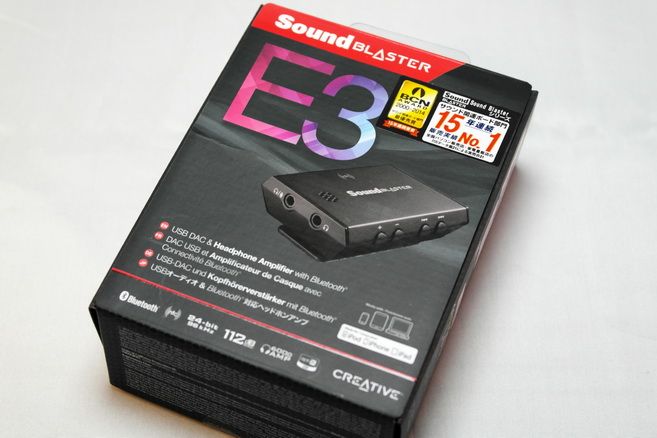
Spec
Analog Output: Stereo
SNR: 112dB
Headphone Out: 1 x 3.5mm jack
Headphone Out / Mic In: 1 x 3.5mm jack
Line In: 1 x 3.5mm jack (4-pole)
Headphone Impedance: Up to 600 Ohms
Audio Technologies Supported: SBX Pro Studio, CrystalVoice, Scout Mode
Max. Playback Quality
USB 2.0 (PC/Mac): Stereo - up to 24-bit / 96kHz
USB (mobile): Stereo - up to 24-bit / 48kHz
Max. Recording Quality: 24-bit / 48kHz
Battery Life
Bluetooth - Up to 8 hours
Analog Audio Playback - Up to 17 hours
Bluetooth Audio Codec: AAC, SBC and aptX
Bluetooth 2.1 EDR with Multipoint, A2DP and AVRCP, HFP support
NFC supported
Built-in Mono Microphone
Dimensions: 60.5 x 45 x 23 mm (2.38 x 1.77 x 0.90 inches)
Weight: 44 grams
MSRP: USD$130
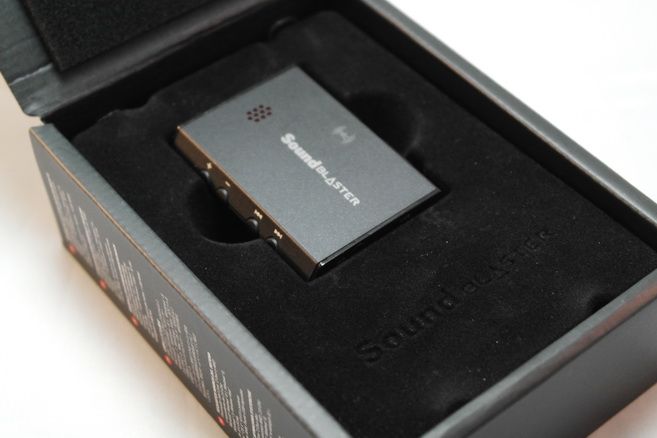
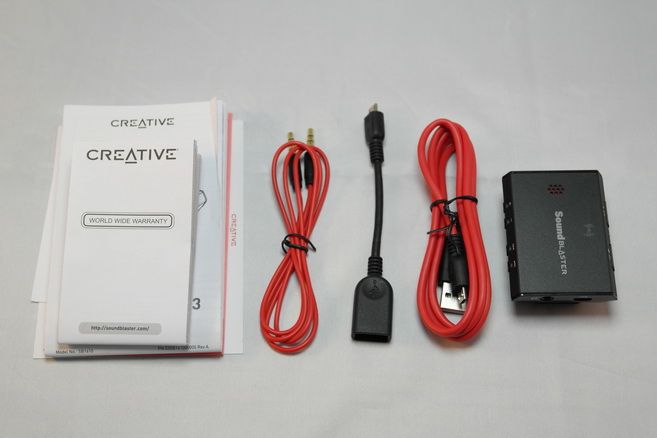
Accessories and Build Quality
Like E1 I have reviewed, E3 is also packed in a pretty decent looking box. Accessories are similar as well – you will still get a USB cable for charging / connection to PC and a fairly long TRRS 3.5mm stereo cable to connect to your smartphone’s headphone jack. The one extra accessory is a (male)microUSB-to-(female)USB OTG cable that will be required if you want to use E5 as an USB DAC with your smartphone (*plus another male-to-male USB OTG cable of your own supply that connects the smartphone to the E5’s OTG cable).
Though the construction is all plastic, E3 doesn’t feel cheaply made. For the purpose of being a clip-on portable devices, it is probably more sensible to use plastic anyway. The design is similar to E1, but with more bottom to support for digital volume and next/previous control. The extra features also make E3 a thicker device, and the non-removable back clip isn’t helping. Besides having just about every features found on E1 (i.e, built-in mic, dual headphone-out, line-in, software package for PC gamer, etc), E3 also spots USB OTG function that allows it to be used as USB DAC with some Apple and Android smart devices. Another welcoming features is Bluetooth with aptX support. All of these are making E3 one of the most versatile accessories for smartphone user that doesn’t cost an arm or a leg.
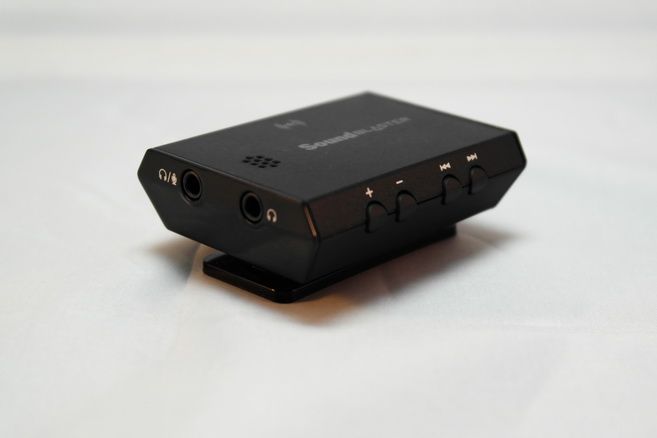
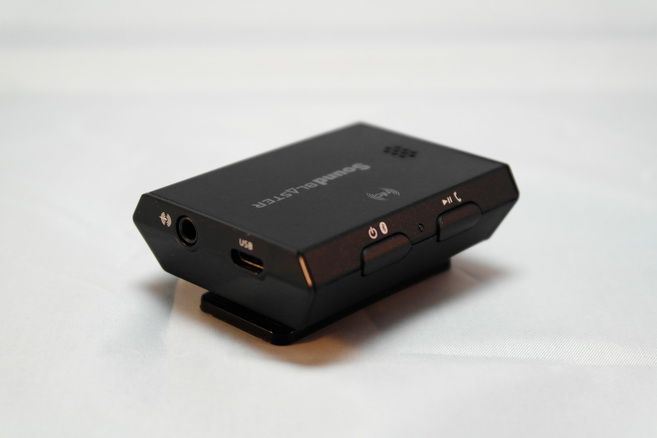
Gain, Hiss, EMI and Battery Life
As an USB DAC+amp, E3 can pump out a max voltage of roughly 2.1Vrms, which is pretty high. As a pure amp, it has a gain of about 10dB. In fact, the gain might be a bit too high for most fairly sensitive headphone in the market. I’ll have to keep the Windows volume setting down to around and often under 10/100 to make sure I am not going to blast myself into early deafness. With very sensitive IEM, I even find 2/100 can be plenty loud – and this is not only just a simple volume issue. As E3 uses Windows internal digital volume control, it is definitely going to lose some bit depth when pushing the volume so low. The only consolation is that I didn’t hear any obvious degradation of sound quality, likely thanks to its 24bit support. But truth being told, E3’s gain is simply too high to be practical as a PC soundcard, though it might be just right for smartphones’ weak output. This is probably my only real complaint about E3. It would have been great if it has a gain switch for a lower gain setting.
On the other hand, hiss performance is great when it is connected to PC via USB cable or a Bluetooth source as it is pretty much silence even with my most sensitive IEM. But once disconnected from PC and acting as a pure amp, there is some background hiss that is noticeable when no music is playing. EMI is basically a non-issue as E3 is dead silent even next to a cell phone receiving call.
Creative is quoting a battery life of 8 hours with Bluetooth and 17 hours as pure amp. Of course, the actual battery life does vary depend on how you are using it. I never really use E3 as a pure amp but as far as Bluetooth goes, Creative’s number seems to be about right.


Sound Quality
RMAA measurement doesn’t reveal any major problem when E3 is used as either a pure amp or as an USB DAC+amp. The only thing to take note is the bass roll-off under 100Hz. It drops down to -2.3dB when used as a pure amp, or -1dB when used as a USB DAC+amp. The bass roll-off has nothing to do with load so I’ll guess there might be some coupling caps on the input of the amp section for DC protection. There is also very minor increase in treble, but small enough that it can be completely ignored. E3 uses the same headphone driver chip as E1, so the output impedance is very similar, just under 2.5ohm. Output current is similar as well, decent in amount and should be fine except for the more demanding load.
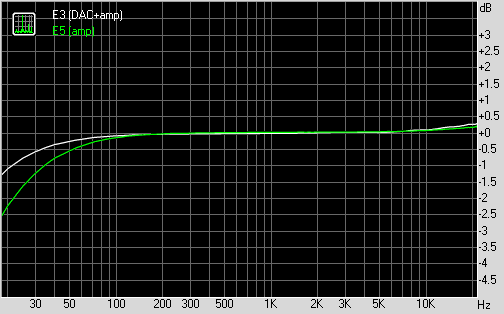
Judging from the measurement data as well as knowing both are using the same chip, I’ll make a guess that the amp section of E3 should be quite similar to that of E1 in topology. So do they sound the same as pure amp? Well, not identically. For the most part, E3 carries the same warmish sound signature as E1. But the difference is that E3 doesn’t have the problem of lacking air and depth. That makes E3 slightly less textured and sweet but more balanced with better perception of layer and detail. When used as USB DAC, the difference only makes clearer where E1 is more musical in presentation where E3 is more neutral. To put it short, E3 is ‘E1 with clarity’ with sound quality that is comparable to many sub-$100 portable amps.
While it is good that E3 is better than E1 overall, the killer feature that you are getting your money worthwhile is really on the aptX supported Bluetooth. Pairing with aptX capable smartphone, it is almost as good as wired, except you will be bypassing your smartphone internal DAC but instead using E3’s DAC, the very decent TI’s PCM5122, and a more powerful amp section. Of course, you can also opt for E3’s USB OTG function as well, and E3 will actually also charge your smartphone at the same time (though I don’t think it have enough juice to really replace a power bank). The sound quality actually isn’t too far off on either Bluetooth with aptX or USB OTG, it is really down to your own preference. Both will cure a weak smartphone’s headphone-out and gives you a mic and remote. Personally, I think this is more useful as a Bluetooth setup. Do however note that E3 only supports 16/44.1 on either connection, not the full 24/96 on PC.
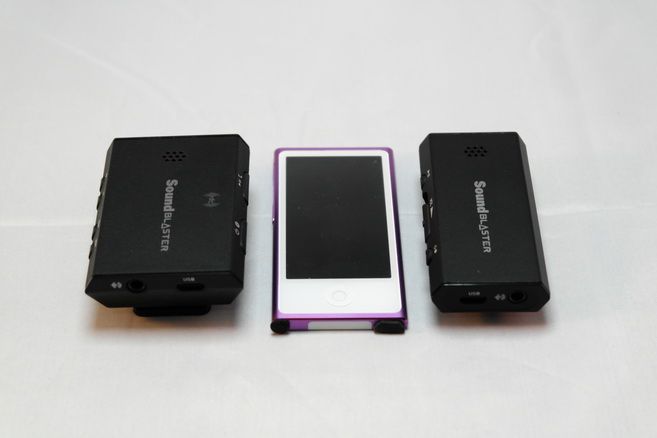
Size comparison (from left): E3, iPod nano 7G, E1

E3 in action, fed by a Sony Xperia Z2 via USB OTG.
In Sum
Built on the unique set of features found in E1, Creative further squeeze in almost every imaginable feature into E3. While you can find a USB DAC or a portable amp in the same price range that is better sounding than E3, you probably won’t find another one like E3 that can do them all, yet do them well enough and doesn’t shatter the bank account. It is a multi-tool of an audio accessory for the smart age, designed for those who demand better sound quality than their smartphone yet doesn’t want to lump around a stack of gears.
A thank to Creative for the review sample.

Spec
Analog Output: Stereo
SNR: 112dB
Headphone Out: 1 x 3.5mm jack
Headphone Out / Mic In: 1 x 3.5mm jack
Line In: 1 x 3.5mm jack (4-pole)
Headphone Impedance: Up to 600 Ohms
Audio Technologies Supported: SBX Pro Studio, CrystalVoice, Scout Mode
Max. Playback Quality
USB 2.0 (PC/Mac): Stereo - up to 24-bit / 96kHz
USB (mobile): Stereo - up to 24-bit / 48kHz
Max. Recording Quality: 24-bit / 48kHz
Battery Life
Bluetooth - Up to 8 hours
Analog Audio Playback - Up to 17 hours
Bluetooth Audio Codec: AAC, SBC and aptX
Bluetooth 2.1 EDR with Multipoint, A2DP and AVRCP, HFP support
NFC supported
Built-in Mono Microphone
Dimensions: 60.5 x 45 x 23 mm (2.38 x 1.77 x 0.90 inches)
Weight: 44 grams
MSRP: USD$130


Accessories and Build Quality
Like E1 I have reviewed, E3 is also packed in a pretty decent looking box. Accessories are similar as well – you will still get a USB cable for charging / connection to PC and a fairly long TRRS 3.5mm stereo cable to connect to your smartphone’s headphone jack. The one extra accessory is a (male)microUSB-to-(female)USB OTG cable that will be required if you want to use E5 as an USB DAC with your smartphone (*plus another male-to-male USB OTG cable of your own supply that connects the smartphone to the E5’s OTG cable).
Though the construction is all plastic, E3 doesn’t feel cheaply made. For the purpose of being a clip-on portable devices, it is probably more sensible to use plastic anyway. The design is similar to E1, but with more bottom to support for digital volume and next/previous control. The extra features also make E3 a thicker device, and the non-removable back clip isn’t helping. Besides having just about every features found on E1 (i.e, built-in mic, dual headphone-out, line-in, software package for PC gamer, etc), E3 also spots USB OTG function that allows it to be used as USB DAC with some Apple and Android smart devices. Another welcoming features is Bluetooth with aptX support. All of these are making E3 one of the most versatile accessories for smartphone user that doesn’t cost an arm or a leg.


Gain, Hiss, EMI and Battery Life
As an USB DAC+amp, E3 can pump out a max voltage of roughly 2.1Vrms, which is pretty high. As a pure amp, it has a gain of about 10dB. In fact, the gain might be a bit too high for most fairly sensitive headphone in the market. I’ll have to keep the Windows volume setting down to around and often under 10/100 to make sure I am not going to blast myself into early deafness. With very sensitive IEM, I even find 2/100 can be plenty loud – and this is not only just a simple volume issue. As E3 uses Windows internal digital volume control, it is definitely going to lose some bit depth when pushing the volume so low. The only consolation is that I didn’t hear any obvious degradation of sound quality, likely thanks to its 24bit support. But truth being told, E3’s gain is simply too high to be practical as a PC soundcard, though it might be just right for smartphones’ weak output. This is probably my only real complaint about E3. It would have been great if it has a gain switch for a lower gain setting.
On the other hand, hiss performance is great when it is connected to PC via USB cable or a Bluetooth source as it is pretty much silence even with my most sensitive IEM. But once disconnected from PC and acting as a pure amp, there is some background hiss that is noticeable when no music is playing. EMI is basically a non-issue as E3 is dead silent even next to a cell phone receiving call.
Creative is quoting a battery life of 8 hours with Bluetooth and 17 hours as pure amp. Of course, the actual battery life does vary depend on how you are using it. I never really use E3 as a pure amp but as far as Bluetooth goes, Creative’s number seems to be about right.


Sound Quality
RMAA measurement doesn’t reveal any major problem when E3 is used as either a pure amp or as an USB DAC+amp. The only thing to take note is the bass roll-off under 100Hz. It drops down to -2.3dB when used as a pure amp, or -1dB when used as a USB DAC+amp. The bass roll-off has nothing to do with load so I’ll guess there might be some coupling caps on the input of the amp section for DC protection. There is also very minor increase in treble, but small enough that it can be completely ignored. E3 uses the same headphone driver chip as E1, so the output impedance is very similar, just under 2.5ohm. Output current is similar as well, decent in amount and should be fine except for the more demanding load.

Judging from the measurement data as well as knowing both are using the same chip, I’ll make a guess that the amp section of E3 should be quite similar to that of E1 in topology. So do they sound the same as pure amp? Well, not identically. For the most part, E3 carries the same warmish sound signature as E1. But the difference is that E3 doesn’t have the problem of lacking air and depth. That makes E3 slightly less textured and sweet but more balanced with better perception of layer and detail. When used as USB DAC, the difference only makes clearer where E1 is more musical in presentation where E3 is more neutral. To put it short, E3 is ‘E1 with clarity’ with sound quality that is comparable to many sub-$100 portable amps.
While it is good that E3 is better than E1 overall, the killer feature that you are getting your money worthwhile is really on the aptX supported Bluetooth. Pairing with aptX capable smartphone, it is almost as good as wired, except you will be bypassing your smartphone internal DAC but instead using E3’s DAC, the very decent TI’s PCM5122, and a more powerful amp section. Of course, you can also opt for E3’s USB OTG function as well, and E3 will actually also charge your smartphone at the same time (though I don’t think it have enough juice to really replace a power bank). The sound quality actually isn’t too far off on either Bluetooth with aptX or USB OTG, it is really down to your own preference. Both will cure a weak smartphone’s headphone-out and gives you a mic and remote. Personally, I think this is more useful as a Bluetooth setup. Do however note that E3 only supports 16/44.1 on either connection, not the full 24/96 on PC.

Size comparison (from left): E3, iPod nano 7G, E1

E3 in action, fed by a Sony Xperia Z2 via USB OTG.
In Sum
Built on the unique set of features found in E1, Creative further squeeze in almost every imaginable feature into E3. While you can find a USB DAC or a portable amp in the same price range that is better sounding than E3, you probably won’t find another one like E3 that can do them all, yet do them well enough and doesn’t shatter the bank account. It is a multi-tool of an audio accessory for the smart age, designed for those who demand better sound quality than their smartphone yet doesn’t want to lump around a stack of gears.
A thank to Creative for the review sample.
ClieOS
In most case, I do think the signal quality gets degraded faster with analog than digital volume.
originalsnuffy
I like the concept. Some of the specs; not so much. But I had not thought of a USB/DAC with APT/X bluetooth before.
Now add 24/192 and make it smaller.... Or maybe add in Apple's version of proprietary wireless hifi also.
Now add 24/192 and make it smaller.... Or maybe add in Apple's version of proprietary wireless hifi also.
kumaiti
One important detail that nobody bothered to mention (or I missed some obvious driver installation step):
The E3 DOES NOT SUPPORT 44.1/16 on Windows 10.
The smallest sample rate it does on the PC is 48, which makes it very strange that they say it can do 44.1 on Android/iOS.
The E3 DOES NOT SUPPORT 44.1/16 on Windows 10.
The smallest sample rate it does on the PC is 48, which makes it very strange that they say it can do 44.1 on Android/iOS.





